
Em julho de 2003, um grupo de fazendeiros do Pontal do Paranapanema, no oeste paulista, resolveu posar para o Jornal Nacional com armas em punho. Eles anunciavam a formação de um ‘centro de treinamentos’ onde se preparavam para resistir às ações do MST. Lula havia chegado ao poder – e, com ele, crescia o temor de uma reforma agrária. O objetivo era apresentar poderio paramilitar para intimidar os camponeses, com armas proibidas no Brasil ou de uso restrito às Forças Armadas.
Segundo investigações da polícia e da CPI da Terra, de 2005, os milicianos rurais eram ligados a Luiz Antônio Nabhan Garcia, fazendeiro da região e presidente da UDR, a União Democrática Ruralista. Hoje, ele é secretário especial de Assuntos Fundiários do Ministério da Agricultura – em outras palavras, o responsável demarcações de terras e a reforma agrária.
Assim que assumiu o cargo, Nabhan seguiu a cartilha do governo e chamou o Movimento dos Trabalhadores Rurais Sem Terra, o MST, de “organização criminosa”. Diz que não negociará com os sem-terra. E defendeu a revisão dos assentamentos de 350 mil famílias nas últimas três décadas e o fim das escolas rurais do movimento, responsáveis pelo ensino a 200 mil crianças e adolescentes. “Fabriquinhas de ditadores”, classificou.
Devem passar por sua mesa a distribuição – ou não – de terras e a produção nos assentamentos – ao quais ele se refere como “favelas rurais”. Além da verborragia, que o aproxima de Bolsonaro, Nabhan também tem um histórico com “jagunços”, milicianos armados usados para proteger terras de possíveis invasores, na conflituosa região do Portal do Paranapanema, no oeste paulista.
Carabinas, pistolas, fuzis e muniçãoA ligação de Nabhan Garcia com a violência na região está documentada e detalhada na tese de livre-docência do historiador Adalmir Leonídio, defendida na Esalq-USP em 2010. O Pontal do Paranapanema tem um longo histórico de crise fundiária, mas foi no início do governo Lula que a tensão entre os fazendeiros e o MST se acentuou.
“Os grandes fazendeiros se mobilizavam para evitar a reforma agrária”, diz Leonídio. Alguns integrantes do grupo, segundo a reportagem do Jornal Nacional, eram “jagunços e pistoleiros trazidos do Mato Grosso”. Já o Estadão noticiou que a milícia, capaz de operar com fuzis AR-15, praticava “tiro ao alvo”. Foi um escândalo. A Polícia Federal reagiu e o Senado também, com a abertura de uma CPI para investigar as milícias rurais da região.

A manchete é sobre o MST, mas quem aparece na foto são os fazendeiros armados para enfrentarem os sem-terra.
Reprodução
Dias depois, o fazendeiro Manoel Domingues Paes Neto foi preso em flagrante pela Polícia Federal por porte ilegal de armas. Sua família é amiga de Nabhan e dona de uma fazenda próxima à dele, em Sandovalina. Foram apreendidas com Paes
Neto carabinas, pistolas, fuzis e munição. Segundo ele, parte do armamento pertencia a Nabhan. E os capangas eram bombeiros e policiais militares, aposentados e da ativa, a grande maioria do Mato Grosso do Sul.
Segundo o depoimento de Paes Neto, a reportagem havia sido gravada em uma das fazendas de Nabhan Garcia, a São Manoel. O fazendeiro também contou que foi convidado por Nabhan, junto com o pai, para participar da foto; ambos declinaram, pois já eram investigados por outros crimes. E mais: disse que o próprio Nabhan García aparecia na foto junto aos milicianos – ele seria o quinto da esquerda para a direita, com o rosto coberto, como os outros, usando um boné da Mercedes-Benz.
Agindo como homemNabhan negou todas as acusações e alegou que o depoimento havia sido obtido sob tortura. Depois de receber assessoria jurídica da União Democrática Ruralista, Paes também passou a negar as informações dadas e afirmar que foi coagido a fazê-las. Ele chegou a registrar em cartório a acusação contra a delegada Míriam Takano.
Na Comissão Mista Parlamentar de Inquérito da Terra, concluída em 2005, a delegada se defendeu das acusações. Lembrou que o depoente estava acompanhado de seu advogado quando apontou Nabhan e outros fazendeiros como responsáveis pelo armamento. E disse que Paes foi levado ao Instituto Médico Legal, que não constatou nenhum sinal de violência.
O relatório final da comissão, apresentado pelo deputado João Alfredo, do PSOL cearense, defendeu o indiciamento de Nabhan e de outros fazendeiros pelos crimes. Deu em nada. O texto foi rejeitado pela bancada ruralista, que acabou aprovando um relatório alternativo, com ataques aos sem-terra, sem responsabilizar os ruralistas. O relatório dos ruralistas, encabeçado por Abelardo Lupion, do DEM paranaense, outra figura que vem ganhando destaque no governo Bolsonaro, tornou-se o oficial.
Paes não quis posar para a foto da milícia rural porque já havia sido preso, em 1997, por atirar em um grupo de sem-terras. Ele e quatro jagunços da fazenda São Domingos foram autuados em flagrante. Um homem e uma mulher ficaram gravemente feridos, por disparos na barriga, e um adolescente de 13 anos foi atingido de raspão na cabeça.

Durante a discussão da CPMI da terra, o encontro do MST com Nabhan foi inevitável. Na foto, o militante João Paulo e o então presidente da UDR.
Foto: Lula Marques/Folhapress
Uma entrevista dada pela mãe de Paes ao jornal Oeste Notícias dá a dimensão de como os fazendeiros da região viam esses casos de violência. Ela se dizia “apreensiva e orgulhosa” com a prisão do filho. Dizia que “ele fez o que deveria ser feito” e que esperava que ele continuasse da mesma forma, “agindo como homem”.
Soltos dias depois, os jagunços foram retirados da delegacia no carro de Nabhan, como mostravam imagens de TV anexadas ao relatório rejeitado pela CPI. Como presidente da União Democrática Ruralista, ele organizou um churrasco para comemorar a libertação de Paes e deu declarações em sua defesa à imprensa.
Paes e seu pai, Osvaldo, foram presos novamente em 2000, quando foram apreendidas 21 armas e mais de 5 mil cartuchos dentro da fazenda, inclusive uma submetralhadora. Ele ainda se envolveria em outro caso de violência em 2004, quando agrediu a coronhada um funcionário da fazenda, João de Souza Filho, o João Bambu. Com a vítima desacordada, as agressões teriam prosseguido. Uma faca e um martelo sujos de sangue foram encontrados no local. O Ministério Público apresentou denúncia contra Paes por tentativa de homicídio, mas a Justiça em primeira instância o condenou por lesão corporal gravíssima “por deformidade permanente”. Nas redes sociais, Paes aparecia no ano passado fazendo campanha pela eleição de Bolsonaro.
Terra empapada de sangue é terra boaA violência dos ruralistas no Pontal tem uma razão histórica: a maioria das terras da região foi obtida na base de fraudes e da lei do mais forte. Segundo um levantamento feito em 1995 pelo Instituto de Terras do Estado de São Paulo, pelo menos 440 mil hectares dos 900 mil hectares da região eram de terras públicas irregularmente ocupadas. Nos anos 1980, o governador Franco Montoro já havia tentado regularizar as terras da região, em acordo com os fazendeiros.
Nos anos 1990, foi a vez de Mário Covas propor um novo plano. Os resultados foram pequenos e novas fraudes foram descobertas. Como Covas queria regularizar todas as fazendas com até 100 hectares, muitos ruralistas fracionaram suas fazendas para entrar no acordo sem ter de devolver um milímetro sequer para o verdadeiro dono da terra – o governo.
Se eram conquistadas na base de crimes, as grandes fazendas da região foram mantidas com o uso de violência, seja contra indígenas expulsos das terras onde moravam ou para afastar posseiros menores. Esse método era muito anterior à organização do MST no Pontal, iniciada nos primeiros anos da década de 1990. A tese de Adalmir Leonídio para a Esalq-USP mostra que, desde os anos 1930, a região era alvo dos chamados quebra-milho, precursores dos capangas e jagunços que atuaram na região nas décadas seguintes.
Uma frase atribuída ao coronel Alfredo Marcondes Cabral, um dos líderes políticos da região em meados do século passado, mostra o pensamento desses grandes grileiros: “Terra empapada de sangue é terra boa”.
Fundada em meados dos anos 1980 para combater os planos de reforma agrária apresentados nos primeiros anos da redemocratização, a União Democrática Ruralista teve entre seus primeiros líderes o hoje governador goiano Ronaldo Caiado, do DEM, e Plínio Junqueira, ambos de famílias tradicionais na política e donas de grandes áreas de terras. A ascensão de Nabhan se deu em função da proximidade com Junqueira e do discurso contundente.
“Ele se destacava pela clareza para apresentar suas ideias e a capacidade midiática”, diz Leonídio.
Os grupos paramilitares armados sempre tiveram apoio da União Democrática Ruralista. Desde o início, a entidade promoveu leilões de gado para arrecadar armas para a formação de grupos. A regional do Pontal do Paranapanema foi uma das primeiras a serem criadas, e muitos dos líderes da UDR eram da região. No Paraná, onde o vice-presidente da entidade, Marcos Menezes Prochet, foi condenado como mandante do assassinato de um líder sem-terra cometido no final dos anos 1990, os fazendeiros chegaram a anunciar a criação do Primeiro Comando Rural – nome inspirado no Primeiro Comando da Capital, o PCC.

Em campo, o historiador Adalmir Leonídio flagrou placas do MST que denunciavam as ameaças na Fazenda São Bento, no Portal do Paranapanema.
Foto: Adalmir Leonídio/CC
“Havia outros fazendeiros que tentavam fazer acordo com o governo e os sem-terra, mas a política deles era se armar”, diz Leonídio. Pelo menos três presidentes da UDR antes de Nabhan já defendiam o armamento e o uso da força pelos ruralistas. Nos anos 1990, equipes de reportagem do SBT e da Agência Estado foram atacados por jagunços de fazendas da região.
Comandante da PM na cidade de Teodoro Sampaio na época, o oficial Renato Ryukiti Sanomiya chegou a relatar que teve de disparar uma rajada de metralhadora para o ar para mostrar que os policiais tinham armamento suficiente para resistir a um ataque dos jagunços.
Em agosto de 2004, o então ouvidor agrário nacional, Gercino José da Silva, denunciou ao Ministério Público Estadual a presença de 70 jagunços armados na fazenda Nazaré, em Marabá Paulista. Segundo ele, o grupo ameaçava de morte integrantes do MST acampados em uma fazenda vizinha. Sabrina Bitencourt, mediadora de conflitos do Instituto Nacional de Colonização e Reforma Agrária, o Incra, constatara a presença do bando. O prefeito da cidade acionou Nabhan na UDR, que divulgou uma nota contra o ouvidor e ameaçou processá-lo, por “denunciação caluniosa e por infringir o princípio da legalidade”.
Em reportagem de O Estado de S.Paulo, Nabhan disse na época que os proprietários contrataram “alguns funcionários, e não jagunços, para evitar crimes de danos, destruição, furto e incêndio”.
Armado até no sonoNabhan era especulado na época da transição como um nome forte para o ministério de Jair Bolsonaro. Com a nomeação da deputada Tereza Cristina, presidente da Frente Parlamentar da Agropecuária, como ministra da Agricultura, Nabhan se contentou com um cargo no segundo escalão. Nada mal para quem conseguiu menos de 12 mil votos para deputado federal em 2006, sua única experiência em eleições.
Como secretário de assuntos fundiários, cabe a Nabhan negociar demarcações de terras indígenas, quilombolas e com movimentos sociais como o MST – cujos acampamentos ele chama de “favelas rurais”. Nabhan já prometeu “passar a limpo as questões fundiárias no Brasil” e diz que não há dinheiro para a reforma agrária.
Em um governo que prega o armamento da população e a expansão das fazendas em territórios tradicionais, entende-se porque Nabhan – que já disse dormir sempre com uma arma ao alcance – tenha sido escolhido como mediador.
Tentamos contato com Nabhan Garcia para comentar os fatos desde segunda-feira, 18. Entramos em contato com a assessoria do Ministério da Agricultura e diretamente com o secretário, por telefone e e-mail. Se ele responder, este texto será atualizado.
The post Milícias e fuzis: as más companhias de Nabhan Garcia, o homem de Bolsonaro para a reforma agrária appeared first on The Intercept.

Sen. Bernie Sanders, the Vermont Independent whose 2016 campaign for the presidency helped shift the Democratic Party to the left on issues like “Medicare for All” and free college tuition, announced on Tuesday that he is running for president again. The self-described democratic socialist immediately set an ambitious target for his supporters, calling on them “to be part of an unprecedented grassroots campaign of 1 million active volunteers, in every state in our country.”
I'm running for president. I am asking you to join me today as part of an unprecedented and historic grassroots campaign that will begin with at least 1 million people from across the country. Say you're in: https://t.co/KOTx0WZqRf pic.twitter.com/T1TLH0rm26
— Bernie Sanders (@BernieSanders) February 19, 2019
Sanders made the appeal across his popular social media accounts, in a variety of forms.
Have you joined the team yet? Add your name to say you're in: https://t.co/RPn2ahN7rq pic.twitter.com/nqc7sqKBRc
— Bernie Sanders (@BernieSanders) February 19, 2019
The appeal was also featured in an 11-minute YouTube video, in which Sanders laid out the rationale for his campaign, offering far more specifics on policy than rivals like Sen. Kamala Harris, whose website lacks a policy section.
Hours before Sanders joined the race, Harris was asked by Fox News if his popularity in New Hampshire meant that she needed to move further to the left to compete in that state’s primary. “I will tell you that I am not a democratic socialist,” she replied.
2020 Watch: @KamalaHarris -in NH-asked about having to move to the left to compete with @BernieSanders – tells @pdoocy “I am not a Democratic socialist” #nhpolitics #FITN #2020election pic.twitter.com/hrMAAxCyp3
— Paul Steinhauser (@steinhauserNH1) February 18, 2019
Another rival who is far closer to Sanders on the issues, and who has laid out specific, radical policies, Sen. Elizabeth Warren, has attempted to distinguish herself from him by telling reporters, like Ruby Cramer of Buzzfeed News, that the core difference between the two is that “he’s a socialist, and I believe in markets.”
“I am a capitalist,” Warren told John Harwood of CNBC last year. “I believe in markets. What I don’t believe in is theft; what I don’t believe in is cheating,” she added.
In an interview with CBS News, Sanders dismissed concerns that President Donald Trump would try to associate him with the collapse of Venezuela’s socialist experiment and defended his brand of democratic socialism in common-sense terms. “When I talk about democratic socialism, if somebody wants to call me a radical, okay, here it is: I believe that people are inherently entitled to health care,” Sanders said. “I believe people are entitled to get the best education they can. I believe that people are entitled to live in a clean environment.”
Sanders, who would be the oldest nominee ever, at 79 on election day in 2020, told Vermont Public Radio on Tuesday morning that his age should not be a factor in the race. “We have got to look at candidates, not by the color of their skin, not by their sexual orientation or their gender and not by their age,” Sanders said, adding that he has been blessed with good health and still has “a great deal of energy.”
“I think we have got to try to move us toward a nondiscriminatory society which looks at people based on their abilities, based on what they stand for,” he added.
The Sanders campaign reported that it had received more than $1 million in donations, from supporters in all 50 states, less than four hours after he announced his run.
The post Bernie Sanders Is Running for President and He Wants 1 Million Campaign Volunteers appeared first on The Intercept.

Two of the Republican Party’s biggest corporate allies — agribusiness and the fossil fuel industry — are waging an epic, if obscure, battle in the halls of Congress. And Big Oil, through its proxies in the Senate, has taken a hostage: Acting Environmental Protection Agency Administrator Andrew Wheeler.
After the Senate Environment and Public Works Committee advanced Wheeler’s nomination for permanent EPA chief on a party-line vote, a group of five senators issued a veiled threat to the nominee: Promise to rewrite regulations on renewable fuels that are more favorable to oil refineries, or forget about being confirmed.
It’s a fight without a decent resolution for any human being needing to breathe clean air or inhabit a sustainable planet. The prodigious amount of energy used in producing corn-based biofuels is not much cleaner than the energy from burning oil-heavy gasoline. The fight is more over who will get to earn more money in the final, dying days of dirty energy dominance. It’s also a preview of the kind of battles that the advocates of a Green New Deal will have as they take on entrenched incumbent industries who have been spending heavily, for years, to generate government favors they are loathe to see disappear.
The regulation at issue is called the renewable fuel standard, or RFS, which requires all gasoline sold in America to contain a minimum volume of renewable sources — which are dominated by corn-based ethanol. Big Ag wants the standard to be higher; Big Oil wants to be free from the corn burden.
The oil-backed senators are mimicking a tactic used previously by their colleagues representing corn-producing states, who successfully made a similar threat to a lower-level EPA official in 2017, in exchange for guarantees that refiners would be required to blend more ethanol into gasoline.
The biggest player of all in this debate is Trump confidant and corporate raider Carl Icahn, who remains under investigation for using his role as a White House deregulatory czar to try to tip the scales in favor of oil refiners, which would have benefited a refinery he owns to the tune of $200 million per year.
The behind-the-scenes fight is symptomatic of a growing trend in an increasingly corporate-controlled government. In the Second Gilded Age, senators have become little more than traffic cops, mediating the grievances of competing sets of business giants. And Wheeler, himself a former lobbyist for all sorts of energy companies, has gotten caught in the middle of the latest showdown.
The situation is made stranger by the fact that the hostage-takers — the oil-state senators seeking guarantees from Wheeler — have been winning under the Trump administration. Refiners have seen compliance costs for biofuel blending drop fourfold since 2017 and have benefited from a significant ramp-up in discretionary waivers from the EPA, including for Icahn’s refinery.
“These senators, and Icahn, are saying that right now, what you’re doing is fine, but we need a long-term solution to rid us of this obligation,” said Tyson Slocum, director of Public Citizen’s Energy Program and an adviser to the Commodity Futures Trading Commission. “What’s very interesting here is the continuing fight within the core Republican base, between Big Ag and Big Oil.”
One of the more arcane elements of the current rule is that oil refiners are responsible for making sure the rule is followed — not the gasoline wholesalers (or “blenders”). In regulatory-speak, this is known as the “point of obligation.”
If a refiner does not blend enough ethanol, they can purchase renewable fuel credits, known as renewable identification numbers, or RINs, from those who have over-blended, to comply with their obligation. It’s sort of a cap-and-trade system for biofuels, ensuring that the required amount is blended into the nation’s fuel supply.
Each side wants something from the RFS. Corn producers want the EPA to mandate higher levels of biofuel blending. In a midterm visit to Iowa, President Donald Trump approved a year-round “E15” ethanol mandate, requiring 15 percent of the product to be placed into gasoline. Under current law, ethanol blends are reduced in the summer, over concerns that E15 produces more smog (which corn producers, of course, contest). That regulation has yet to be finalized, and corn producers have lobbied heavily to complete the task.
Refinery interests simply want somebody else to do the blending, freeing them from either having to undergo the costly process of blending themselves, or purchase RINs to satisfy the regulation. If the point of obligation were shifted from refiners to gasoline wholesalers, it could save some refiners a fortune — particularly CVR Energy, the refinery company of which Icahn is the majority owner. CVR does not have the infrastructure to blend ethanol, and in 2016 it spent $205.9 million on RINs.
When Icahn received the formal title of White House special adviser on regulatory reform, in 2017 —without having to divest from any of his stocks — he got right to work. The Trump administration started floating that it would change the point of obligation. And an ethanol lobbying group suddenly struck a deal with Icahn: It would support a change in the point of obligation, in exchange for year-round E15. It even wrote the executive order with the policy update.
Amusingly, the Renewable Fuels Association, which reached the deal with Icahn, includes the renewable division of Valero Energy, the oil giant which, like Icahn, owns refineries that cannot blend ethanol.
This all eventually blew up in Icahn’s face. Senate Democrats demanded an investigation into whether Icahn violated conflict of interest laws. Under criticism, Icahn resigned from his White House adviser position in August 2017. By November, the U.S. attorney in the Southern District of New York had subpoenaed Icahn for “information pertaining to … Mr. Icahn’s activities relating to the Renewable Fuels Standard and Mr. Icahn’s role as an advisor to the President.”
This would all be terrible for Icahn if he hadn’t profited handsomely from his meddling. The trading price for RINs has dropped from 90 cents after Trump’s election in November 2016 to 20.5 cents today. One reason for that is that the EPA has been rapidly handing out “financial hardship waivers” to refiners to exempt them from the point of obligation requirements, including to Icahn’s CVR Energy in April 2018.
We don’t know precisely how many waivers the EPA has granted, because the agency initially kept that information secret. But Reuters has reported that 29 refineries across the country received them in 2018, including such financially strapped companies as Exxon Mobil. That’s up from just seven waivers in 2015, and it translates into sharply lower demand for RINs, causing the price to drop. (Icahn was also shorting the market for RINs, profiting off the plummeting prices.)
The hardship waivers have led to reduced ethanol blending overall — 2.25 billion fewer gallons annually, according to one report. The EPA says its hands are tied by court rulings to give hardship waivers to “small refiners” who cannot afford blending or RINs. Corn producers are not buying it, arguing that such actions throw the biofuels market into chaos. “There’s no good reason multibillion-dollar oil refining giants should be able to skirt the law,” Sen. Chuck Grassley, R-Iowa, told Reuters in December.
These developments, however, have made it a good time to be a refiner, though it’s a temporary solution, Slocum said. “[Refiners] accurately understand that these low RIN prices are not a given going forward.”
With Wheeler seeking confirmation as permanent EPA director, both Big Oil and King Corn saw a point of leverage. Wheeler’s confirmation hearing was suffused with talk of this relatively minor renewable fuels issue.
Corn-state senators, like Mike Rounds, R-S.D., demanded clarity on finalizing the year-round E15 rule — Wheeler committed to finalizing the rule by summer — while hitting the EPA on hardship waivers. “I don’t think the intent of Congress was that [hardship waiver granting] reduces the total amount of ethanol that is actually being marketed,” Rounds said. Republican Sens. Joni Ernst of Iowa and Kevin Cramer of North Dakota also pushed Wheeler on ethanol.
Meanwhile, oil-state senators pushed back. “Corn is not the only stakeholder in this program,” bellowed Sen. James Inhofe, R-Okla., despairing of real-world costs borne by refiners. “There is growing concern the administration is only listening to one side of the argument and that those arguments are not based on actual real-world conditions.”
The near-term issue is that the EPA must regularly reset how many gallons of biofuels the market is required to produce, based on market conditions. Wheeler said in his testimony that the agency would propose a reset sometime in February.
After the hearing, the oil lobby escalated the fight. Five Republican senators — Texas’s Ted Cruz, Louisiana’s Bill Cassidy and John Kennedy, Pennsylvania’s Pat Toomey, and Utah’s Mike Lee (Utah has a couple major refineries within its borders) — wrote a letter to Wheeler on February 11. “As we continue to evaluate your nomination to be Administrator,” the Senators wrote, “it is important that we have a better understanding of your views and approach to administering the RFS (renewable fuel standard). … [W]ithout an adequate proposal to meaningfully lower the regulatory burden of Renewable Identification Numbers (RINs), we will have serious concerns with your nomination.”
There was no need to read between the lines. The oil-state senators want Wheeler to lower that reset to reduce costs on refiners, or they will vote no on his confirmation. They also want him to continue issuing hardship waivers to refiners, without reallocating the waived amounts to nonexempted refiners. And they asked for an unspecified “reform” of the RIN market to prevent manipulation (which represented some rare interest from Republicans in market manipulation of any kind).
While Icahn was not formally involved with the letter, and while he has not traditionally been a donor to the Republicans on the letter (except for one small donation to Toomey in 2010), Slocum speculated that he had some involvement. “Just because we’re not seeing Icahn’s name, that doesn’t mean he’s sitting on the sidelines,” Slocum said. “He’s too big a player on this issue.”
The fact that Republican senators would threaten the confirmation of Wheeler, one of the most fossil fuel-friendly EPA administrators ever to hold the job, boggles the mind. Especially because, as acting administrator, Wheeler has continued to hand out hardship waivers like candy. But because Democrats are expected to be almost entirely opposed to Wheeler’s confirmation, the votes of these five senators could absolutely block his appointment.
That said, a coalition of corn-state senators could also be in a position to block Wheeler. In fact, in 2017, Ernst blocked the confirmation of Bill Wehrum, who runs the EPA office that deals with the biofuel mandate, until the Trump administration backed down on changing the point of obligation.
“You have two very powerful core Republican corporate constituencies going to battle with each other,” said Slocum. “And a full-time professional lobbyist who’s represented corporate interests is the key influencer who will play some role in brokering a compromise.” That compromise is difficult to see, as any relief for refiners will likely be reflected in lower demand for corn-based ethanol.
But this is Washington’s role these days: picking and choosing which industry to gift and which to burden.
The post Big Corn and Big Oil Are Warring Over Trump’s Nomination of Andrew Wheeler appeared first on The Intercept.

Desde sexta-feira, dia 8, uma foto emblemática escancarou o racismo e a supremacia branca no Brasil. Nela, Donata Meirelles, então diretora da Vogue Brasil, uma mulher branca, aparece sentada numa cadeira utilizada pelas mães de santo no Candomblé cercada de figurantes negras vestidas com roupas tradicionais de baianas – saias longas rodadas, batas brancas, panos da costa, turbantes, múltiplos colares dourados e prateados, brincos e pulseiras. A imagem fatídica era clara: negros em posições subjugadas ao lado de uma branca em um cenário onde a cultura negra é apropriada com fins festivos – Donata celebrava seus 50 anos. Oitenta por cento da população de Salvador é negra, mas a indústria de turismo que vive da imagem de homens e mulheres negras é branca. “Sorria, você está na Bahia!” Donata se desculpou e pediu demissão da revista.
Nem uma semana depois de as imagens da festa evocando a escravidão gerarem uma onda de revolta nas mídias sociais, um jovem negro de 19 anos foi assassinado por um segurança no supermercado Extra no Rio de Janeiro. Pedro Henrique Gonzaga foi morto a sangue frio, depois de ter sido sufocado até a morte pelo segurança, diante de várias testemunhas, algumas das quais alertaram para a morte iminente do jovem.
Estrangulado como Eric Garner – que sucumbiu depois de um abraço mortal de um policial em julho de 2014 nos Estados Unidos e uma comoção nacional –, o brasileiro Pedro Gonzaga agora faz parte das estatísticas assustadoras que mostram que quase 75 % das vítimas de homicídios são negros, a maioria jovens. A revolta contra o racismo de Donata e o assassinato a sangue frio de Pedro são como chagas abertas num país que nunca indenizou nenhum ex-escravo e seus descendentes pelo período no cativeiro. Nenhuma sociedade escravista nas Américas pagou reparações aos antigos escravizados.
Mas o que pouco se sabe é que a luta das populações afrodescendentes contra o racismo e para obter reconhecimento nas mais diversas esferas, tanto no Brasil como nos Estados Unidos, data desde o fim do período da escravidão. E os pedidos de reparações financeiras e materiais pela escravidão continuam em voga nos dias de hoje.
Indenização só a quem escravizouDesde o século 18, escravos e libertos começaram a conceitualizar a ideia de reparações em correspondência, panfletos, discursos públicos, narrativas de escravos e petições judiciais, redigidos em inglês, francês, espanhol e português. O sistema escravista tinha base legal, mas escravos e ex-escravos tinham plena consciência de terem sido vítimas de uma injustiça. Eles sabiam que ao fornecer trabalho não remunerado aos seus proprietários estavam contribuindo para construir suas riquezas. Vários são os casos de pessoas escravizadas ilegalmente que pediram reparações pelo tempo em que viveram no cativeiro.
Entre 1804 e 1888, todas as sociedades nas Américas aboliram a escravidão. Mas o fim da escravidão foi um processo lento e gradual. Mesmo em regiões vistas como paraísos da liberdade, como o norte dos Estados Unidos e o México (onde a escravidão foi abolida mais cedo do que em muitas regiões do continente americano), o fim da escravidão foi um processo longo. Do norte ao sul das Américas, as elites escravistas temiam o fim do sistema servil. Os senhores enfatizavam que a escravidão e o comércio de escravos eram atividades legais e que os direitos de propriedade deveriam ser respeitados acima de todos os direitos.
Alguns abolicionistas até chegaram a chamar atenção para a necessidade de reparações aos ex-escravos e seus descendentes, por meio da redistribuição de terras, salários e educação. Luiz Gama, por exemplo, muitas vezes denunciou publicamente o tráfico ilegal de africanos depois da assinatura da lei de 1831. Na realidade, 786 mil africanos escravizados chegaram no Brasil entre 1831 e 1856. Em 1883, nas páginas do panfleto da Confederação Abolicionista Luiz Gama chegou a calcular o montante devido em salários aos escravizados: “Realmente são insaciáveis os parasitas do trabalho africano! Fazem, por ventura, ideia da soma, que devem em salário às gerações, que se sucederam no cativeiro durante três séculos?” Tomando em conta apenas o número de 1,5 milhão de escravizados que aqui residiam (na verdade, o Brasil importou mais de três vezes esse número de africanos), Gama calculou que mais de R$ 18 bilhões de reais lhes eram devidos.
Ao abolir a escravidão em 1848, a França pagou 6 milhões de francos aos escravocratas.Mas isso foi exceção. O que realmente prevaleceu nos debates públicos era a questão de como compensar financeiramente os proprietários de escravos pela perda da propriedade escrava. Em outras palavras, o fim gradual da escravidão nas Américas durante o longo século 19 foi planejado para proteger os interesses dos senhores de escravos e proprietários de terras, que em diferentes graus recebiam pelo menos algum tipo de compensação monetária.
Após abolir a escravidão em suas colônias em 1834, a Inglaterra indenizou os senhores de escravos. Ao abolir a escravidão em 1848, a França pagou 6 milhões de francos (em vinte prestações com juro anual de 5%) aos antigos proprietários de escravos. Até o Haiti, que aboliu a escravidão e se tornou independente em 1804, teve que pagar a enorme soma de 120 milhões de francos para ter sua independência reconhecida pela França.
Nos Estados Unidos, os senhores de escravos não receberam indenização, mas cabe lembrar que a abolição da escravidão se fez num contexto de uma guerra civil sangrenta que matou 2% da população do país. Ainda durante a abolição gradual da escravidão seja no norte dos Estados Unidos ou no Brasil, as leis do ventre livre previam algum tipo de indenização para os senhores de escravos. Além disso, os proprietários de escravos receberam indenizações quando a escravidão foi abolida na capital Washington DC em 1862.
Belinda entrou na justiça pedindo ao estado uma pensão como forma de reparar o tempo de escravizada na família Royall.Apesar disso, durante a era da abolição gradual nos Estados Unidos, um pequeno número de ex-escravos exigiu que o governo ou seus antigos senhores lhes fornecessem algum tipo de reparação financeira. Uma dessas libertas foi Belinda. Nascida na África Ocidental e trazida para Antigua no Caribe britânico, foi escrava do rico fazendeiro inglês Isaac Royall, que se mudou para a colônia britânica do Massachusetts em 1737.
Após sua morte, seu filho Isaac Royall Junior herdou todas as suas propriedades, inclusive Belinda. Mas quando a Revolução Americana eclodiu em 1775, o herdeiro (leal ao rei da Inglaterra) fugiu para a Inglaterra, deixando em seu testamento uma pensão por um período de três anos para Belinda. Em 1778, o estado do Massachussets confiscou as propriedades de Royall Junior, inclusive seus escravos, que foram então libertados. Logo após ser liberta, Belinda, já com 65 anos, foi viver em Boston e presume-se que tenha recebido a referida pensão. Mas quando o período de três anos terminou e a pensão foi interrompida, ela entrou na justiça pedindo ao estado uma pensão como forma de reparar o tempo em que trabalhou sem ser remunerada para a família Royall. Ela ganhou, mas tinha de entrar com um pedido a cada novo ano. A casa dos Royall, perto de Boston, foi hoje transformada em museu e dá destaque para a história de Belinda.

Petição feita por Belinda para receber a pensão por trabalhar para a família Royall.
Foto: arquivo do Museu Royall House
Nos Estados Unidos, o período que se seguiu à abolição da escravidão trouxe esperanças de redistribuição de terras para os libertos. Mas esses projetos também falharam. A chamada Reconstrução fracassou e, em vez de terra e cidadania plena, a população negra do país se viu privada de direitos e vítima do ódio racial crescente. Foi nesse contexto que, durante a década de 1890, milhares de libertos circularam petições para introduzir no congresso dos Estados Unidos projetos de lei lhes dando pensões pelo tempo em que foram escravizados. Os líderes desse movimento concebiam o pagamento de pensões como reparação financeira pelos muitos anos de trabalho não remunerado que haviam dado aos seus senhores. As atividades desses grupos geraram grandes debates e mobilizaram dezenas de milhares de ex-escravos, mas nunca foram aprovados. Além disso, as autoridades federais perseguiram os líderes do movimento como Isaiah Dickerson e Callie House, que passou um ano na prisão.
Nada parecido aconteceu na América Latina. Embora privados de recursos materiais, em países como o Brasil, provavelmente iludidos pelo canto da sereia da ideologia da democracia racial, os libertos privilegiaram a luta pela cidadania.
Vítimas do holocausto e prisioneiros da II Guerra conseguiramMas no período que se seguiu ao final da Segunda Guerra, esse contexto começou a mudar, especialmente depois que os sobreviventes judeus do Holocausto obtiveram reparações financeiras. Vários grupos que defendiam as reparações surgiram durante a Guerra Fria nos Estados Unidos, enfrentando o estigma de serem constantemente associados ao comunismo. Durante a década de 1960, o movimento ganhou novo sangue com a ascensão de grupos como o Comitê de Reparações para os Descendentes dos Escravos Americanos, liderado pela ativista negra Audley Moore, a República da Nova África e o Manifesto Negro, assinado pelo militante dos direitos civis, James Forman.
No período final da Guerra Fria, o governo dos Estados Unidos pagou restituições financeiras aos nipo-americanos que foram ilegalmente colocados em campos de concentração durante a Segunda Guerra. As décadas de 1980 e 1990 renovaram os pedidos de reparações pela escravidão. Brasil, Colômbia e Equador promulgaram novas constituições reconhecendo o direito de propriedade da terra para suas comunidades negras. Nos Estados Unidos, novas organizações combinando ativismo e ações litigiosas solicitando reparações também emergiram.
Os ecos desse movimento também foram ouvidos na África, onde um grupo de intelectuais, artistas, políticos e ativistas divulgou um documento pedindo reparações para o comércio atlântico de escravos e o colonialismo. Em 2001, a Conferência Mundial Contra o Racismo, Discriminação Racial, Xenofobia e Intolerâncias Correlatas, em Durban, na África do Sul, reconheceu a escravidão e o comércio atlântico de escravos como crimes contra a humanidade. Mais do que nunca, pedidos de reparação adquiriram uma nova força.
Recentemente, em março de 2014, a Comunidade do Caribe (Caricom) aceitou um plano com foco em reparações pela escravidão e pelo genocídio indígena. O programa consiste em dez pontos que compreendem demandas materiais, financeiras e simbólicas dirigidas a vários países europeus como o Reino Unido, Espanha, França, Holanda, Dinamarca, Suécia e Portugal. Esses pedidos de reparações receberam grande atenção da mídia nos países europeus e caribenhos e também nos jornais dos Estados Unidos e do Brasil. Mas apesar desses movimentos e dos debates recorrentes, não houve avanço.
R$ 2 milhões a cada descendenteEsse contexto pode sugerir uma perspectiva pessimista, mas os debates sobre as reparações nas suas mais variadas modalidades continuam muito vivos. Todos os anos novos pedidos de reparação continuam a ser objeto de ações judiciais e permanecem presentes na sociedade por meio de manifestações populares, debates públicos, palestras e encontros internacionais.
No Brasil, a partir da década de 1990, organizações negras lideraram protestos e apresentaram projetos de lei no Congresso Nacional pedindo reparações financeiras ao governo federal brasileiro. Em 1993, estudantes e ativistas negros, membros do Grupo Consciência Negra da Universidade de São Paulo, lançaram o Movimento pelas Reparações (MPR). Em dezembro de 1994, o MPR submeteu uma ação declaratória à Justiça Federal de São Paulo, na qual solicitaram que o estado brasileiro pagasse reparações financeiras aos descendentes de escravos. No documento, pediram ao tribunal que reconhecesse que 70 milhões de afro-brasileiros tinham o direito de receber reparações financeiras do estado brasileiro por 350 anos de escravidão.
Em 2012, Claudete Alves, ativista negra, professora paulista e ex-vereadora da cidade de São Paulo, apresentou uma ação civil pública ao Ministério Público contra o estado solicitando indenização pelos danos causados “a todos os descendentes de africanos escravizados que vivem no Brasil e residem na cidade de São Paulo”. Segundo os advogados de Alves, cada descendente de escravos deve receber R$ 2 milhões. Em 2014, no mesmo ano em que o Caricom, a Comunidade do Caribe, lançou um plano de dez pontos pedindo reparações simbólicas e financeiros a vários países europeus, a Organização dos Advogados do Brasil, a OAB, anunciou a criação de uma Comissão Nacional da Verdade Sobre a Escravidão no Brasil cujo objetivo era examinar o período da escravidão no Brasil e estabelecer modalidades de reparação. Nenhuma dessas iniciativas, porém, tiveram um retorno prático.
Embora muitos grupos tenham privilegiado as reparações de ordem simbólica, o debate sobre as reparações financeiras e materiais, principalmente em relação à propriedade da terra tendem a crescer sobretudo no caso do Brasil, onde o novo governo do presidente eleito Jair Bolsonaro ameaça rever as demarcações de terras quilombolas. Neste momento, mais do que nunca, o estudo da história das reparações pode também nos ajudar lutar melhor contra o racismo, contra as desigualdades raciais e a supremacia branca que dominam as antigas sociedades escravistas, principalmente no Brasil e nos Estados Unidos.
* Esse texto é baseado no livro Reparations for Slavery and the Slave Trade: A Transnational and Comparative History (2017), ainda não traduzido para o português.
The post Nenhum negro foi indenizado pela escravidão no Brasil. Esse debate é mais urgente do que nunca. appeared first on The Intercept.
The Green New Deal has its roots in the ideology of a surprising figure, Robinson Meyer argues: Alexander Hamilton. The former treasury secretary was “the daddy of it all,” the father of industrial policy, which calls for the federal government to guide economic growth through manufacturing and massive infrastructure projects. The plan has yet to gain much bipartisan appeal, but framing it within economic visions of Hamilton could be an emerging playbook for Democrats to transition the Green New Deal into something more politically feasible than a leftist dream.
Bernie Sanders, the independent Vermont senator, entered the 2020 race. He came from nowhere in 2016 to run a strong campaign against Hillary Clinton, and now he’s looking to parlay that success into a victory in a crowded 2020 Democratic field. What’s different for him this time around? His big policy prescriptions advocating for Medicare for All and free college are not as remarkable in 2020, and he can no longer position himself as a foil to Hillary Clinton. Still, he has a deeply loyal following that is expected to donate in droves to his campaign and show up at the ballot box, making him an early 2020 frontrunner.
Are we really on the cusp of an insect apocalypse? Just this month, two researchers concluded that given our current climate trajectory, insects as a whole could vanish within the century. But these claims seem to be more hyperbole than fact: Insects are staggeringly diverse in breadth, with about 1 million discovered species, making it virtually impossible for the type of mass apocalypse some have prognosticated. Still, some insects, because they are so specialized, are highly vulnerable to environmental fluctuations, and their potential endangerment (or extinction) in coming years could still reverberate throughout food webs and affect a host of other species.
Evening Reads
(Netflix)
Roma, the Netflix drama that centers around the story of a maid working for a family in 1970s Mexico, garnered 10 Oscar nominations heading into the Academy Awards this weekend. Keshia Naurana Baldalge writes about what it’s like watching the film as someone who was raised by maids, and then later worked as one:
“When my father left the family, our maid at that time, Lena, cried with me and my grandmother in the kitchen. ‘Poor thing,’ Lena murmured as we pressed into her. She held both of our trembling frames, trying to be strong, yet her face was as wet as ours. And when my younger brother was diagnosed with diabetes, Jane, our maid then, broke down in sobs late at night—something I only know because I shared a room with her.”

(Mikroman6/ Getty)
Everyone has that one type of food that they just can’t stand. But that doesn’t mean our tastes and distastes can’t be changed.
“The tie between early life and food preference goes beyond issues of exposure, says Ellyn Satter, a dietitian and therapist who studies and treats picky eating in both children and adults. In childhood, people acquire many of their emotional difficulties with eating, so understanding that emotional tie is key to both overcoming aversions and raising children with positive relationships to food … ‘Children are coerced to eat certain amounts of certain types of food, which turns them off to those foods.’”
Urban Developments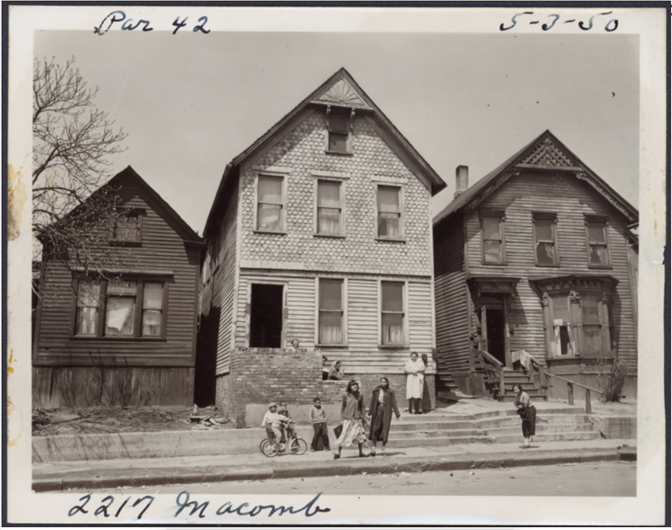
(Detroit Public Library Digital Collections)
Our partner site CityLab explores the cities of the future and investigates the biggest ideas and issues facing urban dwellers around the world. Claire Tran shares today’s top stories:
In Detroit’s oldest African-American neighborhood, most families had roots dating back to the Civil War. But by the 1950s, they were slowly displaced by so-called “urban renewal.” Resurfaced photographs show a typical day in the now-vanished Black Bottom.
In fast-aging pockets of rural America, older residents are going back to work—but it’s not always for the money. From clearing snow to fighting fires, vital town maintenance needs the help of retirees.
A record 7 million Americans are three months late on their car payments. Cars are necessary in many regions to access good jobs, but defaulted auto loans can put drivers in a debt trap.
Keep up with the most pressing, interesting, and important city stories of the day. Subscribe to the CityLab Daily newsletter.
Looking for our daily mini crossword? Try your hand at it here.
Comments, questions, typos? Email newsletters editor Shan Wang at swang@theatlantic.com
We have many other free email newsletters on a variety of other topics. Find the full list here.
It’s Tuesday, February 19. Sixteen states have officially signed on to a lawsuit against the Donald Trump administration over his plans to use emergency powers to divert funds to build a southern border wall. The suit argues that shifting funds meant for drug interdiction, law enforcement, and military construction will hurt these states’ residents.
Here’s what else we’re following today:
He’s …: You guessed it, running. Senator Bernie Sanders of Vermont announced that he, too, will be running for president (again). He’s the 12th candidate to officially throw his hat in the ring for the Democratic nomination, and his candidacy is sure to bring back memories of the 2016 primary. The big difference this time? He’s the front-runner. A few hours after his official announcement, Sanders had already out-fundraised every other candidate. The big question now is, can he maintain the lead?
+ Need a refresher on who’s running for president, who’s not, and who might be? Check this continually updated 2020 cheat sheet.
With Friends Like These: Former acting FBI Director Andrew McCabe told The Atlantic’s Natasha Bertrand that he couldn’t believe how much President Trump trusted Russian President Vladimir Putin and that concerns about whether Trump posed a national-security threat were building “for some time” before they came to a head, when Trump fired former FBI Director James Comey. Read their full conversation here.
State of Virginia: The political firestorm that shook the state’s Democratic Party seems to have cooled down, and calls for Governor Ralph Northam to resign over a racist photo on his yearbook page have abated—in part because public opinion is on his side, writes Andrew Kragie.
A National Emergency: Lashonda Sharreice Childs, Courtlin Arrington, and Izzy Marie Helem are among the 1,200 children who have died from gun violence in the past year. While mass school shootings tend to get most of the attention, the majority of children killed by guns die in smaller-scale incidents, such as accidental shootings in their home or drive-by shootings on the street. And these incidents get far less media coverage.
‘The Daddy of It All’: To understand the Green New Deal, you need to understand the philosophy of Alexander Hamilton.
— Olivia Paschal, Madeleine Carlisle, and Elaine Godfrey
Snapshot
Protesters hold signs during a demonstration against President Trump on Presidents' Day in Union Square in New York City, on February 18, 2019. (Go Nakamura / Reuters)
Ideas From The AtlanticWhy Is This Cross-Shaped Memorial Constitutional? (Garrett Epps)
“The answer will shape how courts around the country respond to monuments, official and ‘voluntary’ public prayer, and other official and semiofficial manifestations of popular faith and belief.” → Read on.
What Presidential Announcements Reveal About the Candidates (John Dickerson)
“A look at the announcements of the past 70 years shows that one change is obvious: Presidential hopefuls used to declare their candidacy in a single speech; now the process is drawn out with peekaboo hints, social-media announcements that lead to explorations, and talk-show teases. It’s like an Advent calendar, but no one gets a square of chocolate.” → Read on.
Reckless Even by Roger Stone Standards (Ken White)
“This surreal chain of events began—as many do—on Roger Stone’s Instagram page, where he has been relentlessly decrying his prosecution and soliciting defense funds.” → Read on.
Kamala Harris’s Blackness Isn’t Up for Debate (Jemele Hill)
“Just like Obama, Harris has exposed narrow-minded views of blackness with her presidential run. Harris is a multiracial woman who was born in Oakland, went to high school in Montreal, and worshipped with both Hindus and Baptists. She’s a member of the Alpha Kappa Alpha sorority, and yet, by her account, knows how to make an incredible Bolognese and a mean pot of collard greens. If the criterion for running for president is being authentically American, people have to accept that this is what that looks like.” → Read on.
◆ Trump’s Emergency Declaration Is Contemptuous of the Rule of Law (David French, National Review)
◆ Trump the Pundit Handicaps 2020 Democratic Contenders (Zeke Miller, Associated Press)
◆ Klobuchar Opts for Pragmatic Approach in Town Hall (Elena Schneider, Politico)
◆ A New Law Made Him a ‘Free Man on Paper,’ but He Died Behind Bars (Mitch Smith, The New York Times)
◆ Intimidation, Pressure and Humiliation: Inside Trump’s Two-Year War on the Investigations Encircling Him (The New York Times)
We’re always looking for ways to improve The Politics & Policy Daily. Comments, questions, typos? Let us know anytime here.
Were you forwarded this newsletter? Sign up for our daily politics email here. We have many other free email newsletters on a variety of other topics. Find the full list here.
In an industry that rarely rewards longevity, it seemed like Karl Lagerfeld would live forever. Thus it’s with a sense of bewilderment that the fashion world mourns the death of Chanel’s creative director on Tuesday, at the age of 85 (ish). Like his famed predecessor, Coco Chanel, Lagerfeld habitually lied about his age, and he seemed to stop time by adopting a personal uniform that was instantly recognizable and endlessly parodied—by Ashton Kutcher, by Neil Patrick Harris as Gunther in Netflix’s A Series of Unfortunate Events, and, frequently, by Lagerfeld himself, who created Fendi fur key chains in his likeness, employed a phalanx of Karl look-alikes as waiters at the launch of his limited-edition Diet Coke bottles, and voiced the male model turned villain Fabu in the animated film Totally Spies! The Movie.
Born—by most accounts—in Hamburg, Germany, in 1933, Lagerfeld moved to Paris as a teenager. At the tender age of 21, he won the International Wool Secretariat award in the coat category, sharing the podium with another fashion prodigy, Yves Saint Laurent, who won for his dress design. (It was the beginning of a fierce personal and professional rivalry, rivetingly chronicled in Alicia Drake’s The Beautiful Fall: Fashion, Genius, and Glorious Excess in 1970s Paris.) The accolade led to an apprenticeship with the couturier Pierre Balmain, after which Lagerfeld was named head designer at the now-defunct couture house Jean Patou. In 1963, he began freelancing for the ready-to-wear label Chloé, becoming its artistic director in 1974, while also serving as creative director for the Italian fur company Fendi.
Lagerfeld made the leap from fashion-industry stalwart to pop-culture icon when he was appointed creative director of Chanel, showing his first couture collection in January 1983. It’s a sign of his transformative influence that few remember that Chanel was in genteel decline at the time, adrift since the death of its eponymous founder in 1971. Lagerfeld gave the ailing Parisian label an adrenaline shot to the heart, cunningly remixing the house’s classic looks for a younger, more international clientele. “Suddenly, everyone is talking about Chanel,” Vogue marveled in June 1983.
Despite Lagerfeld’s eventual success, the appointment of a German-born ready-to-wear designer to the storied French couture house—at a salary rumored to be a then-astronomical $1 million per year—also prompted a scandal. It was doubly controversial because Coco Chanel herself had declared Lagerfeld’s longtime rival, Saint Laurent, her rightful successor, and Saint Laurent desperately wanted the job. Though the idea of bringing in a buzzy designer to shake up a staid heritage brand has since become a cliché, it was an unprecedented move at the time, and Lagerfeld was already 50 years old—ancient by fashion-industry standards.
 Karl Lagerfeld appears with models at the end of his Spring/Summer 2015 women's ready-to-wear collection for Chanel during Paris Fashion Week in 2014. (Gonzalo Fuentes / Reuters)
Karl Lagerfeld appears with models at the end of his Spring/Summer 2015 women's ready-to-wear collection for Chanel during Paris Fashion Week in 2014. (Gonzalo Fuentes / Reuters)Yet Lagerfeld had never quite shed his early reputation as an enfant terrible, and he successfully refashioned himself as “the kaiser.” A rococo-art aficionado (he auctioned his French furniture collection for $21.7 million in 2000), he powdered his graying ponytail like an 18th-century dandy. His trademark sunglasses, fans, and fingerless gloves further camouflaged the effects of aging. A gym-obsessed bodybuilder in his youth, he kicked his Coca-Cola addiction and shed nearly 100 pounds in the early 2000s, a physical transformation that he chronicled in his book The Karl Lagerfeld Diet and accentuated with formfitting black suits and starched white collars by Hedi Slimane for Dior Homme. But Lagerfeld never lost his outlandish personality, nor his penchant for grandiose sound bites that ranged from irreverent (“Sweatpants are a sign of defeat”) to offensive (“No one wants to see curvy women”).
When it came to his work, Lagerfeld had far too much creative energy for just one job. As other couturiers tentatively dipped their toes into lower-priced diffusion lines, Lagerfeld leapfrogged ahead to fast fashion, designing a capsule collection for H&M in 2004 before launching his own budget-friendly label, Karl, in 2011. At the time of his death, he was simultaneously designing multiple collections a year for Chanel, Fendi, and his own line, as well as working as a photographer, an author, a publisher, and a furniture designer. “Why should I stop working?” he asked in a 2012 VogueTV interview. “If I do, I’ll die and it’ll all be finished.”
It’s tempting to declare this the end of an era. Lagerfeld’s death marks the passing of the last of the great couturiers, a tribe of (mostly) men—Charles Frederick Worth, Jacques Doucet, Paul Poiret—who lived like kings, collecting masterpieces, dabbling in the arts, crafting flamboyant public personas, and making pompous pronouncements on how women should dress. For Chanel, which just announced Lagerfeld’s longtime collaborator Virginie Viard as its new creative director, this is certainly a major turning point. But if Lagerfeld winkingly played into certain stereotypes, he also defied neat pigeonholing. He may be remembered as a fashion legend, but in terms of marketing, branding, and financing, he was also an artist of reinvention.
He’s a 77-year-old socialist who’s abrasive when he’s in a good mood, and who’s still blamed by many Democrats for Hillary Clinton losing to Donald Trump. But go ahead, try to argue that Bernie Sanders isn’t the front-runner in the 2020 Democratic race right now.
After making his second presidential run official on Tuesday, Sanders blew past every other announced candidate’s early fundraising numbers—$3.3 million in the first few eight hours, more than double the huge $1.5 million Kamala Harris raised in the whole first day—and he’s expecting to easily hit the 1 million website sign-ups he asked for as a first show of support for his campaign.
For all the more conventional Democrats who greeted the news of his candidacy with sighs of “Oh no!” or “Give me a break,” no one else running could do that.
[Read: A lot of people want Bernie Sanders to run in 2020]
Then there’s where he stands in early polls, behind only Joe Biden. Or the argument Sanders’s own pollster has been making: that he will have surprising strength in parts of the country where he connects with many of the same disaffected voters who backed Trump, or who were too turned off by what’s become of politics to vote at all in 2016.
“Short of Joe Biden entering the race, Sanders on paper starts off with more advantages than anybody else. He’s got the largest list; he’s got the most intense following that has stayed with him since 2016; he has a proven ability to fundraise from his small-dollar base,” said Brian Fallon, a Democratic strategist who was the spokesman for Clinton, leading the public charge against Sanders last time around. “He’s in the exact opposite position that he started off the 2016 campaign in.”
The Democrats running against him assume that this won’t last. But he’ll raise millions, get 20,000 people at his rallies, and make them all look junior varsity in comparison. Still, they’re confident that he won’t be able to maintain that over the next year.
[Peter Beinart: Bernie Sanders offers a foreign policy for the common man]
Sanders running when he’s part of a big field of enticing candidates is a whole lot different from Sanders running as the single fresh alternative to a candidate who never inspired much passion throughout her entire career. He could burn out, get eclipsed by some of the newer forces in the party, and have to answer for all the parts of his record and background that didn’t get full scrutiny when he was a novelty nowhere near winning in 2016.
If nothing else, there could certainly come a point late in the game, much like what happened with Howard Dean in 2004, when Democratic voters look at him and say they just can’t take seriously the idea of Sanders actually beating Trump, or actually being the commander in chief and sitting behind the Resolute Desk in the Oval Office as the 46th president of the United States.
At least that’s what his rivals are telling themselves. Because that’s how races have always gone up to this point. Except, that is, for 2016, when Sanders became a bizarre breakout sensation and the country put Trump behind that desk as the 45th president.
No matter what, his candidacy seems set to reshape the dynamics of the race.
Sanders has moved quickly in an attempt to show that he’s a more serious candidate than four years ago, when he announced his campaign during a break from the Senate floor, gave a few harried answers to the questions from the few reporters who had showed up, and then said he had to get back to vote.
This time, he started with a carefully constructed rollout, with a slick announcement video, a sit-down interview on CBS This Morning, and a media tour. “Sisters and brothers,” he wrote to his huge email list Tuesday morning, “together, you and I and our 2016 campaign began the political revolution. Now, it is time to complete that revolution and implement the vision that we fought for.”
A full operation is being put together, with the assumption that he will have well over $200 million in online fundraising to draw from. That includes top leadership of the campaign meant to illustrate the diversity of his support, demographically and geographically. Faiz Shakir, a former aide to Harry Reid, is leaving his job as the political director of the American Civil Liberties Union to be the campaign manager. In addition to his deep political experience, he will be the first Muslim presidential-campaign manager in history. Analilia Mejia, an organizer of Colombian and Dominican descent who most recently directed the Fight for $15 and Earned Sick Days campaigns in New Jersey and previously worked for the New Jersey Working Families Party, will be the political director. The deputy political director will be Sarah Badawi, who was most recently the government-affairs director for the Progressive Change Campaign Committee, a liberal group that led the effort to draft Elizabeth Warren into the 2012 Senate race, and later worked on her campaign.
Their organization will send out an array of emails, videos, and Twitter-friendly GIFs, which Sanders and his team hope to use to capture the sensation of his 2016 campaign and turn it into an overwhelming movement.
All this will build to a big kickoff rally.
“Bernie Sanders is always an underdog because he is fighting against large special interests who don’t want to see his agenda succeed. He’ll be the underdog until the day he wins,” said Representative Ro Khanna, a California Democrat enthusiastic about Sanders’s announcement. “He’s the front-runner in terms of grassroots energy and a small-dollar army—we’ve seen how decisive that is.”
The darkness settled in at Warren’s headquarters weeks ago, and by Tuesday morning, Warren advisers were thinking that the upside of Sanders’s candidacy is that at least there will be two strong voices for real structural reform in the economy and political system. While her goal remains winning the White House, she and her aides have had to rethink how she’s going to get there. Sanders will massively out-raise and outperform her for months, Warren advisers think. But over time, if she is able to build up the staying power, there might be a chance for her to have a late second wind, particularly if Sanders collapses under either his own weight or late skepticism about him becoming the nominee, people around her believe. In that scenario, she’s like John McCain in the 2008 Republican primary, able to surge as an acceptable alternative once people try out Sanders and other candidates and realize they don’t like any of them. Sanders could serve as a buffer for anyone who thinks that Warren is too left, or too old, or doesn’t have enough of a claim on the women’s vote given the other female candidates in the race.
Khanna argued that the two won’t split votes.
“Running for president is something deeper. I don’t think you have just a cut-and-paste Let’s see who has what percent of the base and how they overlap. I think it’s about do you meet the moment, and does your vision inspire people?” he said.
A Warren spokeswoman declined to comment on what impact Sanders’s presence in the race would have on her campaign.
In the meantime, several other candidates are salivating over how they expect the two to destroy each other. Among those potentially positioned to do best over a scramble on the left flank are Cory Booker and Kamala Harris, who both have progressive credentials but are campaigning to build strong and more diverse foundations of support.
Or as Harris greeted the news of Sanders’s entry on Tuesday morning while at a campaign stop in New Hampshire, “The more the merrier. I think it’s great.”
That will likely leave little room for some of the more left-leaning potential candidates who have been considering jumping in, most prominently Senator Sherrod Brown of Ohio and Senator Jeff Merkley of Oregon. Congresswoman Tulsi Gabbard of Hawaii will likely face the same problem distinguishing herself now that Sanders is in the race.
But the moderates will rejoice, hoping that voters take notice of how the Trump campaign quickly responded to the Sanders launch: “Bernie Sanders has already won the debate in the Democrat primary, because every candidate is embracing his brand of socialism. But the American people will reject an agenda of sky-high tax rates, government-run health care and coddling dictators like those in Venezuela. Only President Trump will keep America free, prosperous and safe.”
If beating Trump is the priority, the moderates want primary voters to think that nominating Sanders would be playing right into Trump’s clear plans to spend the next 20 months pumping up his modern-day Red Scare. That’s the theoretical space for Senator Amy Klobuchar of Minnesota, who is pitching herself as a pragmatist. She said at a CNN town hall on Monday night that she won’t support Medicare for all and that she would only support free college tuition “if I was a magic genie.”
But the person most closely watching Sanders’s announcement is probably Biden, who’s been going over polling data and election results he believes show that votes are not as far left as the media attention to things such as Medicare for all and the Green New Deal would suggest.
The former vice president is deep in final deliberations about whether to run again, but he feels sure that Sanders’s agenda will be both the wrong policy for the country and the wrong politics to defeat Trump.
“To be sure, there’s anxiety about what the future holds, and caution about what our rapidly changing world means to families who are being left behind,” Biden said on Saturday at the Munich Security Conference, in a speech full of lines that could have been from an announcement. “This fourth industrial revolution is causing great anxiety, and I think is part of the reason for so much of our uncertainty.”
The Biden spokesman Bill Russo declined to comment on how Sanders’s announcement shapes his thinking.
The economic thinker who most influenced the Green New Deal isn’t Marx or Lenin. No, if you want to understand Alexandria Ocasio-Cortez’s bid to remake the economy to fight climate change, you need to read Hamilton.
Yes, Alexander Hamilton. Long before he was associated with theatrical hip-hop, former Treasury Secretary Hamilton called for policies that sound familiar to us today. Like Representative Ocasio-Cortez, he wanted massive federal spending on new infrastructure. Like Donald Trump, he believed that very high tariffs can nurture American manufacturing. And like Elizabeth Warren, he was willing to bend the Constitution to reform the financial system.
Hamilton, in short, successfully used the power of the federal government to boost manufacturing, to pick winners and losers, and to shape the fate of the U.S. economy. He is the father of American industrial policy: the set of laws and regulations that say the federal government can guide economic growth without micromanaging it. And the Green New Deal, for all its socialist regalia, only makes sense in light of his capitalistic work.
In the days since Ocasio-Cortez debuted the Green New Deal, consensus has hardened: It is legislation by listicle. “An aspirational climate policy wish list,” writes the democratic socialist Ryan Cooper. “A needlessly long wish list,” says The New York Times’ David Leonhardt. “An untrammeled Dear Santa letter without form, purpose, borders, or basis in reality,” adds National Review’s Charles C. W. Cooke, in Buckleyan reverie.
Even its supporters seem to concede that the Green New Deal is a binder of climate policies duct-taped to an Easter basket of socialist goodies: Its individual parts may be great, but you have to admit that it looks like it might teeter over. Its critics, meanwhile, ominously suggest that it prizes ideology above science—something I have also warned of.
But both views are, on the whole, incorrect. Ocasio-Cortez’s proposal is not only a set of progressive nice-to-haves, nor is it a full-on assault on capitalism. The Green New Deal has a coherent economic philosophy and a compelling theory of change—and pundits don’t have to like them to bother understanding them.
[Read: ]The millennial era of climate politics has arrived
Above all, the Green New Deal is a leftist resurrection of federal industrial policy. It is not an attempt to control the private sector, according to its authors; it is a bid to collaborate with it. And it draws on a set of ideas with a rich American history, extending long before the great World War II mobilization to which the Green New Deal is regularly compared.
“This goes back to Hamilton, the daddy of it all,” says Stephen Cohen, a professor of city and regional planning at UC Berkeley. He argues that industrial policy has birthed the transcontinental railroad, the cookie-cutter suburb, the home appliance, and the computer—nearly every major American economic transition since 1776.
In short, the Green New Deal’s supporters hope that industrial policy can now bring forth another transition—to cheaper energy, faster trains, and an altogether more climate-friendly economy. “The core of the Green New Deal, if you just look at the projects, is just like industrial policy, industrial policy, industrial policy,” says Rhiana Gunn-Wright, a policy researcher at the think tank New Consensus who helped draft Ocasio-Cortez’s proposal. “It’s very, very, very central. The Green New Deal is one of the largest interventions in U.S. industrial policy in a long time.”
Ocasio-Cortez’s love of industrial policy did not come from nowhere. In the past few years, a group of scholars has revived an old school of economic thought that says a strong manufacturing policy is an absolute necessity for large, developed nations. They argue that the United States has neglected its domestic manufacturing sector since the 1980s, a move that risks national failure.
This new school is central to the Green New Deal. Omitting it is like ignoring Milton Friedman when discussing President Ronald Reagan’s policies. And discarding it is throwing out what makes the Green New Deal so interesting. For more than a decade, the biggest progressive ideas about curbing climate change have relied on technical or narrow market mechanisms. They have required regulators to make emitting carbon dioxide costly. By prescribing industrial policy, the Green New Deal goes in a different direction: It throws all of American government and industry behind an attempt to make renewable energy cheap.
This move could revolutionize U.S. climate politics. Ocasio-Cortez has a chance to recast one of Trump’s economic intuitions—that the decline of industry has broken something fundamental in the U.S. economy—as climate policy. She may be squandering it.
Last fall, a number of activists and policy scholars from the same network of leftist groups as Ocasio-Cortez founded a new think tank. They called it New Consensus. Since then, the group has done little public work beyond helping to formulate the Green New Deal. Its website has only four pages. But it has published a reading list written by Demond Drummer, its founder, that functions as a manifesto of sorts.
The list does not cite a single angry issue of Dissent or postmodern rant by Slavoj Žižek. Instead, it contains a bunch of self-described pragmatists: Vaclav Smil, a scientist who Bill Gates says is his favorite author; Brad DeLong, a UC Berkeley economics professor who served in Bill Clinton’s administration; Carlota Perez, a scholar who calls herself a “radical centrist”; and Mariana Mazzucato, an economist so mainstream that the Financial Times recently profiled her love of swimming.
Drummer says that the books lay out a new and coherent view of “how economic progress really happens.” Many of the books argue that wealthy countries became wealthy in the first place by supporting, protecting, and investing in strategic industries. A nation’s other policies—around trade, infrastructure, even education—were ultimately designed to serve these chosen industries. “A nation must deliberately and constantly invest in its means of making a living,” Drummer writes. “Nations that ‘[let] the free market decide’ what they should do for a living decline to the bottom of the economic food chain.”
No wealthy country developed without going through this process, the books argue—especially not the United States.
“From its very beginning, the United States again and again enacted policies to shift its economy onto a new growth direction—toward a new economic space of opportunity,” argues Concrete Economics, a book by Cohen and DeLong that appears on the reading list. “Yes, there was an ‘invisible hand’ … But the invisible hand was repeatedly lifted at the elbow by the government, and re-placed in a new position from where it could go on to perform its magic.”
Speaking from his office in New York, Cohen walked me through this retelling of American history. Hamilton sought to move the country away from its agrarian economy, so he fought for infrastructure, high tariffs, and a muscular financial system. After he died, his successors emphasized an “American system” of infrastructure projects such as the Erie Canal and the manufacturing of products from standardized parts. During and after the Civil War, the U.S. government freely gave away huge tracts of western land to spur specific types of economic development. In particular, rail companies got land to form the transcontinental railroad.
This industrial fervor extended well into the 20th century. When we think of large-scale industrial policy today, we think of the New Deal and World War II. But President Dwight D. Eisenhower, who built the interstate-highway system, encouraged mass production and suburbanization, and he preserved an enormous defense R&D budget. “Almost all of the technology we think of in terms of Silicon Valley and the like—computers, telecommunications, semiconductors—came directly out of that government R&D budget,” Cohen says.
[Read: ]The Democrats want to make climate policy exciting
Cohen and DeLong argue that our industrial pragmatism ceased in most sectors around 1980. They claim that policy makers grew too ideological: They read too much Friedman, deregulated the financial sector, and adopted a gospel of free trade. These actions allowed East Asian countries to overwhelm American manufacturing. In 1979, manufacturing made up 21 percent of U.S. GDP; by 2007, it had fallen to 12 percent.
The Green New Deal’s authors see their proposal as a remedy to this crisis. It is an attempt to bring back both U.S. manufacturing and the commonsense industrial policy that originally made that sector strong. “The economy, as it’s structured right now, is not working … and that’s not just because of the 1 percent, not just because of Wall Street,” Gunn-Wright told me. “We’ve stopped making things. We’ve stopped investing in the real economy.”
Saikat Chakrabarti, Ocasio-Cortez’s 33-year-old chief of staff and former campaign chair, has endorsed both the reading list and the thinking behind it. “Economics is a social system. It is not a science,” he tweeted in January, before linking to the New Consensus page. “To understand ‘basic economics,’ … you need to read economic history.” (Both Chakrabarti and Ocasio-Cortez’s office did not respond to an interview request before publication.)
Some mainstream economists aren’t as convinced that industrial policy could transform the future of the United States. Many of the ideas in the books have not been “closely vetted” theoretically and may lack empirical evidence, according to Michael Greenstone, an economics professor at the University of Chicago who previously worked in Barack Obama’s White House. And he worries that many of the books distract too much from a central lesson of labor economics: that people basically get paid for their skills. While granting that some recent data suggest that workers’ share of GDP is declining in developed countries, compared with that taken by investors and capital owners, he argues that unemployment and wage stagnation have been concentrated among those with fewer skills. In this view, education policy—not industrial policy—is primarily failing Americans.
 Getting to the moon required attempting “300 different homework problems,” according to the University College London economist Mariana Mazzucato. (NASA)
Getting to the moon required attempting “300 different homework problems,” according to the University College London economist Mariana Mazzucato. (NASA)Ocasio-Cortez has taken to saying that the Green New Deal is our generation’s moonshot, and this is usually understood as an invocation of John F. Kennedy–esque vigor: When America sets its mind to it, it can do anything. But in the context of New Consensus’ reading list, the moonshot reference also reads as an allusion to another economic thinker—Mariana Mazzucato, the director of the University College London Institute for Innovation and Public Purpose.
Mazzucato argues that the private sector cannot innovate without the public sector giving it purpose and direction. In fact, innovation depends on the state. First, the public sector defines a problem. Then it asks—or demands—that the private sector solve that problem. She cites the Apollo program as a perfect example.
“How to get to the moon was a result of 300 different homework problems that had to be solved, and most of them failed,” Mazzucato told me recently. Those homework problems were first laid out by the government, and they ranged wide across sectors, touching even nutrition and fashion. Then the government used the inspirational power of its leadership and the extensive power of its purse to assign them to the private sector.
Mazzucato asserts that the state should yoke the mission of fighting climate change to every aspect of its purchasing power. Whether the government buys a company’s product, offers it a research grant, or loans it money should depend on its willingness to adopt certain Green New Deal goals. “You don’t pick the winners; you pick the willing,” she said. “The question should be: Who’s willing to engage across any sector—big firms, small firms, any size—to engage with Green New Deal strategies?” These strategies might include a renewable-energy requirement or a reduction in the physical amount of material needed to make a product.
Mazzucato’s ideas are all over the Green New Deal. She has met with Ocasio-Cortez in person more than once; their staffs have consulted; they even Skyped together. Mazzucato has a fact page about the Green New Deal on her website. Yet Mazzucato is no radical. When we talked, she had just returned from Davos, and her books are more likely to be feted by the Financial Times than by Jacobin. “Mazzucato is a pretty mainstream, market-failure-correcting economist, in terms of industrial policy,” says Constantine Samaras, a professor of engineering at Carnegie Mellon University. So why has the Green New Deal been cast as such a radical proposal?
Look, and you’ll find Hamiltonian ideas served thickly throughout the Green New Deal resolution—even if they sometimes appear between slabs of progressive talking points. When the proposal lists “several related crises” that endanger the United States, it mentions “deindustrialization” as well as income inequality. It demands a “massive growth in clean manufacturing.” It calls for investment in “local and regional economies.” And it calls for “enacting and enforcing trade rules … and border adjustments” that will “grow domestic manufacturing in the United States.”
The Green New Deal’s wide-ranging vision faces down a politically inconvenient reality: Fighting climate change will mean remaking the economy. In the United States, most climate policies have focused on only the electricity or transportation sector. But those two sectors account for only 56 percent of U.S. greenhouse-gas emissions. Heavy industry accounts for almost a quarter of the country’s carbon pollution, and we still have little idea how to deal with that. There’s still no way to make steel without fossil fuels. The Green New Deal states as a goal—and little more than a goal—the need for “removing pollution and greenhouse gas emissions from manufacturing and industry as much as is technologically feasible.”
In fact, the entire document is just a list of goals. “What the resolution did is outline some challenges,” Samaras told me. “There’s no policy yet. These are just principles. I think that’s getting lost.”
Into that policy vacuum, many commentators have hallucinated an entire regime. “The government would put sector after sector under partial or complete federal control,” asserts David Brooks. He begs, “Exactly which agency would inspect and oversee the renovation of every building in America? Exactly which agency would hire every worker?”
This does not match what Ocasio-Cortez has actually said. Speaking with Chuck Todd earlier this month, she speculated about different ways to get the Green New Deal done. “It could be Tennessee Valley Authority–style public programs, but it could also be public-private partnerships,” she said. “It can work down on a municipal level. There could be some potential contracting involved … It’s not as though the federal government’s going to wave a wand and say, ‘We’re going to do it all ourselves.’ ”
A spike in government contracting? Public-private partnerships? What kind of fiat government takeover is this?
[Read: ]7 reasons why the Democrats won’t pass a Green New Deal
“Ocasio-Cortez is a socialist, and she wants worker collectives. But that distracts us from the core of the plan,” says Daniel Aldana Cohen, a sociologist at the University of Pennsylvania who helped edit coverage of the Green New Deal for Jacobin, a leftist magazine. “The original New Deal, when you read about it, is super practical. The biggest mistake is to see activist government … as ideological. It’s just a super practical approach to problem-solving. If you want to solve problems on a huge scale, then let’s actually put some public institutions to work.”
And arguments for the Green New Deal can even feel a little … Trumpy. When Gunn-Wright talks to people about the Green New Deal, “they get really excited about the thought of making stuff again,” she says. “That they’ll not just be a cashier, but that they’ll make wind turbines.” Gunn-Wright also riffed on the need to make wind turbines domestically (they’re too big to ship overseas), and why border adjustments may be required to protect some nascent U.S. green industries. (Trump actually imposed a tariff on solar panels in 2017.)
Viewed in a certain light, you can start to see the potential for a certain kind of play here: an attempt to integrate Trump’s working-class nostalgia with the urgency of remaking the economy to fight climate change. “Skilled craftsmen, and tradespeople, and factory workers have seen the jobs they loved shipped thousands of miles away,” the president has said. “This wave of globalization has wiped out our middle class. It doesn’t have to be this way. We can turn it all around—and we can turn it around fast.” Would Green New Dealers really disagree with any of this?
Yet Ocasio-Cortez only ever approaches that rhetoric at a slant. “Today is a big day for people who have been left behind,” she said when announcing the Green New Deal. “Today is a big day for workers in Appalachia. Today is a big day for children that have been breathing dirty air in the South Bronx.” She referred to her proposal not as a plan to resuscitate American industry, but as a “comprehensive agenda of economic, social, and racial justice.”
“This is an investment,” she said. “For every dollar we spend on infrastructure, we get more than a dollar back for that investment.”
That’s weak, compared with the ambition wound up inside her own proposal. Investment and infrastructure are such Normal Democrat Words that they lose the special nostalgic charge of industrial policy. No wonder the Green New Deal was understood as a wish list, even by its supporters. Not that Ocasio-Cortez helped her case here either: On the day of the announcement, her office published, then retracted, a sometimes juvenile FAQ document that talked about farting cows and supporting people “unwilling to work.”
Gunn-Wright told me that her team doesn’t talk about the Green New Deal as industrial policy first, because people misunderstand it. Trump’s economic message is linked to his racist rhetoric, perhaps irretrievably so. Say the word manufacturing, and people hear a paean to the white working class. “We haven’t talked about the decline of manufacturing outside of cultural terms,” she said. “It’s really weaponized in terms of race. That also makes people back away from it.”
And it is legitimately tricky to talk about the history of U.S. industrial policy, especially on the left. Sure, the government has guided the invisible hand throughout American economic history—but it has also guided the bayonet and the lash. In the 1790s, Hamilton’s prized financial system counted enslaved bodies as a type of commodity, alongside cotton and wheat. In the 1860s, the government had western land to “freely” give away because it violently seized it from indigenous people first. In the 1950s, suburbanization enriched America, but it did not enrich black Americans, who were systematically prevented from obtaining federal-backed mortgages. Much of the Green New Deal’s racial-justice agenda reads as an attempt to deal with this legacy—and to ensure that people of color are not left out of the next great redirection of the American economy. Hence the policies aimed at spreading the wealth: the paid medical leave, the job guarantee, the promise to honor tribal treaties.
But the sum effect has been that Ocasio-Cortez and her team shout about equity while whispering about the economy. If the word manufacturing is now a racial dog whistle, who better than a popular leftist congresswoman to reclaim its whine? It may be too much to hope for a cross-partisan climate policy in the United States, but every climate policy must have some kind of crossover appeal. The U.S. economy will eventually be remade to fight climate change. Ocasio-Cortez and her team must decide whether they will lean into their policy’s promise or make it seem like more of the same.
The theme of this year’s Carnival in Venice is “Tutta colpa della Luna,” or “Blame the moon,” inspired by the 50-year mark since humans first walked on the moon. Festivities kicked off this weekend, with a nighttime floating parade, and will last until March 5. Collected here, colorful images from the opening days of Carnival 2019 in Venice.
This article contains spoilers through all eight episodes of Russian Doll.
“No, no, no, no, no, we do not use that word in this house.”
So says Ruth, the no-nonsense parental guardian of Nadia, the ever-dying star of Netflix’s psychedelic triumph Russian Doll. Ruth, a therapist, actually says it twice—varying the number of nos each time—in separate “loops,” in separate episodes, when confronted with the forbidden word: crazy.
Ruth’s rule fits with changing mores, as health professionals have tried to retire the term crazy for being insulting to people with mental illness. But Ruth and Nadia share a particularly intimate understanding of the harm the word can do. With the same humanity and attention to detail that it vests in all its intricacies, Russian Doll unwinds how the incoherent, shame-laden cultural image of mental illness diverges from—and worsens—the real thing.
As she periodically expires and regenerates at her 36th birthday party, Nadia might be experiencing a drug trip, a video-game simulation, a spiritual trial, or a time-space glitch. Of all the possibilities, though, there’s one that frightens Nadia the most: What if it’s a psychotic break? When her friend Maxine calls her “crazy,” Nadia hisses back, “You know I hate it when people call me ‘crazy.’” When Maxine does it again, Nadia marches over to the uncooked chicken her friend has lovingly prepared and hurls it to the ground. That’s how much she doesn’t like the word.
The antipathy stems from childhood. Nadia’s mother, Lenora, feverishly obsessed over nonsensical quests: breaking the mirrors in her house, buying up all the watermelons from bodegas around town, attempting to acquire the Betty Boop trademark. She also swerved emotionally, lavishing love on her daughter but then showing frightening callousness toward her. “What was her diagnosis? What the fuck was wrong with her?” Nadia asks in the present, to which Ruth replies, “Do not confuse your mother with her damage.”
Lenora’s damage, though, clearly damaged Nadia, and in more than one way. Her mom’s episodes appear to have traumatized her, and Nadia refuses to talk about her memories until a mere glimpse of family photos she’s hidden under the bed unleashes a series of flashbacks. Her mother’s story also soaked Nadia with shame, because she believes her secret desire to live with Ruth rather than Lenora is what killed her mom. This guilt has almost literally short-circuited Nadia’s life, and restoring linear time requires her to finally confront it—and forgive herself—in a sit-down with Ruth.
But the guilt and trauma have also short-circuited Nadia’s life figuratively, causing her to close off from deep human connection. You see signs of a rut, of stuck-ness, in her reluctance to meet her ex’s young daughter, in Nadia’s stated misanthropy (“Other people are garbage”), and in what Ruth says during their climactic chat about Lenora’s death: “Sweetheart, where is that gorgeous piece of you pushing to be a part of this world?” At ComicsVerse, in one example of the insightful Russian Doll writing done by mental-health professionals, the therapist Tim Stevens explains:
Even if the effect of the trauma has not proven far-reaching enough to qualify [people who experienced trauma] for a post–Traumatic Stress Disorder diagnosis (PTSD)—or the more short-term Acute Stress Disorder—such people can tell you how much their life has been tossed into upheaval. Moreover, they can point to tricks or mechanisms they have developed to avoid retraumatization. In fact, for many, they are not just avoiding retraumatization but anything that’s four steps away from it. Live in that place long enough and the avoidance becomes rote.
Nadia might or might not have a diagnosable condition, but inherited trauma like hers is the sort of thing that psychology and psychiatry seeks to treat, as Russian Doll points out through the character of her parental guardian. Professionally, Ruth practices a form of therapy called eye movement desensitization and reprocessing (EMDR) that is meant to assist with difficult memories. Viewers see it in action during one short scene of Ruth with a male patient. A device flashes lights from side to side—that’s the “eye movement” component—as the man revisits what sounds like a frightening memory from his school years and then turns to the troubles in his marriage.
But Nadia doesn’t appear to be the therapy-going sort, which is one of the few things she has in common with Alan, the man who she discovers is stuck in the same time loop she is. Buttoned-up and routine-obsessed, he sometimes snaps into violent anger, and it’s eventually revealed that his loops began when he killed himself. Yet he repeatedly vows that he can handle his mental health without help. Like Nadia, he hates being called crazy. As someone obsessed with surface images—his physique, his tidy home—perhaps his aversion stems from fear of undoing the stolid image he wants to project.
Such aversion might, in turn, be tied to the stigmas bound up in the idea of crazy. The term sweeps together the extreme and the ordinary, the debilitating and the treatable. Its slur-like application in everyday speech renders behaviors as attributes, implying mental illness as necessarily dangerous, congenital, and weak. Seriously threatening conditions are made unduly comic, more commonplace ones are portrayed as bizarre, and in all cases seeking treatment becomes socially fraught.
This holds for many of crazy’s synonyms too. Throughout Nadia’s life, when she has acted with the outlandish mannerisms that make her so charming, one can assume that certain people have called her “whacko.” When she has tried dealing with her traumatic struggles, too, she’s likely been called “nuts” (look at how her ex, John, immediately writes her off when she confesses that she’s terrified and believes herself to be dead). But in Lenora, Nadia has seen a particularly distressing version of what those words can encompass, making it so that a mother cannot safely parent her child. Her great fear is that she shares that condition.
“Is there a history of mental illness in your family?” a drug-world doctor asks Nadia when she comes searching for explanations for her dying-and-reviving. She spits back, “That’s not it. No, no no, it’s not me. All right, understand, it cannot be me.” Yet within a few loops, she’s come to grapple with the suspicion that she’s indeed having a breakdown akin to what Lenora went through. She goes to see Ruth, who carefully asks Nadia to define the scope of what she’s experiencing. Nadia says their psychiatric safe word—“record player”—and has herself committed.
But in the ambulance ride with eerily familiar paramedics, she seems to realize that whatever her problems, this isn’t the treatment. The vehicle crashes, and she’s regenerated back in her friend’s apartment. “Nobody locks us up,” she says into the bathroom mirror.
What is the treatment? The drug-packing doctor, for what it’s worth, has some interesting ideas. Effusing about the ketamine in a joint Nadia smoked, he explains that the horse anesthetic and club drug might be a breakthrough medicine for depression sufferers. Fact-check: true, and an FDA panel just this month recommended a ketamine-laced nasal spray to go to market. At Vox, Alice Levitt described taking an intravenous infusion to treat her suicidal thoughts and ending up in a “K-hole”—an immersive psychedelic experience—that seemed to help her symptoms in the long term. “Users retreat into their minds and experience hallucinations, sometimes reporting religious experiences or even a feeling some compare to rebirth,” she wrote.
Levitt’s description is fascinating in the context of Russian Doll, and raises the possibility that Nadia’s adventure really is a ketamine vision involving a dream-Alan and a dream-Ruth. But the brilliance of the show lies partly in how it could be equally true that God put her through a series of loops, or a quantum bug did, or a computer did. In any scenario, the takeaway is the same. She had to get past the baggage around crazy so as to look in the mirror—an object Ruth likened to therapy—honestly. This took opening up to others, and it took dealing with her past. Having done so, she was then able to help someone else who, as everyone does, needed a mirror of his own.
It was in the archives of the Archbishop of York that Matthew Collins had an epiphany: He was surrounded by millions of animal skins.
Another person might say they were surrounded by books and manuscripts written on parchment, which is made from skins, usually of cows and sheep. Collins, however, had been trying to make sense of animal-bone fragments from archaeological digs, and he began to think about the advantages of studying animal skins, already cut into rectangles and arranged neatly on a shelf. Archaeologists consider themselves lucky to get a few dozen samples, and here were millions of skins just sitting there. “Just an obscene number,” Collins told me, his voice still giddy at the possibilities in their DNA.
In recent years, archaeologists and historians have awakened to the potential of ancient DNA extracted from human bones and teeth. DNA evidence has enriched—and complicated—stories of prehistoric human migrations. It has provided tantalizing clues to epidemics such as the black death. It has identified the remains of King Richard III, found under a parking lot. But Collins isn’t just interested in human remains. He’s interested in the things these humans made; the animals they bred, slaughtered, and ate; and the economies they created.
That’s why he was studying DNA from the bones of livestock—and why his lab is now at the forefront of studying DNA from objects such as parchment, birch-bark tar, and beeswax. These objects can fill in gaps in the written record, revealing new aspects of historical production and trade. How much beeswax came from North Africa, for example? Or how did cattle plague make its way through Europe? With ample genetic data, you might reconstruct a more complete picture of life hundreds of years in the past.
 Sarah Fiddyment (left) and Matthew Collins looking at parchment with conservator Antoinette Curtis at the Norfolk Record Office (Matthew Collins)
Sarah Fiddyment (left) and Matthew Collins looking at parchment with conservator Antoinette Curtis at the Norfolk Record Office (Matthew Collins)Collins splits his time between Cambridge and the University of Copenhagen, and it’s hard to nail down exactly what kind of -ologist he is. He has a knack for gathering experts as diverse as parchment specialists, veterinarians, geneticists, archivists, economic historians, and protein scientists (his own background). “All I do is connect people together,” he said. “I’m just the ignorant one in the middle.”
Collins began his scientific career studying marine biology, thanks to a formative teenage viewing of Jaws. He specialized first in marine fossils and, later, in the ancient proteins hidden inside them. This turned out to be a dead end. For the most part, the fossils were too old and the proteins no longer intact enough to study. He was forced to look at younger and younger material, until he crossed from paleontology into archaeology. He applied the techniques of protein analysis to pottery shards, in which he found milk proteins that hinted at the diet of the people who used those pots.
Collagen, a protein abundant in bone, also turns out to be especially useful. A student of Collins’s named Michael Buckley developed a technique called ZooMS to analyze bone collagen and rapidly ID the type of animal it came from. Scientists recently used ZooMS to identify a human bone sliver found in a Siberian cave; further DNA analysis revealed it to be the bone of a half-Neanderthal girl.
Collins quickly realized that DNA held even more potential than ancient proteins, which can be “a blunt tool compared to DNA.” The DNA of any single animal is, after all, a library coding for all the proteins their cells can make. “DNA is a phenomenally powerful tool,” he said. “There’s so much information there.” So when Collins embarked on the parchment project, he gathered a team that included geneticists as well as archivists, bookmakers, and historians.
It didn’t take long for the group to hit their first culture clash. In science and archaeology, destructive sampling is at least tolerated, if not encouraged. But book conservators were not going to let people in white coats come in and cut up their books. Instead of giving up or fighting through it, Sarah Fiddyment, a postdoctoral research fellow working with Collins, shadowed conservationists for several weeks. She saw that they used white Staedtler erasers to clean the manuscripts, and wondered whether that rubbed off enough DNA to do the trick. It did; the team found a way to extract DNA and proteins from eraser crumbs, a compromise that satisfied everyone.
The team has since sampled 5,000 animals from parchment this way. They’ve found that a type of ultrafine parchment, sometimes purported to come from squirrels or rabbits, actually comes from the typical cow, sheep, or goat—and that the thinness of the parchment is the result of the parchment makers’ skill. They’ve compared the genomes of cows in parchment with that of modern ones, finding similarities to Norwegian Reds and Holsteins. They’ve found that the parchment comprising a 1,000-year-old book known as the York Gospels seemed to come mostly from female calves, which was puzzling because you usually want female calves to grow up to give birth to more cattle. A zooarchaeologist on the team suggested that an outbreak of cattle plague might have killed those calves first.
[[Read: Sampling DNA from a 1,000-year-old illuminated manuscript]]
Collins is not the first person to think of getting DNA from parchment, but he’s been the first to do it at scale. Timothy Stinson, an English professor at North Carolina State University, published a paper on parchment DNA in 2009. He had batted the idea around with his brother, a biologist, and they sent off parchment samples to a commercial DNA lab. But even once he demonstrated that it was possible, Stinson had trouble getting more funding for the project.
It was a case study in why interdisciplinary research is difficult. The National Science Foundation would tell him that they didn’t work on livestock, and he should call the USDA. He’d talk to the USDA, and they’d tell him that medieval books fell under the purview of the National Endowment for the Humanities. He’d talk to humanities people, and they’d say, Genetics research? That already has all the money. “I really did get on this constant loop of everyone wanting me to call someone else,” Stinson says. Then Collins got in touch to collaborate—he had gotten a big grant from the European Research Council that encouraged interdisciplinary teams. Stinson is interested in how monasteries and courts sourced the parchment in their documents, and what that reveals about economic contacts in different medieval settings.
Earlier this year, Collins won a grant from the Carlsberg Foundation to study beeswax. In honor of the bees, he dubbed the project ArcHives. The idea originally came from an archivist who showed Collins a document with a wax seal. Collins is excited about the possibilities of DNA in beeswax—from humans handling the wax seal, from the bees themselves, and from pollen trapped inside. The DNA could reveal who worked with beeswax, where in the world it came from, and even the flowers that grew in that region year to year. And as with parchment, Collins went searching for experts in the history and production of beeswax. Alexandra Sapoznik, a medieval historian at King’s College London, has studied the historic beeswax trade. When Collins reached out to her, she remembers thinking, Wow, someone else, wax! She is particularly interested in how beeswax made its way from beekeepers in North Africa to Europe.
When it comes to the world of archaeology and DNA, “Matthew Collins knows everybody,” says Thomas Gilbert, a geneticist at the University of Copenhagen who has studied DNA from artifacts such as aurochs horn. Gilbert recruited Collins to the University of Copenhagen. Since then, they have worked together on another project getting DNA out of millennia-old chewing gum from birch-bark tar.
Studying the DNA in artifacts is still a relatively new field, with many prospects that remain unexplored. But in our own modern world, we’ve already started to change the biological record, and future archaeologists will not find the same trove of hidden information in our petroleum-laden material culture. Collins pointed out that we no longer rely as much on natural materials to create the objects we need. What might have once been leather or wood or wool is now all plastic.
In 1828, a teenager named Charles Darwin opened a letter to his cousin with “I am dying by inches, from not having anybody to talk to about insects.” Almost two centuries on, Darwin would probably be thrilled and horrified: People are abuzz about insects, but their discussions are flecked with words such as apocalypse and Armageddon.
The drumbeats of doom began in late 2017, after a German study showed that the total mass of local flying insects had fallen by 80 percent in three decades. The alarms intensified after The New York Times Magazine published a masterful feature on the decline of insect life late last year. And panic truly set in this month when the researchers Francisco Sánchez-Bayo and Kris Wyckhuys, having reviewed dozens of studies, claimed that “insects as a whole will go down the path of extinction in a few decades.” The Guardian, in covering the duo’s review, wrote that “insects could vanish within a century”—a crisis that Sánchez-Bayo and Wyckhuys believe could lead to a “catastrophic collapse of nature’s ecosystems.”
I spoke with several entomologists about whether these claims are valid, and what I found was complicated. The data on insect declines are too patchy, unrepresentative, and piecemeal to justify some of the more hyperbolic alarms. At the same time, what little information we have tends to point in the same worrying direction. How, then, should we act on that imperfect knowledge? It’s a question that goes beyond the fate of insects: How do we preserve our rapidly changing world when the unknowns are vast and the cost of inaction is potentially high?
First, some good news: The claim that insects will all be annihilated within the century is absurd. Almost everyone I spoke with says that it’s not even plausible, let alone probable. “Not going to happen,” says Elsa Youngsteadt from North Carolina State University. “They’re the most diverse group of organisms on the planet. Some of them will make it.” Indeed, insects of some sort are likely to be the last ones standing. Any event sufficiently catastrophic to scour the world of insects would also render it inhospitable to other animal life. “If it happened, humans would no longer be on the planet,” says Corrie Moreau from Cornell University.
The sheer diversity of insects makes them, as a group, resilient—but also impossible to fully comprehend. There are more species of ladybugs than mammals, of ants than birds, of weevils than fish. There are probably more species of parasitic wasps than of any other group of animal. In total, about 1 million insect species have been described, and untold millions await discovery. And having learned of a creature’s existence is very different from actually knowing it: Most of the identified species are still mysterious in their habits, their proclivities, and—crucially for this discussion—their numbers.
Few researchers have kept running tallies on insect populations, aside from a smattering of species that are charismatic (monarch butterflies), commercially important (domesticated honeybees), or medically relevant (some mosquitoes). Society still has a lingering aversion toward creepy crawlies, and entomological research has long been underfunded. Where funds exist, they’ve been disproportionately channeled toward ways of controlling agricultural pests. The basic business of documenting insect diversity has been comparatively neglected, a situation made worse by the decline of taxonomists—species-spotting scientists who, ironically, have undergone their own mass extinction.
When scientists have collected long-term data on insects, they’ve usually done so in a piecemeal way. The 2017 German study, for example, collated data from traps that had been laid in different parts of the country over time, rather than from concerted attempts to systematically sample the same sites. Haphazard though such studies might be, many of them point in the same dispiriting direction. In their review, Sánchez-Bayo and Wyckhuys found 73 studies showing insect declines.
But that’s what they went looking for! They searched a database using the keywords insect and decline, and so wouldn’t have considered research showing stability or increases. The studies they found aren’t representative either: Most were done in Europe and North America, and the majority of insects live in the tropics. This spotty geographical spread makes it hard to know if insects are disappearing from some areas but recovering or surging in others. And without “good baselines for population sizes,” says Jessica Ware from Rutgers University, “when we see declines, it’s hard to know if this is something that happens all the time.”
It’s as if “our global climate dataset only involved 73 weather stations, mostly in Europe and the United States, active over different historical time windows,” explained Alex Wild from the University of Texas at Austin on Twitter. “Imagine that only some of those stations measured temperature. Others, only humidity. Others, only wind direction. Trying to cobble those sparse, disparate points into something resembling a picture of global trends is ambitious, to say the least.”
For those reasons, it’s hard to take the widely quoted numbers from Sánchez-Bayo and Wyckhuys’s review as gospel. They say that 41 percent of insect species are declining and that global numbers are falling by 2.5 percent a year, but “they’re trying to quantify things that we really can’t quantify at this point,” says Michelle Trautwein from the California Academy of Sciences. “I understand the desire to put numbers to these things to facilitate the conversation, but I would say all of those are built on mountains of unknown facts.”
Still, “our approach shouldn’t be to downplay these findings to console ourselves,” Trautwein adds. “I don’t see real danger in overstating the possible severity of insect decline, but there is real danger in underestimating how bad things really are. These studies aren’t perfect, but we’d be wise to heed this warning now instead of waiting for cleaner studies.”
After all, the factors that are probably killing off insects in Europe and North America, such as the transformation of wild spaces into agricultural land, are global problems. “I don’t see how those drivers would have a different outcome in a different area, whether we know the fauna there well or not,” says Jennifer Zaspel from the Milwaukee Public Museum.
Insects, though diverse, are also particularly vulnerable to such changes because many of them are so specialized, says May Berenbaum from the University of Illinois at Urbana-Champaign. “There’s a fly that lives in the gills of a crab on one Caribbean island,” she says. “So what happens if the island goes, or the crab goes? That’s the kind of danger that insects face. Very few of them can opportunistically exploit a broad diversity of habitats and supplies.” (That said, Sánchez-Bayo and Wyckhuys concluded that several once-common generalist species are declining, too.)
The loss of even a small percent of insects might also be disproportionately consequential. They sit at the base of the food web; if they go down, so will many birds, bats, spiders, and other predators. They aerate soils, pollinate plants, and remove dung and cadavers; if they disappear, entire landscapes will change. Given these risks, “do we wait to have definitive evidence that species are disappearing before we do something?” Berenbaum asks.
Doing something is hard, though, because insect declines have so many factors, and most studies struggle to tease them apart. In their review, Sánchez-Bayo and Wyckhuys point the finger at habitat loss above all else, followed by pesticides and other pollutants, introduced species, and climate change, in that order. “If it was one thing, we’d know what to do,” says Moreau from Cornell. Instead, we are stuck trying to tend to 1 million smaller cuts.
At least people are talking about the problem—a recent trend that surprised many of the entomologists I spoke with, who are more used to defending their interests to a creeped-out public. “Since when do people care about insects?” Berenbaum says. “I’m staggered by this!” She hopes that the apocalypse headlines will motivate people to take part in citizen-science projects, such as the BeeSpotter initiative she runs in Illinois. “There’s a huge amount of diversity, but we can divide up the work,” she says.
Youngsteadt of North Carolina State is also confused by the sudden flux of interest, but it has meant a lot of invitations from community groups that want her to talk about the declines. She advises them to plant their gardens with native flowers, which promote a wider diversity of insects than neatly manicured lawns. Many people heed that advice to save beautiful species such as monarchs, “but are shocked by all the bugs that come over,” Moreau says. “They’ll see flies, bees, other caterpillars. They start appreciating the whole realm of insects out there. Going from ‘Ew!’ to ‘I’ve heard they’re in trouble; what can I do?’ is a good thing.”
She and others hope that this newfound attention will finally persuade funding agencies to support the kind of research that has been sorely lacking—systematic, long-term, widespread censuses of all the major insect groups. “Now more than ever, we should be trying to collect baseline data,” Ware says. “That would allow us to see patterns if there really are any, and make better predictions.” Zaspel would also love to see more support for natural-history museums: The specimens pinned within their drawers can provide irreplaceable information about historical populations, but digitizing that information is expensive and laborious.
“We should get serious about figuring out how bad the situation really is,” Trautwein says. “This should be a huge wake-up call, and we should get on the ball instead of quibbling.”
The Bern is back.
Vermont’s democratic-socialist senator is running for president again, he announced Tuesday morning. With Joe Biden still waiting on the sidelines, Sanders immediately becomes the highest-profile Democrat in the race—even though, as his detractors like to point out, he’s actually an independent who caucuses with the Democrats in the Senate. Given Sanders’s strong showing in the 2016 race, it was easy to think of his second run as a foregone conclusion, but Sanders hesitated before jumping into the already crowded field of Democratic contenders.
Some pundits deemed Sanders the 2020 Democratic frontrunner as early as 2017, but there are plausible cases for both a positive and negative outlook. For the former, Sanders has shown that he can run a big-time campaign and draw astonishing grassroots support and fundraising. And while Sanders’s campaign centered around his sometimes meandering, hectoring advocacy for leftist policies, he proved able to turn his gruffness into a sort of anti-charisma that captivated many Americans. There’s no reason to believe any of that has changed in the last few years, and this time there’s not an anointed party pick like Hillary Clinton in his path. Moreover, Sanders showed that anyone underestimating him does so at his or her own risk.
On the other hand, Sanders’s last bid showed some of his limitations. He proved slow to connect to the minority voters who comprise a growing portion of the Democratic electorate. Generally, the campaign seemed somewhat chaotic and insular, and was slow to handle allegations of sexual harassment among staffers. Sanders will be 78 years old on Election Day 2020, which would make him the oldest nominee in history. Perhaps the biggest problem is that while Sanders was running against a Clinton machine that offered many reheated policy ideas, there are now a host of candidates running who have taken inspiration from Sanders himself. There’s Elizabeth Warren (who Sanders encouraged to run in 2016, only to jump in when she declined), and even some of the more centrist candidates, like Kamala Harris and Cory Booker, have turned left. Sanders will have to compete with more candidates sharing some of the same policies.
Given his success in 2016, anything short of the nomination will seem like a disappointment for a Sanders campaign. Yet the senator has always been adamant that his political career is about furthering his policy ideas and creating a more equitable society. Even if Sanders can’t win or even match his vote totals from the last cycle, the overall shape of the race and of the Democratic Party show he’s already succeeded.
Sanders isn’t the only New Englander to join the race in the last week. On February 15, William Weld announced plans to form an exploratory committee to challenge President Donald Trump for the 2020 GOP presidential nomination. “I think our country is in grave peril and I cannot sit any longer quietly on the sidelines,” Weld said. “Our president is simply too unstable to carry out the duties of the highest executive office in the land.”
There are more than 20 likely or potential Democratic candidates, some of whom are already campaigning hard. Weld could be joined by other Republicans, and there will be independent candidates and third-party contenders as well. If you thought keeping track of the race four years ago was hard, we have bad news for you. But we also have a handy, always informative, and occasionally serious guide to all those candidates.
As the presidential primaries progress, this cheat sheet will be updated regularly.
* * *
The Democrats (Yuri Gripas / Reuters)BERNIE SANDERS
(Yuri Gripas / Reuters)BERNIE SANDERSWho is he?
If you didn’t know the Vermont senator and self-described democratic socialist before his runner-up finish in the 2016 Democratic primary, you do now.
Is he running?
Yes. Sanders announced plans to run on February 19.
Why does he want to run?
For the same reasons he wanted to run in 2016, and the same reasons he’s always run for office: Sanders is passionate about redistributing wealth, fighting inequality, and creating a bigger social-safety net.
Who wants him to run?
Many of the same people who supported him last time, plus a few converts, minus those who are supporting Sanders-adjacent candidates like Elizabeth Warren, Sherrod Brown, or Tulsi Gabbard.
Can he win the nomination?
Possibly. He didn’t last time around, and while this time he has more experience and renown, he also has more competition from candidates inspired by his success.
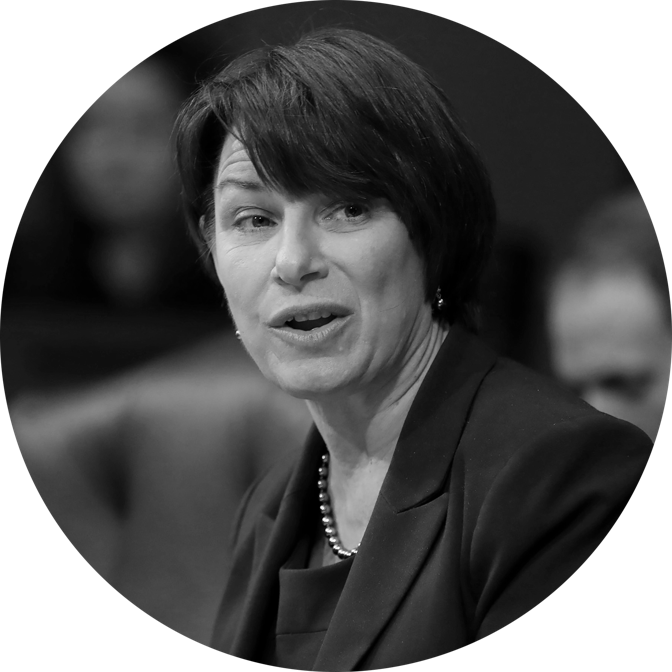 (Aaron P. Bernstein / REUTERS)AMY KLOBUCHAR
(Aaron P. Bernstein / REUTERS)AMY KLOBUCHARWho is she?
She has been a senator from Minnesota since 2007.
Is she running?
She announced plans to run in Minneapolis on February 9.
Why does she want to run?
Klobuchar represents a kind of heartland Democrat—progressive, but not aggressively so—who might have widespread appeal both in the Midwest and elsewhere. She’s tended to talk vaguely about middle-class issues.
Who wants her to run?
She’d probably build a constituency among mainstream Democrats. Her exchange with Justice Brett Kavanaugh during his confirmation hearing won her a lot of fans.
Can she win the nomination?
Maybe! CNN’s Harry Enten rates her one of the most “electable” potential candidates, a trait that Democratic voters are especially fixated on this cycle. Her launch has been tarnished by a series of stories about harsh treatment of staff, though.
What else do we know?
Sadly, she is not using this fly logo.
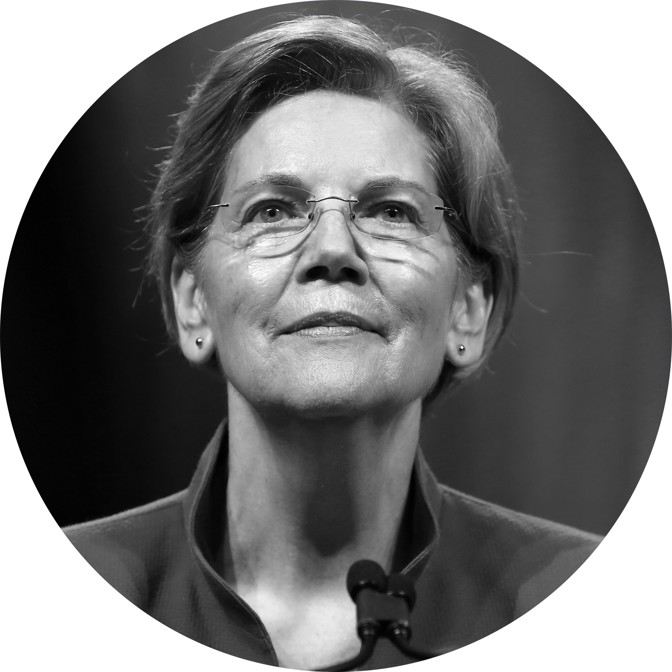 (Jonathan Bachman / Reuters)ELIZABETH WARREN
(Jonathan Bachman / Reuters)ELIZABETH WARRENWho is she?
A senator from Massachusetts since 2013, Warren was previously a professor at Harvard Law School, helped create the Consumer Financial Protection Bureau, and wrote a book on middle-class incomes.
Is she running?
Yes. She kicked off her campaign on February 9.
Why does she want to run?
Warren’s campaign is tightly focused on inequality, her signature issue since before entering politics. She has proposed an “ultra-millionaire tax” on people worth more than $50 million and a major overhaul of housing policies.
Who wants her to run?
People who backed Senator Bernie Sanders in 2016; people who were Bernie-curious but worried he was too irascible; people who didn’t like Bernie but are left-curious; Donald Trump.
Can she win the nomination?
Who knows? Warren’s platform is in step with the current Democratic Party’s, and her initial Iowa events went well. But she has also underperformed Democratic presidential nominees even in her super-liberal home state, and her handling of a DNA-test reveal to show her claimed Native American heritage was widely seen as a botch.
What else do we know?
She’s got a good doggo.
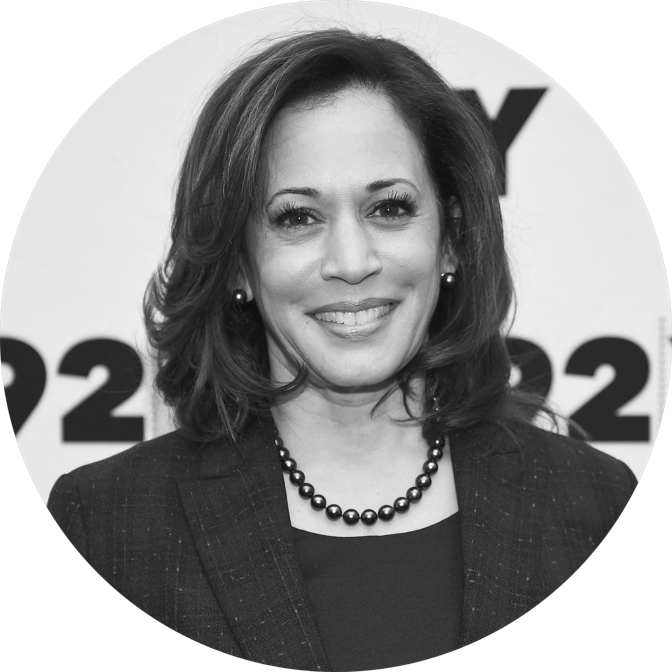 (Dimitrios Kambouris)KAMALA HARRIS
(Dimitrios Kambouris)KAMALA HARRISWho is she?
Harris, a first-term senator from California, was elected in 2016. She was previously the state’s attorney general.
Is she running?
Yes. She declared her candidacy on January 21, Martin Luther King Jr. Day.
Why does she want to run?
Harris seems to think that a woman of color who is an ex-prosecutor will check a range of boxes for Democratic voters. She has so far staked out a broad platform, trying to appeal to a wide swath of the party.
Who wants her to run?
Mainstream Democrats. She put up immediately impressive fundraising numbers, and she’s enlisted a number of former Hillary Clinton aides.
Can she win the nomination?
Sure, maybe. Harris has impressed in her short time in Washington, but it’s been a short time. Most of the country hasn’t seen her campaign yet.
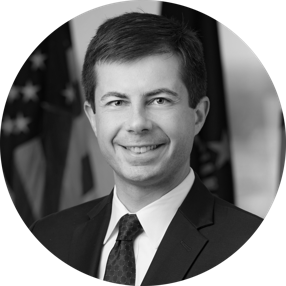 (City of South Bend, IN)PETE BUTTIGIEG
(City of South Bend, IN)PETE BUTTIGIEGWho is he?
Beats us! Kidding—but Buttigieg, the 37-year-old openly gay mayor of South Bend, Indiana, and a veteran of the Afghan War, is one of the lesser-known candidates in the field.
Is he running?
Yes. He announced an exploratory committee on January 23.
Why does he want to run?
Buttigieg’s sell is all about generation. He’s a Millennial, and thinks that his cohort faces new and unusual pressures and dilemmas that he is singularly equipped to answer. Plus, it’s a useful way to differentiate himself from the blue-haired bigwigs in the blue party.
Who wants him to run?
Buttigieg isn’t really popping up in polls at this point, but he has the support of some Obama alumni. He hopes to reach midwestern voters who deserted the Democrats in 2016.
Can he win the nomination?
Probably not. No mayor has been nominated since New York’s DeWitt Clinton in 1812. Buttigieg also fell short in a 2017 campaign for Democratic National Committee chair.
What else do we know?
It’s “BOOT-edge-edge,” and it’s Maltese for “lord of the poultry.”
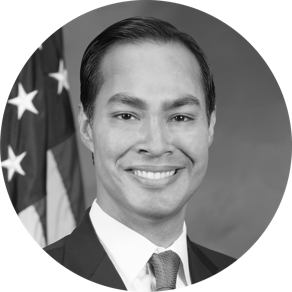 (DEPartment of Housing & Urban Development)JULIÁN CASTRO
(DEPartment of Housing & Urban Development)JULIÁN CASTROWho is he?
Castro was the mayor of San Antonio, Texas, before serving as secretary of housing and urban development under Barack Obama from 2014 to 2017.
Is he running?
Yes. He announced his bid on January 12 in San Antonio.
Why does he want to run?
Castro has long been saddled with the dreaded “rising star” tag, and with Texas still red, he’s got few options below the national stage. He’s emphasized his Hispanic-immigrant roots in early campaign rhetoric.
Who wants him to run?
It’s not yet clear. He’d like to take the Obama mantle and coalition, but that doesn’t mean he can.
Can he win the nomination?
He’s got a tough battle. Four years ago, he seemed like the future of the party; now the stage is crowded with rivals, potentially including fellow Texan Beto O’Rourke. "I am not a front-runner in this race, but I have not been a front-runner at any time in my life," Castro said during his announcement.
What else do we know?
Castro’s twin brother, Joaquin, who serves in the U.S. House, once subbed in for his brother in a parade during Julián’s mayoral campaign, so if you go to a campaign event, ask for proof that it’s really him.
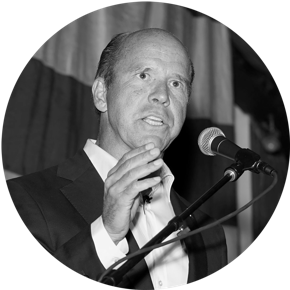 (KC McGinnis / Reuters)JOHN DELANEY
(KC McGinnis / Reuters)JOHN DELANEYWho is he?
A former four-term congressman from Maryland, he might be even less known than Pete Buttigieg, who at least has a memorable name.
Is he running?
Is he ever! Delaney announced way back in June 2017, hoping that a head start could make up for his lack of name recognition.
Why does he want to run?
Delaney, a successful businessman, is pitching himself as a centrist problem-solver.
Who wants him to run?
Unclear. He’s all but moved to Iowa in hopes of locking up the first caucus state, but even there his name ID isn’t great.
Can he win the nomination?
Nah.
 (Marco Garcia / AP)TULSI GABBARD
(Marco Garcia / AP)TULSI GABBARDWho is she?
Gabbard, 37, has represented Hawaii in the U.S. House since 2013. She previously served in Iraq.
Is she running?
Yes. She officially announced on February 2 in Honolulu.
Why does she want to run?
Gabbard says her central issue is “war and peace,” which basically means a noninterventionist foreign policy.
Who wants her to run?
Gabbard is likely to draw support from Sanders backers. She supported Bernie in 2016, resigning from a post as vice chair of the Democratic National Committee to do so, and she’s modeled herself largely on him.
Can she win the nomination?
Unlikely. Not only did she have to apologize for past anti-gay comments, but she’s perhaps best known for her unusually friendly stance toward Syrian President Bashar al-Assad. Also, her campaign sounds like a bit of a mess so far.
What else do we know?
If elected, she would be the first Hindu president.
 (ary Altaffer/ AP)KIRSTEN GILLIBRAND
(ary Altaffer/ AP)KIRSTEN GILLIBRANDWho is she?
Gillibrand has been a senator from New York since 2009, replacing Hillary Clinton. Before that, she served in the U.S. House.
Is she running?
Yes. She announced her exploratory committee on The Late Show With Stephen Colbert on January 15 and also in this kind of weird video, which feels like a joint marketing venture with Google.
Why does she want to run?
Gillibrand has emphasized women’s issues, from sexual harassment in the military and more recent #MeToo stories to equal pay, and her role as a mom is central in her announcement video. Once a fairly conservative Democrat, she has moved left in recent years.
Who wants her to run?
Gillibrand could have a fairly broad appeal among mainstream Democratic voters, and she hopes that her time representing upstate New York gives her an advantage with nonurban voters. She has, however, earned the enmity of Clintonworld for her critiques of Bill.
Can she win the nomination?
Perhaps. Coming from New York, she has a fundraising and media leg up.
What else do we know?
Sometimes people say she’s a little boring, but do they realize she went on Desus & Mero?
 (JOSHUA LOTT / AFP / Getty)ANDREW YANG
(JOSHUA LOTT / AFP / Getty)ANDREW YANGWho is he?
Yang is <checks Google> a tech entrepreneur who created the test-preparation company Manhattan Prep and then Venture for America, which tries to incubate start-ups outside New York and the Bay Area, and which is based in New York.
Is he running?
Apparently, yes! He filed to run on November 6, 2017.
Why does he want to run?
Yang’s big idea is a $1,000 per month universal basic income for every American adult.
Who wants him to run?
His family, presumably.
Can he win the nomination?
No.
 (Amy Harris / Invision / AP)MARIANNE WILLIAMSON
(Amy Harris / Invision / AP)MARIANNE WILLIAMSONWho is she?
If you don’t know the inspirational author and speaker, you know her aphorisms (e.g., “Our deepest fear is not that we are inadequate. Our deepest fear is that we are powerful beyond measure.”).
Is she running?
Yes. She announced her candidacy on January 28.
Why does she want to run?
It’s a little tough to say. She writes on her website, “My campaign for the presidency is dedicated to this search for higher wisdom.” She criticized Hillary Clinton for coziness with corporate interests in 2016, and she ran for the U.S. House in 2014.
Who wants her to run?
Williamson has a lot of fans, but whether they really want her as president is another question.
Can she win the nomination?
Stranger things have happened, but no.
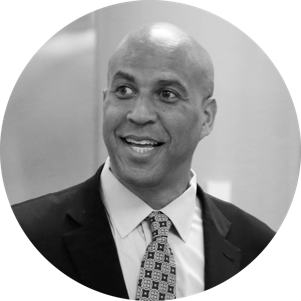 (Joshua Roberts / Reuters)CORY BOOKER
(Joshua Roberts / Reuters)CORY BOOKERWho is he?
A senator from New Jersey, he was previously the social-media-savvy mayor of Newark.
Is he running?
Yes. He launched his campaign on February 1.
Why does he want to run?
In the Senate, Booker has been big on criminal-justice reform, including marijuana liberalization. He has recently embraced progressive ideas including Medicare for All and some sort of universal nest egg for children.
Who wants him to run?
He’ll aim for Obama-style uplift and inspiration to attract voters. Booker has previously been close to Facebook’s Mark Zuckerberg and to Wall Street, both of which could be a liability in a Democratic primary.
Can he win the nomination?
Possibly.
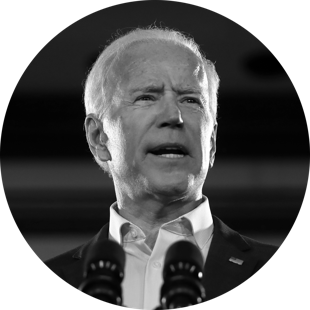 (Jeff Roberson / AP)JOE BIDEN
(Jeff Roberson / AP)JOE BIDENWho is he?
Don’t play coy. You know the former vice president, Delaware senator, and recurring Onion character.
Is he running?
Even Biden doesn’t know, though he says he’ll decide soon.
Why does he want to run?
Biden has wanted to be president since roughly forever, and he thinks he might be the best bet to win back blue-collar voters and defeat President Trump in 2020. (Trump reportedly agrees.) But Biden seems reluctant to end his career with a primary loss, knows he’s old (he’ll turn 78 right after Election Day 2020), and is possibly out of step with the new Democratic Party.
Who wants him to run?
If you believe the polls, he’s ahead of the rest of the Democratic pack. It’s not clear that you should really believe the polls at this point in the race.
Can he win the nomination?
It’s possible. Being Barack Obama’s vice president gave Biden a fresh glow. Then again, we’ve seen him run for president twice before, and not very effectively.
 (Department of Labor)JOHN HICKENLOOPER
(Department of Labor)JOHN HICKENLOOPERWho is he?
Hickenlooper was the governor of Colorado until January, and previously held the most Colorado trifecta of jobs imaginable: mayor of Denver, geologist, and brewery owner.
Is he running?
Basically. “We’re beyond mulling,” he told the Associated Press in December 2018. He even told a waitress in New Hampshire he was running, but then backtracked.
Why does he want to run?
Hickenlooper brands himself as an effective manager and deal maker who has governed effectively in a purple state while still staying progressive. He’s said he thinks the Democratic field could be too focused on grievance and not enough on policy.
Who wants him to run?
Hard to say. Hickenlooper’s aw-shucks pragmatism plays well with pundits, but he doesn’t have much of a national profile at this point.
Can he win the nomination?
Maybe, but Hickenlooper might be too business-friendly (and just plain friendly) to succeed in this primary.
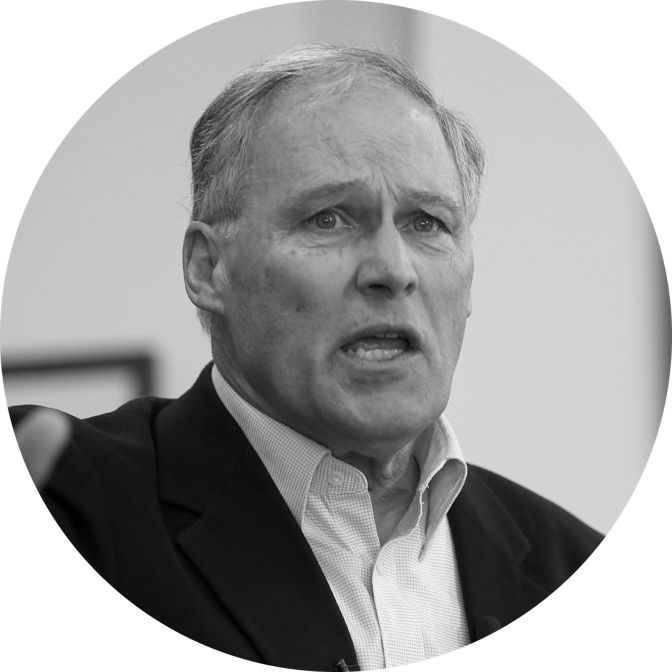 (Mary Schwalm / AP)JAY INSLEE
(Mary Schwalm / AP)JAY INSLEEWho is he?
Inslee is a second-term governor of Washington, and was previously in the U.S. House.
Is he running?
He sure sounds like it, but hasn’t declared.
Why does he want to run?
Climate change. That’s been Inslee’s big issue as governor, and it would be at the center of his campaign for president, too.
Who wants him to run?
A campaign would presumably attract environmentalist support, and he hopes that his time as chair of the Democratic Governors Association would help, though he’s already hit some turbulence in New Hampshire.
Can he win the nomination?
It’s a very long shot.
 (Simon Dawson / Reuters)MIKE BLOOMBERG
(Simon Dawson / Reuters)MIKE BLOOMBERGWho is he?
The billionaire former mayor of New York, Bloomberg is a Democrat-turned-Republican-turned-independent-turned-Democrat-again.
Is he running?
Not officially, but he told the Associated Press last year that he thought the latest he could decide was February.
Why does he want to run?
For starters, he is convinced that he’d be better and more competent at the job than anyone else. A Bloomberg bid would likely center on his pet issues of gun control, climate change, and fighting the more fiscally liberal wing of the Democratic Party tooth and silver-plated nail.
Who wants him to run?
What, is his considerable ego not enough? Though his tenure as mayor is generally well regarded, it’s unclear what Bloomberg’s Democratic constituency is beyond other wealthy, socially liberal and fiscally conservative types, and it’s not as if he needs their money to run.
Can he win the nomination?
Probably not. Bloomberg has also previously toyed with an independent run, but says that would only help Trump in 2020.
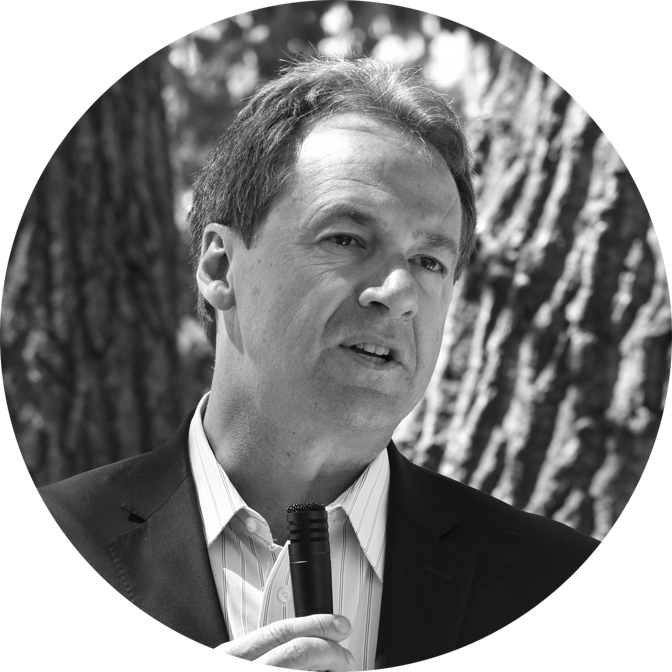 (Matthew Brown / AP)STEVE BULLOCK
(Matthew Brown / AP)STEVE BULLOCKWho is he?
Bullock is the governor of Montana, where he won reelection in 2016 even as Donald Trump won the state.
Is he running?
Maybe. In August, he said in Iowa, “I do have a story of how I’ve been able to bring people together, and I think that’s in part what our country desperately needs.”
Why does he want to run?
Bullock would portray himself as a candidate who can win in Trump country and get things done across the aisle. He’s also been an outspoken advocate of campaign-finance reform.
Who wants him to run?
Unclear. The Great Plains and Mountain West aren’t a traditional base for national Democrats.
Can he win the nomination?
Maybe, but it’s an outside chance.
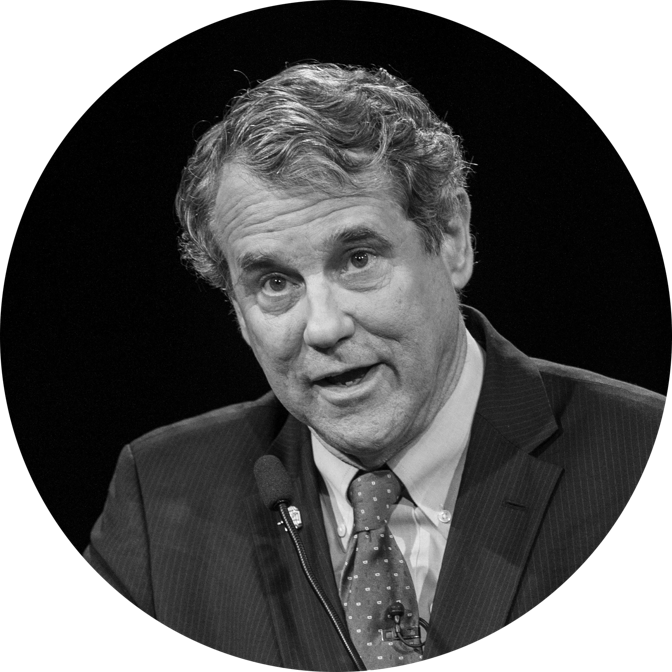 (Phil Long / Reuters)SHERROD BROWN
(Phil Long / Reuters)SHERROD BROWNWho is he?
By statute, I am required to mention the senator from Ohio’s tousled hair, rumpled appearance, and gravelly voice.
Is he running?
Not yet, but he is seriously exploring the idea.
Why does he want to run?
Brown’s campaign would be focused on workers and inequality. He’s somewhat akin to Bernie Sanders, but his progressivism is of the midwestern, organized-labor variety, and he thinks he can win blue-collar voters in the Midwest while still pushing a strongly liberal platform.
Who wants him to run?
Leftist Democrats who think Sanders is too old and Elizabeth Warren too weak a candidate; lots of dudes in union halls in Northeast Ohio.
Can he win the nomination?
Possibly.
What else do we know?
Like Warren, Brown has a very good dog.
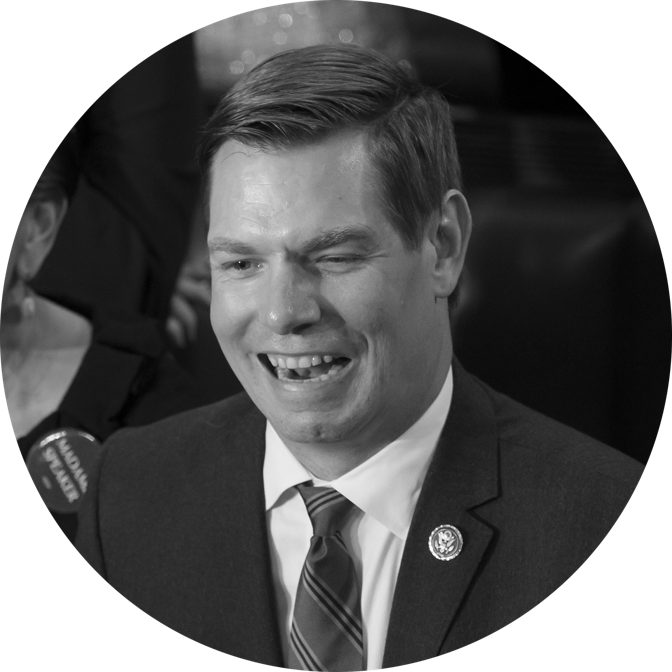 (J. Scott Applewhite / AP)ERIC SWALWELL
(J. Scott Applewhite / AP)ERIC SWALWELLWho is he?
Swalwell, who is 38, is a U.S. representative from California’s Bay Area.
Is he running?
He said in November that he was seriously considering it and would decide soon. A source told Politico it was a sure thing.
Why does he want to run?
Swalwell says the Democratic Party needs fresh blood. “We can’t count on the same old leaders to solve the same old problems,” he told The Mercury News. “It’s going to take new energy and new ideas and a new confidence to do that.”
Who wants him to run?
Swalwell’s seat on the House Intelligence Committee has made him a prominent Trump persecutor, but it’s still a bit of a mystery.
Can he win the nomination?
No? Let’s go with no.
 (Mark Tenally / AP)TERRY MCAULIFFE
(Mark Tenally / AP)TERRY MCAULIFFEWho is he?
Once known primarily as a close friend of Bill Clinton’s and a Democratic fundraising prodigy, McAuliffe reinvented himself as the governor of Virginia from 2014 to 2018.
Is he running?
He told CNN on February 3 that he’d “like to” run, but hasn’t decided yet.
Why does he want to run?
McAuliffe holds up his governorship as proof that he can be a problem-solver and deal maker across the aisle, and his Clintonesque politics would be a contrast to many of the candidates in the field.
Who wants him to run?
It’s hard to say. McAuliffe’s tenure in office quieted some doubters, but the Clintons—both the people and their centrist policy approach—are out of style in the Democratic Party.
Can he win the nomination?
Probably not.
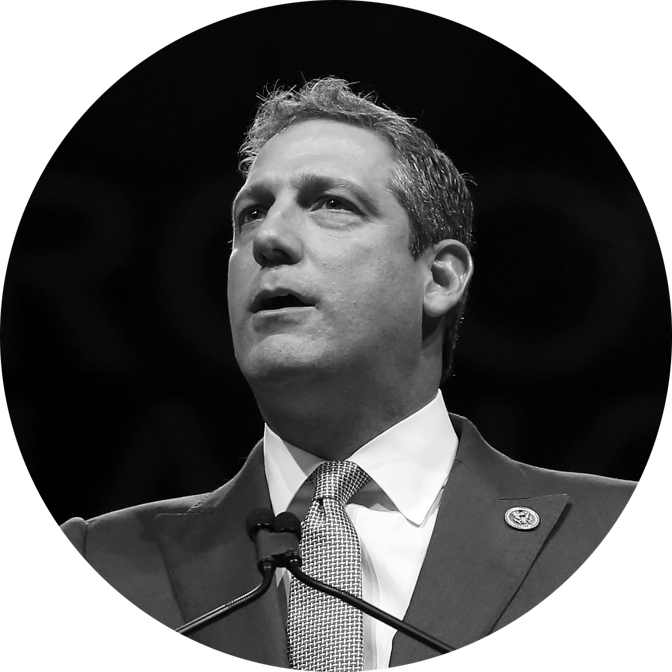 (Jonathan Bachman / Reuters)TIM RYAN
(Jonathan Bachman / Reuters)TIM RYANWho is he?
The Ohioan is a member of the House, representing Youngstown and America’s greatest city, Akron.
Is he running?
Not now, but he is toying with the idea and visiting Iowa and New Hampshire.
Why does he want to run?
Ryan is a classic Rust Belt Democrat and friend of labor, and he’s concerned about the fate of manufacturing. He is also an outspoken critic of Democratic leadership, mounting a quixotic challenge to Nancy Pelosi in 2017.
Who wants him to run?
Ryan comes from a part of Ohio that traditionally votes Democratic but swung to Trump, and he’d have supporters there.
Can he win the nomination?
Probably not. Members of the House seldom win the nomination; he’s got little national profile; and he might be competing against another Northeast Ohio Democrat with an overlapping set of concerns, Sherrod Brown.
What else do we know?
He’s big on meditation.
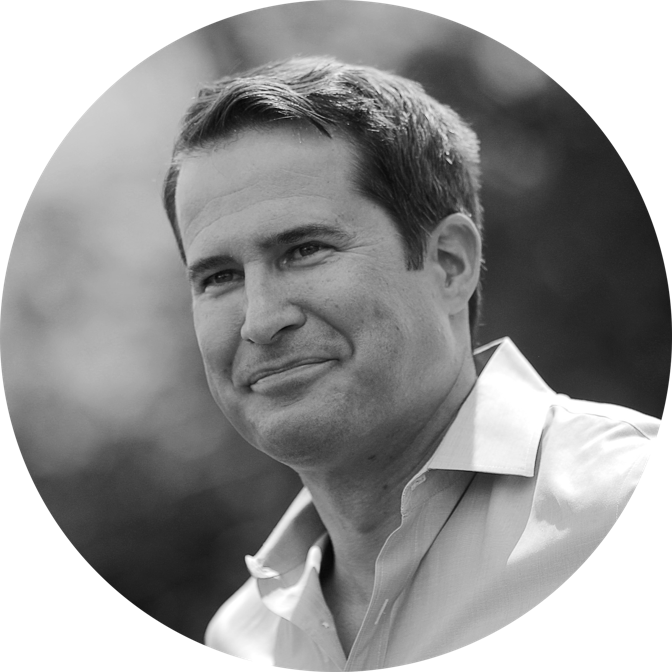 (Brian Snyder / Reuters)SETH MOULTON
(Brian Snyder / Reuters)SETH MOULTONWho is he?
A third-term congressman from Massachusetts, Moulton graduated from Harvard, then served in the Marines in Iraq.
Is he running?
He says he’s thinking about it.
Why does he want to run?
In an interview with BuzzFeed, he said he felt the Democratic Party needs younger leaders and, alluding to his military career, “someone ... for whom standing up to a bully like Donald Trump isn’t the biggest challenge he or she has ever faced in life.”
Who wants him to run?
That’s not clear. With his sparkling resume and movie-star looks, Moulton has grabbed a lot of attention, but he doesn’t have an obviously strong constituency, and a rebellion against Nancy Pelosi’s leadership after the 2018 election fizzled.
Can he win?
It’s hard to say, but it’s inauspicious. Moulton is an untested campaigner outside of the House, and he wouldn’t even be the first young veteran to jump in, after Pete Buttigieg.
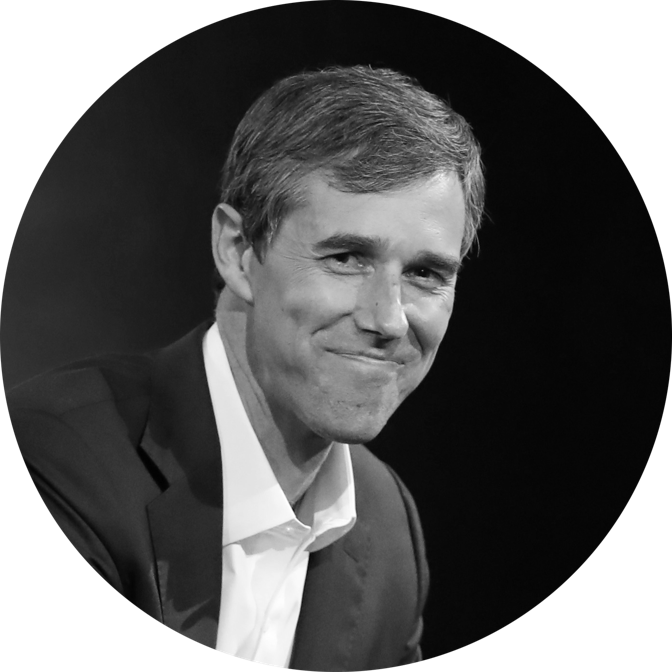 (Kathy Willens / AP)BETO O’ROURKE
(Kathy Willens / AP)BETO O’ROURKEWho is he?
The man, the myth, the legend, the former U.S. representative from El Paso and Democratic candidate for Senate in Texas.
Is he running?
Not right now. O’Rourke seems genuinely torn about whether to try to capitalize on his election-losing-but-attention-winning 2018 Senate run and says he’ll decide by the end of February.
Why does he want to run?
O’Rourke is trying to figure that out. He’s young, hip, and inspirational, like Obama; like Obama, his reputation is perhaps more liberal than his voting record.
Who wants him to run?
A lot of livestream watchers and thirsty tweeters, a coterie of ex–Obama aides, and a bunch of operatives running the Draft Beto campaign.
Can he win the nomination?
Maybe, but don’t bet the farm on it.
What else do we know?
This video is very important.
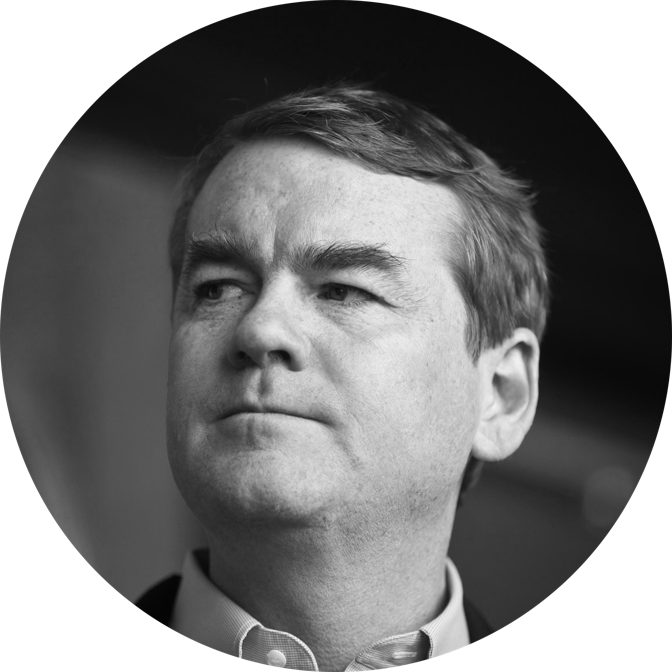 (Samantha Sais / Reuters)MICHAEL BENNET
(Samantha Sais / Reuters)MICHAEL BENNETWho is he?
The Coloradan was appointed to the Senate in 2009 and has since won reelection twice.
Is he running?
Not yet, but he sounds like he might. “We’ve got a million people that are going to run, which I think is great,” he said on Meet the Press on February 10. “I think having one more voice in that conversation that’s focused on America’s future, I don’t think would hurt.”
Why does he want to run?
Like his fellow Rocky Mountain State Democrat John Hickenlooper, Bennet presents himself as someone with experience in business and management who knows how to work with Republicans.
Who wants him to run?
Probably some of the same people who want Hickenlooper to run. Bennet gained new fans with a viral video of his impassioned rant about Ted Cruz during the January 2019 government shutdown.
Can he win?
Perhaps, but he’s got a crowded lane and only a small national profile.
 (Lawrence Bryant / REuters)STACEY ABRAMS
(Lawrence Bryant / REuters)STACEY ABRAMSWho is she?
Abrams ran unsuccessfully for governor of Georgia in 2018, and was previously the Democratic leader in the state house.
Is she running?
At the moment, it seems more likely she’ll run for U.S. Senate against David Perdue in 2020, but she could still jump in.
Why does she want to run?
Throughout her career, Abrams has focused on bread-and-butter issues like criminal-justice reform and education, and since losing a 2018 election stained by problems with ballot access, she’s made voting rights a special focus.
Who wants her to run?
Abrams has drawn excitement from young Democrats, the liberal wing of the party, and African Americans. Her rebuttal to President Trump’s 2019 State of the Union address won her new fans, and former Obama aide Dan Pfeiffer says she should run.
Can she win?
Maybe.
 (Mike Segar / Reuters)BILL DE BLASIO
(Mike Segar / Reuters)BILL DE BLASIOWho is he?
The mayor of New York City.
Is he running?
No, but he hasn’t ruled it out, either.
Why does he want to run?
De Blasio was the harbinger of the Democratic Party’s leftward shift on economic issues, and they’d be at the center of his campaign, though the movement seems to have left him behind a bit.
Who wants him to run?
That’s precisely the problem. De Blasio’s term as mayor has been a little bumpy, and his attempts to build a national profile haven’t gotten far.
Can he win the nomination?
Doubtful.
What else do we know?
De Blasio would probably be the tallest candidate since Bill Bradley, in 2000. Both men are 6 foot 5.
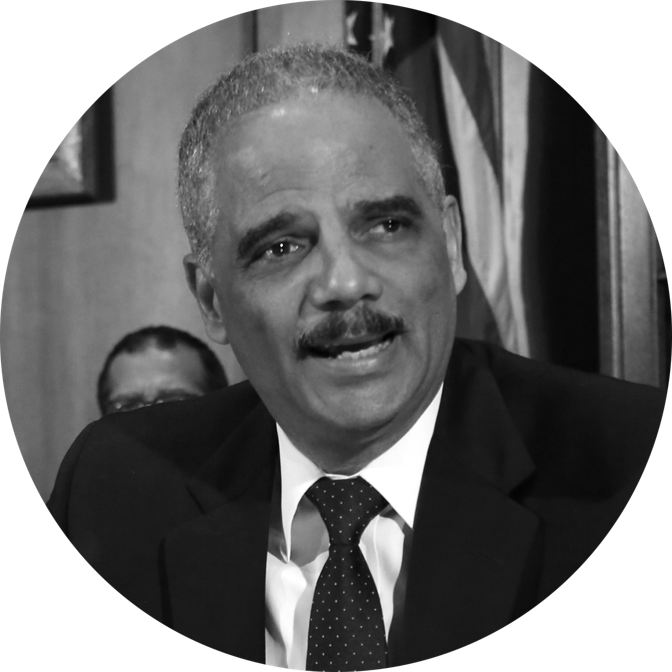 (Yuri Gripas / Reuters)ERIC HOLDER
(Yuri Gripas / Reuters)ERIC HOLDERWho is he?
Holder was the U.S. attorney general from 2009 to 2015, and he’s currently leading a Democratic redistricting initiative with help from some retiree named Barack Obama.
Is he running?
No, but in July he answered a question on the topic by saying, “Am I interested in it? Yeah, I’m interested!” He says he’ll decide in March.
Why does he want to run?
Holder has three big areas of interest: redistricting, civil rights, and beating Donald Trump by all means necessary.
Who wants him to run?
Tough to say. Obamaworld isn’t really lining up behind him, and he’s never held elected office, despite a successful Washington career.
Can he win the nomination?
Probably not.
 (Faith Ninivaggi / Reuters)MITCH LANDRIEU
(Faith Ninivaggi / Reuters)MITCH LANDRIEUWho is he?
Landrieu served as the mayor of New Orleans from 2010 to 2018. He was previously Louisiana’s lieutenant governor.
Is he running?
It seems unlikely. “Probably not, but if I change my mind, you’re going to be the first to know,” he told the New York Times editor Dean Baquet in December.
Why does he want to run?
Like the other mayors contemplating a run, Landrieu considers himself a problem-solver. He’s also become a campaigner for racial reconciliation, taking down Confederate monuments in New Orleans, and staking a claim for progressivism in the Deep South.
Who wants him to run?
Not clear.
Can he win the nomination?
Probably not, especially if he doesn’t run.
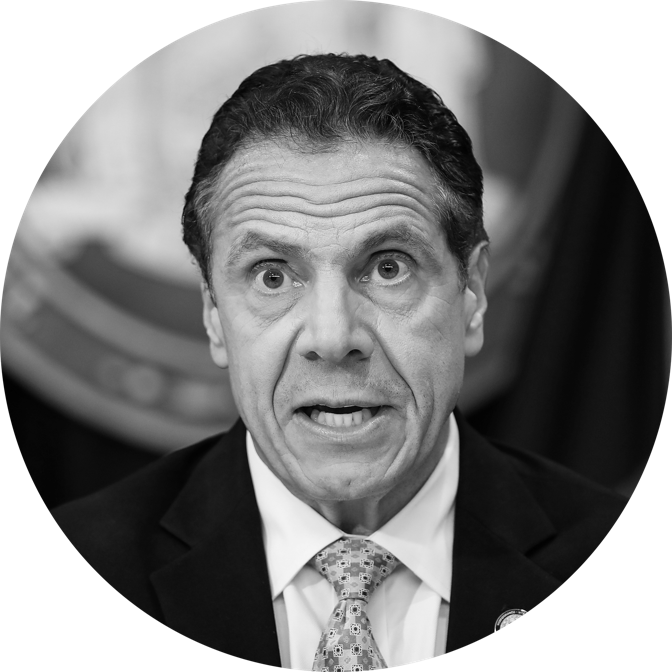 (Jeenah Moon / Reuters)ANDREW CUOMO
(Jeenah Moon / Reuters)ANDREW CUOMOWho is he?
Cuomo is the governor of New York. He was formerly the secretary of housing and urban development under Bill Clinton.
Is he running?
No. Though he's long toyed with the idea, Cuomo said in November 2018, "I am ruling it out." Then again, his father was indecisive about running for president, too.
Why does he want to run?
One can adopt a Freudian analysis related to his father's unfinished business, or one can note that Cuomo thinks he's got more management experience and success, including working with Republicans, than any Democratic candidate.
Who wants him to run?
Practically no one. Cuomo's defenders bristle that he doesn't get enough credit, but his work with Republicans has infuriated Empire State Democrats without winning any real GOP friends.
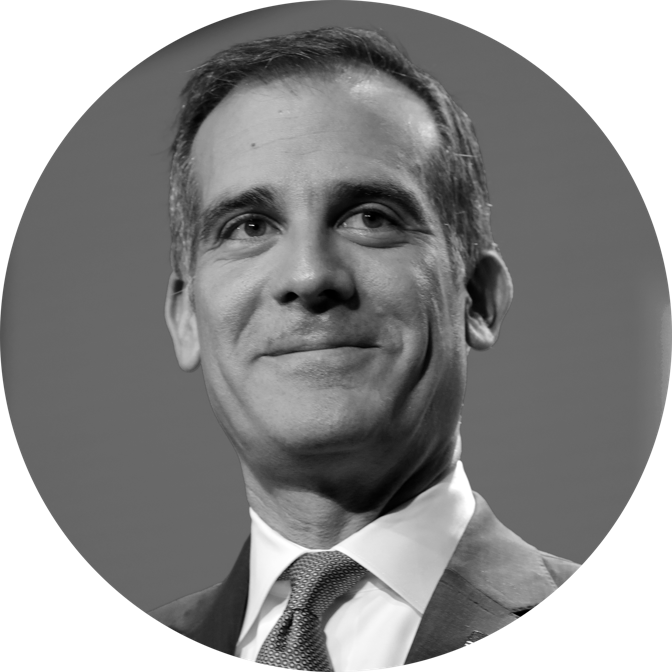 (Yuri Gripas / Reuters)ERIC GARCETTI
(Yuri Gripas / Reuters)ERIC GARCETTIWho is he?
Garcetti is the mayor of Los Angeles.
Is he running?
No. Garcetti flirted with the idea, visiting South Carolina and naming a hypothetical Cabinet full of mayors, but said on January 29 that he would not run.
Why did he want to run?
Garcetti’s pitch was that mayors actually get things done and that his lack of experience in Washington was a positive.
Who wanted him to run?
Garcetti was reelected in a landslide in 2017, but he had no apparent national constituency.
 (Andrew Harnik / AP)HILLARY CLINTON
(Andrew Harnik / AP)HILLARY CLINTONWho is she?
Come on.
Is she running?
No, but until she issues a Shermanesque denial signed in blood—or the filing deadline passes—the rumors won’t die.
Why does she want to run?
She doesn’t.
Who wants her to run?
Pundits, mostly.
Can she win the nomination?
See above.
 (Mike Blake / Reuters)MICHAEL AVENATTI
(Mike Blake / Reuters)MICHAEL AVENATTIWho is he?
Stormy Daniels’s lawyer
Is he running?
Nope nope nope nope.
Why did he want to run?
Attention, power, self-aggrandizement
Who wanted him to run?
Some very loud, very devoted fans.
Could he have won the nomination?
No, and his comment to Time that the nominee “better be a white male” was the final straw.
 (Matthew Putney / Reuters)TOM STEYER
(Matthew Putney / Reuters)TOM STEYERWho is he?
A retired California hedge-funder, Steyer has poured his fortune into political advocacy on climate change and flirted with running for office.
Is he running?
No. He announced on January 9 that he would sit the race out.
Why did he want to run?
Impeachment, baby.
Who wanted him to run?
There must be some #Resistance faction out there that did.
Could he have won the nomination?
Nope.
 (Leah Millis / Reuters)DONALD TRUMP
(Leah Millis / Reuters)DONALD TRUMPWho is he?
Really?
Fine. Is he running?
Yes. He filed for reelection the day of his inauguration, though some speculate that he might decide not to follow through.
Why does he want to run?
Build the wall, Keep America Great, etc.
Who wants him to run?
Consistently about 35 to 40 percent of the country; a small majority consistently says he should not.
Can he win the nomination?
Yes. While his low approval ratings overall have stoked talk of a primary challenge, Trump remains very popular among Republican voters, and as president has broad power to muscle the GOP process to protect himself.
What else do we know?
There is nothing else new and interesting to know about Trump. You’ve made your mind up already, one way or another.
 (Stephan Savoia / AP)WILLIAM WELD
(Stephan Savoia / AP)WILLIAM WELDWho is he?
Weld, a former Justice Department official, was the governor of Massachusetts from 1991 to 1997 and was the Libertarian Party’s vice-presidential nominee in 2016.
Is he running?
Yes. Weld announced plans to form an exploratory committee on February 15.
Why is he running?
Calling President Trump “unstable,” Weld said, “I think our country is in grave peril and I cannot sit any longer quietly on the sidelines.”
Who wants him to run?
Weld always inspired respect from certain quarters, and the 2016 Libertarian ticket did well by the party’s standards, but Weld’s unorthodox politics and hot-and-cold relationship with the GOP probably don’t help his support.
Can he win the nomination?
No.
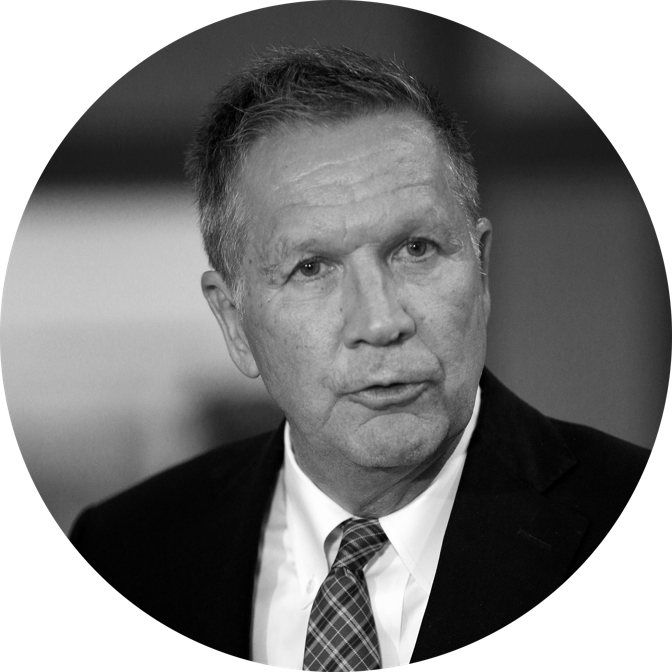 (Elizabeth Frantz / Reuters)JOHN KASICH
(Elizabeth Frantz / Reuters)JOHN KASICHWho is he?
Kasich recently finished up two terms as governor of Ohio, previously served in the U.S. House, and ran in the 2016 GOP primary.
Is he running?
Not at the moment. On December 23, he told Fox News’s Chris Wallace, “I’m not trying to be coy. We are seriously looking at it.” Then, on January 15, he signed on as a CNN contributor, which is either a sign he’s decided against or a clever way to get airtime.
Why does he want to run?
Kasich has long wanted to be president—he ran, quixotically, in 2000. But Kasich has styled himself as a vocal Trump critic, and sees himself as an alternative to the president who is both truer to conservative principles and more reliable and moral.
Who wants him to run?
Maybe some dead-end never-Trump conservatives. It’s tough to say.
Can he win the nomination?
He doesn’t think so. Kasich previously ruled out an independent or third-party run, but has since reopened that door.
What else do we know?
John Kasich bought a Roots CD and hated it so much, he threw it out his car window. John Kasich hated the Coen brothers’ classic Fargo so much, he tried to get his local Blockbuster to quit renting it. George Will laughed at him. John Kasich is the Bill Brasky of philistinism, but John Kasich probably hated that skit, too.
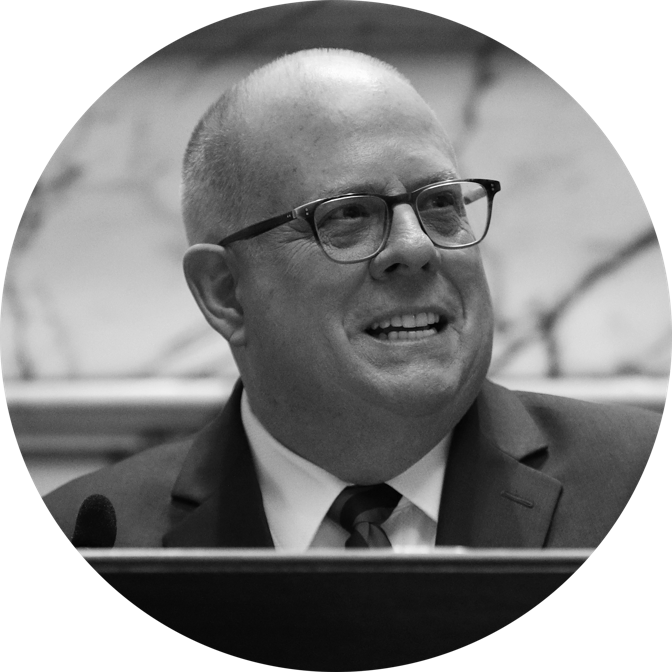 (Patrick Semansky / AP)LARRY HOGAN
(Patrick Semansky / AP)LARRY HOGANWho is he?
In November, Hogan became the first Republican to be reelected as governor of Maryland since 1954.
Is he running?
No, and people close to him doubt he will, but he has pointedly not ruled it out.
Why does he want to run?
Hogan is a pragmatic, moderate Republican who has won widespread acclaim in a solidly Democratic state—in other words, everything Trump is not.
Who wants him to run?
Never-Trump conservatives; whatever the Republican equivalent of a “good government” type is.
Can he win the nomination?
As long as Trump is running, no.
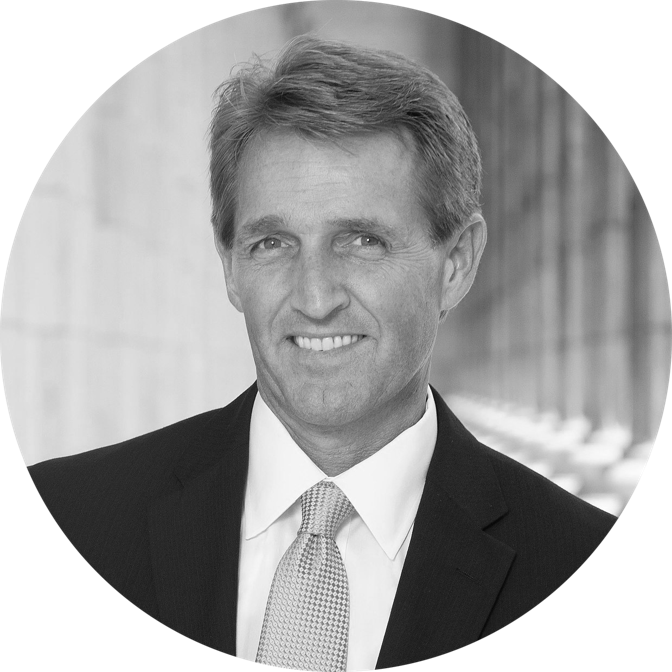 (Official Senate PhotO)JEFF FLAKE
(Official Senate PhotO)JEFF FLAKEWho is he?
The Arizonan, a former U.S. House member, decided not to run for reelection to the Senate in 2019.
Is he running?
No. When he took a contributor role with CBS on January 23, he said he was not running.
Why did he want to run?
Starting in 2016, Flake was perhaps Trump’s most outspoken critic among elected Republicans, lambasting the president as immoral, unserious, and unconservative.
Who wanted him to run?
Liberal pundits.
Could he have won the nomination?
No. Flake retired because he didn’t even think he could win the Republican Senate nomination.
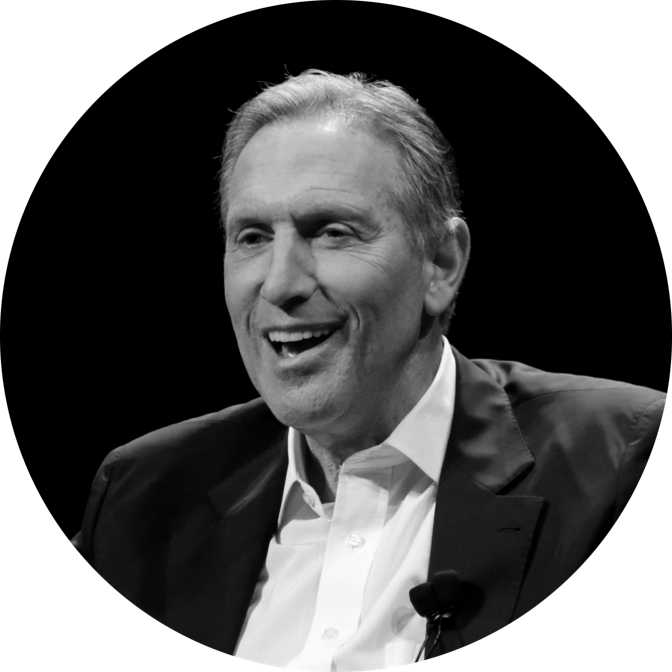 (JASON REDMOND / Reuters)HOWARD SCHULTZ
(JASON REDMOND / Reuters)HOWARD SCHULTZWho is he?
That guy who used to sell you over-roasted coffee. Schultz stepped down as CEO of Starbucks in 2018.
Is he running?
Maybe. Schultz says he’s exploring it, but after a wave of backlash to his candidacy, his adviser Bill Burton said on January 29 that he wouldn’t decide until at least mid-2019.
Why does he want to run?
Personal pique over Representative Alexandria Ocasio-Cortez’s support for a 70 percent marginal tax rate. No, seriously. Schultz has offered some vague platitudes about centrist ideas and bringing the country together, but most of it aligns with standard Democratic positions.
Who wants him to run?
Donald Trump.
Can he win the nomination?
The great thing about being a billionaire self-funder as an independent is that you don’t have to win a nomination. The downside is that you still have to win votes eventually.
 (Darrin Zammit Lupi / Reuters)JOHN MCAFEE
(Darrin Zammit Lupi / Reuters)JOHN MCAFEEWho is he?
He's the guy who made your antivirus program-turned-international fugitive-turned-unsuccessful 2016 Libertarian presidential candidate. A typical politician, basically.
Is he running?
He says he's going to either vie for the Libertarian nomination again or run as an independent, though it's probably worth regarding what he says with some skepticism.
Why does he want to run?
To promote cryptocurrency, brah. “See, I don’t want to be president,” he told a crypto trade publication in November 2018. “I couldn’t be ... no one’s going to elect me president, please God. However, I’ve got the right to run.”
Who wants him to run?
Rubberneckers, disaster enthusiasts.
Can he win the nomination?
“No one’s going to elect me president, please God.”
What else do we know?
You want to see what it's like as the opposite sex for three hours? What being kissed by God feels like? You want the infinite experience of freedom? Knowledge of yourself? Eroticism that incinerates you? A simple good time? Forgetfulness? He's your man.
Gun violence has killed nearly 1,200 children in the United States since the school massacre in Parkland, Florida, one year ago. Few of these deaths became the focus of the nation’s attention. Maybe that’s because these killings were so mundane, so normal, in the 21st-century United States.
A few weeks after the Parkland shooting, a 17-year-old high-school student in Birmingham, Alabama, named Courtlin Arrington, who’d long dreamed of becoming a nurse, was shot and killed in class, just months before she was to graduate. In July, three siblings—the oldest of whom was 6—were, according to news reports, murdered along with their mother by their father, who used the same gun to kill himself. A few months after that, a 17-year-old budding entrepreneur in Dayton, Ohio, named Lashonda Sharreice Childs was allegedly murdered by her ex-boyfriend. Just days before her death, according to local news media, Childs had written in a Facebook post that “domestic violence is real,” that it wasn’t “just in movies.” In December, Izabella “Izzy” Marie Helem was shot to death at the age of 4. Izzy’s 3-year-old brother had been playing with a gun he found in their grandmother’s Lebanon, Indiana, home and accidentally fired it in her direction.
While the rate of firearm-related homicides has declined since its peak in the 1980s, gun violence is the second most common cause of death among children in the U.S., according to one recent study, and its role in youth fatalities has expanded significantly in recent years. Seldom do such fatalities result from high-profile campus massacres like that in Parkland, Florida, last February, when a 19-year-old former student slaughtered 17 people, including 14 students.
[Read: The Parkland students aren’t going away]
Seldom do those fatalities happen on school campuses at all, in fact. While comprehensive data are limited, a 2017 study found that the majority—85 percent—of children 12 or younger who were shot to death from 2003 to 2013 were killed in a home. Roughly four in 10 kids aged 13 to 17 who were killed with a gun also died in a home; another four in 10 were killed in the streets. Meanwhile, nearly two in three of the country’s gun deaths (of all ages) are the result of suicide, according to a FiveThirtyEight analysis of federal data. The remaining third are homicides, the analysis notes, and public mass shootings make up less than 1 percent of firearm fatalities, according to separate reporting by The New York Times.
Research published late last February by James Alan Fox, a Northeastern University professor who has studied mass murders since the 1980s, underscores the rarity of Parkland-like incidents of gun violence. In his analysis, co-written by the doctoral student Emma Fridel, Fox rejects the characterization of mass school shootings as a national “epidemic.” Focusing on data spanning roughly the past two decades, the researchers found that of the 20 to 30 mass murders that occur on average each year, about one of them takes place at a school. (A mass shooting is defined as one with four or more fatalities.) The shooting incidents involving students, they show, have grown less frequent than they were in the 1990s, when the number of children killed in schools was four times what it is today.
Taken collectively, the data indicate that children who are the victims of gun violence are far more likely to experience it in incidents smaller in scope and greater in frequency than public mass shootings—incidents like those that took the lives of Courtlin and Lashonda and Izzy, from drive-by shootings to murder-suicides to preventable accidents. The cities where such violence is most common also tend to have high concentrations of low-income people of color. A review of a recent project profiling each child who was shot to death in the year since Parkland shows that most victims were youth of color, many of them in neighborhoods where community gun violence is common. African Americans comprise nearly two-thirds of gun-homicide victims among people ages 15 to 29, for example, which makes them 18 times more likely than their white peers to be murdered this way. But the more-mundane shootings, and the ones that mainly affect people of color, tend to get far less media attention than those that occur in suburban or relatively affluent and predominantly white communities.
Even incidents that do take place on campuses are rarely mass killings. Mass school shootings account for less than 1 percent of the gun-violence incidents on K–12 campuses, according to a recent report co-published by the country’s two largest teachers’ unions and Everytown for Gun Safety, which advocates for stricter gun control. From 2013 to 2018, slightly more than half of these school-based incidents were intentional, small-scale shootings. Typical scenarios involved arguments between two individuals that escalated, acts of domestic violence, parking-lot altercations, and robberies that somehow involved the campus.
Unintentional shootings—such as when a California high-school math teacher accidentally fired his gun in a safety demonstration during class last March, causing debris from the classroom ceiling to fall and strike a 17-year-old in the neck—made up about a fifth of these incidents. Another 12 percent were either uncategorized or the result of legal intervention; a police officer firing a gun at a potential shooter, for instance. The remaining 12 percent involved suicide deaths or attempts.
Mass school shootings like Parkland are clearly an anomaly within the landscape of gun violence in the U.S. But these sorts of incidents are at the center of a lot of high-profile activism. The Parkland students had unusual success in galvanizing a national conversation around gun control. Last February, still raw from the violence they witnessed, the students quickly swept much of the country into their movement, appearing in the press and at rallies and spearheading the massive gun-reform protest March for Our Lives just weeks after the shooting.
As I reported last year, these teens’ eloquence and political savvy, which themselves captured public attention, were at least partly a testament to the robust curriculum offered at their public school. Most of the activists are also white or relatively well-off, I wrote, which might have helped earn them the outpouring of sympathy and solidarity they received. But the Parkland teens ensured that their movement included students of color, and acknowledged the steady drip of community gun violence that so many of their less-privileged peers endure. Youth activists out of cities such as Chicago and Baltimore helped to organize March for Our Lives as well.
Read: How America outlawed adolescence
Nonetheless, the Parkland shooting unsurprisingly remained the focus of much of the March for Our Lives coverage. Ever since the Columbine massacre two decades ago, school shootings have remained at the forefront of the conversation about protecting kids from gun violence. The Columbine shooting led to safety reforms in districts across the country, as have many school shootings since. But these efforts can make schools into a stressful environment for students. Often, this punitive culture—namely, the presence of campus law enforcement—makes its way less into predominantly white, middle-class, or affluent communities, where high-profile shootings tend to happen, and more into places where the other less-recognized but more constant forms of gun violence are common.
In predominantly black or Latino schools, where metal detectors, police officers, and zero-tolerance discipline policies are the norm, students might be seen as delinquent by default. Research suggests that constant surveillance and presence of police, many of whom harbor racial biases, can actually exacerbate such violence. Some studies have found a correlation between punitive discipline and a greater prevalence of campus disorder and reduced academic performance.
“Black and brown people in this country are [often] criminalized by the violence of white students,” argues Jonathan Stith, the national coordinator for Alliance for Educational Justice, which advocates against punitive school policies. (Most mass shooters are white men.) This mirrors the imbalances in what kinds of gun violence the general public hears and talks about. An overemphasis on a small subset of the problem not only misrepresents where most of the danger lies, but can also inadvertently punish the wrong people. Stith told me about a meeting he attended in Chicago with some youth of color, including a young black woman who said something he's always remembered: “When I was [a teenager] and young people were killed in Chicago, nobody came for us. Nobody cared.’”
Updated at 12:00 pm E.T. on February 19, 2019.
Roger Stone, the trash-talking, Richard Nixon–tattooed Donald Trump adviser recently indicted for lying to Congress and threatening a witness, had an eventful Presidents’ Day. In the space of time you or I might enjoy a leisurely brunch, Stone posted an online attack on United States District Judge Amy Berman Jackson, who is presiding in his case, then altered the post, deleted the post, offered a defense for the post, and finally had his lawyers file a “notice of apology” for the post in federal court. None of this is normal, not even in 2019.

This surreal chain of events began—as many do—on Stone’s Instagram page, where he has been relentlessly decrying his prosecution and soliciting defense funds. “Through legal trickery Deep State hitman Robert Mueller has guaranteed that my upcoming show trial is before Judge Amy Berman Jackson, an Obama appointed Judge who dismissed the Benghazi charges against Hillary Clinton and incarcerated Paul Manafort prior to his conviction for any crime,” Stone proclaimed. He added a picture of Jackson with a small symbol in the upper-left-hand corner—a cross in a circle, or, according to some, crosshairs.
Stone’s gripe is nonsense. Jackson caught Stone’s case because she was previously assigned a related case, an utterly routine practice in federal court. She revoked Paul Manafort’s bond and jailed him before trial because he tampered with witnesses, which will get you detained by any judge no matter who appointed her. Jackson didn’t “dismiss the Benghazi charges against Hillary Clinton,” because Clinton was never charged with a crime. Rather, she dismissed a civil lawsuit against Clinton on the rather mundane grounds that it was barred by the Federal Employees Liability Reform and Tort Compensation Act of 1988, which makes suing federal employees for things they did in the course of their job very difficult. Stone’s post was more of his customary legal fabulism.
[Quinta Jurecic: A confederacy of grift]
Federal criminal defendants are not, as a rule, famed for self-control. But Stone’s attack on the judge presiding over his case is reckless even by his standards. Some have speculated that Stone, always fumbling for an angle, may have wanted to force Jackson to withdraw from the case. That won’t work. Federal courts have long held that a party can’t insult or antagonize a judge and then demand her recusal on the theory that the insults have biased her. That’s why President Trump couldn’t force United States District Judge Gonzalo Curiel off his case with his bigoted and boorish claims that Curiel’s ethnic background disqualified him from hearing the Trump University case. In fact, a party can’t even force a judge off a case by threatening her—and some have tried. The reason is obvious: If a litigant could force a judge to drop a case with deliberate misbehavior, then insults and threats would fly and dockets would descend into chaos.
Though foolhardy, Stone’s attack on Jackson is not, as some have suggested, a violation of Jackson’s recent gag order. Jackson ordered the lawyers in the case not to make statements “that pose a substantial likelihood of material prejudice to this case.” With respect to Stone and the witnesses in the case, Jackson only prohibited misbehavior on the courthouse steps and in the immediate vicinity—thus taking advantage of judges’ power to control their immediate surroundings to assure orderly litigation. Stone’s Instagram post doesn’t qualify.
Other critics quickly proclaimed that Stone had committed a criminal threat or unlawful incitement by posting the picture with a symbol they interpreted as crosshairs. That’s possible, but unlikely. Rhetoric like Stone’s is protected by the First Amendment unless it is designed, and likely, to cause imminent lawless action, such as a speaker urging a crowd to attack nearby protesters. Even if you take Stone’s Instagram post as an attempt to incite, it almost certainly doesn’t urge sufficiently immediate action.
[David Frum: Roger Stone’s arrest is the signal for Congress to act]
Similarly, it’s questionable whether Stone’s post is a “true threat”—the sort of threat outside First Amendment protection. A true threat is a threat that a reasonable person would interpret as a sincere expression of intent to do harm, and that the speaker knew would be taken that way. Stone, who has a history of pushing questionable content from erratic sources, apparently cut and pasted the picture from a conspiracy website. This has led to trouble before, such as the time that Stone—accidentally, he says—republished a photo with swastikas. It would be difficult, given Stone’s established history of careening from one reckless utterance to another, to show that he meant this one as a sincere threat. “I’m sorry, Your Honor, but my client only intended to insult you and didn’t even notice the crosshairs” is not the defense I’d choose, but we go to court with the clients we have, not the clients we want.
Stone’s lawyers submitted a startlingly quick and unprecedented apology to the court, e-filing a statement that Stone “recognizes the impropriety” and attaching Stone’s dubious claim that he had “no intention of disrespecting the court.” The apology’s real message is from the lawyers: We’re sorry, Your Honor, that we can’t control our client. Will it be enough to spare Stone from consequences? Probably. Jackson has shown that, like many wise federal judges, she prefers to avoid drama and unnecessary confrontations. Stone has apologized and deleted the post, and any sanction against Stone would only feed into his thirst for spectacle.
Jackson won’t forget what happened, though, and one day she could be tasked with sentencing Stone. Never gratuitously annoy the person who is deciding how long you’ll spend in federal prison. I shouldn’t have to tell people these things, but here we are.
(Minutes after this article posted, Judge Amy Berman Jackson issued an Order to Show Cause directing Roger Stone to appear at a hearing on February 21, 2019 to determine whether the gag order should be broadened or his bail should be modified or revoked in light of his Instagram post. This is an excellent lesson in humility for pundits like me who speculate on what judges might do. At the hearing, Judge Jackson might broaden the gag order to prohibit Stone from a broader range of speech and might revoke Stone’s bail or modify the terms of his release based on his post. All of those acts would have significant First Amendment implications. She may also simply chastise Stone and tell him to behave. I’ll refrain from a prediction.)
That was me, I whispered to myself when, early in Roma, a maid named Cleo (played by Yalitza Aparicio) perched on the edge of a sleeping child’s bed one morning. I whispered those words again when Cleo peeled eggs for young Pepe (Marco Graf) at breakfast while he shared his dreams of becoming a pilot. As I watched Alfonso Cuarón’s sumptuous black-and-white Netflix drama about a domestic worker employed by a middle-class family in the La Roma neighborhood of 1970s Mexico, I flitted back and forth: I was Cleo. I was also the children.
As someone who was raised by maids and who later worked as one, I found that the most authentic moments in Roma were also the subtlest: the silent expressions and gestures of tenderness that blur the line between family member and employee. It’s this in-between space where the complicated love between Cleo and her employer’s family takes root.
Whether in France where I worked, in Singapore where I was raised, or in Mexico where Roma is set, many live-in maids do similar tasks: preparing meals, washing laundry, cleaning the house, caring for pets, and watching over children. In Roma’s opening scene, the camera lingers on a shot of soapy water flowing toward a drain before panning to introduce a slight, dark-skinned figure. By her dress, her posture, and the deftness with which she handles her brush and bucket, we know she is a maid. The repeated images of the dog feces Cleo is forced to clean from this driveway underscore Cuarón’s sympathy for the tedious, filthy work maids do, how invisible and lonely the labor is.
But Roma—which is competing for 10 Oscars, including Best Picture, on Sunday—would be empty and arduous if it only re-created the pain of domestic work. A semiautobiographical tale dedicated to Cuarón’s childhood maid, Liboria “Libo” Rodríguez, the movie is most profound when it amplifies the complex role of a maid within a family. As I learned in my childhood home, and later as an adult, outside the realm of housework lie other unspoken forms of responsibility: pleasing the patriarchs and matriarchs, guiding the children through emotional turmoil, having to be everyone’s caretaker and broken-heart-mender, all the while being subject to a family’s mercurial moods.
Take the particular intimacy between Cleo and her employer, Sofía (Marina de Tavira, who’s nominated for an acting Oscar alongside Aparicio). In one scene, a desperate Sofía, agitated at her strained relationship with her husband, scolds Cleo for not cleaning the feces off the driveway, as if that mess could’ve been why the man deserted his family for another woman. Later, when Sofía’s son listens in on his mother’s conversation about her impending divorce, Sofía emerges from the phone call frantic and embarrassed. She alternates between reassuring her son and shouting at Cleo for not stopping the boy from eavesdropping, an outburst that’s more cathartic than instructive. Sofía has the luxury of maintaining her composure with her children in part because she can take out her anger on an ever-patient Cleo.
 Netflix
NetflixSo often, maids like Cleo are expected to be the unflinching center of calm to whatever hurricane might be swirling in the household where they work. I learned this at home in Singapore. Even though my family was relatively poor, we always had a woman at home to pick up after us. If my mother were distraught over her husband or children, the maid also quietly absorbed those frustrations. Years later, I experienced this dynamic from a different perspective while working as an au pair in France; a father coming home late at night might mean I’d be the outlet for his wife’s unhappiness. Maybe a maid doesn’t seem fragile because she—80 percent of the 67 million domestic workers in the world are women—is ostensibly outside the family’s struggles. Maybe the employer just can’t fathom that a maid could feel a family’s sorrow as well.
 Cleo (Yalitza Aparicio) hugs a child after telling her employer Sofía (Marina de Tavira) about her pregnancy. (Carlos Somonte / Netflix / Everett Collection)
Cleo (Yalitza Aparicio) hugs a child after telling her employer Sofía (Marina de Tavira) about her pregnancy. (Carlos Somonte / Netflix / Everett Collection)The connection between Sofía and Cleo, as in many employer-maid relations, is all the more fraught because Sofía’s anger is interspersed with gestures of affection—like when Cleo reveals news of her pregnancy, and later when Sofía declares to Cleo in solidarity: “We women are always alone!” Cleo, herself abandoned by the boy who impregnated her, becomes an ally when Sofía requires it. This dynamic was familiar to me: When my parents divorced because of my father’s affair, my mother became volatile. Sometimes she was exceptionally gentle and friendly toward Amy, our maid then; other times, she was aggressive and violent. Amy, in return, always tended to my mother kindly, as though she were her wounded ward.
In Roma, the way de Tavira veers between fawning wife, doting mother, and erratic boss makes for an unsettling but lively performance well deserving of an Oscar nomination. A first-time actor, Aparicio more than holds her own, treading around de Tavira with unnerving poise. When her employer slights her, Cleo reacts with a practiced deference and collectedness that’s heartbreaking to watch.
As knotty as the relationship between Cleo and Sofía is, Roma is most fascinating when it examines the love between the maid and the four children in her care. In an early scene, Cleo has to stop washing clothes to soothe Pepe after he’s snubbed by his older brother. She plays dead with Pepe on the roof; together, they’re two small bodies lying down and looking at the sky in one grand, wide shot. While Cleo is hired primarily to clean and to shepherd children, Cuarón understands that what makes her special is what she’s not explicitly hired for: to be a surrogate parent; an older, wiser sibling; or a playmate, as the situation entails. That isn’t par for the course with “caretaking,” but something Cleo and many maids I know go above and beyond to do, out of love. These women become patchwork parents, balancing menial chores with the hard emotional labor of filling the gaps in the family unit.
[Read: ‘Roma’ is the latest entry in Alfonso Cuarón’s feminist oeuvre]
In my memories of being cared for by nannies, I often felt as if I had a second mother, one who was consistent, present, and generous with her time, and whose emotional clockwork mirrored mine. When my father left the family, our maid at that time, Lena, cried with me and my grandmother in the kitchen. “Poor thing,” Lena murmured as we pressed into her. She held both of our trembling frames, trying to be strong, yet her face was as wet as ours. And when my younger brother was diagnosed with diabetes, Jane, our maid then, broke down in sobs late at night—something I only know because I shared a room with her. She followed his health changes with fervor, traded days off to keep my brother company. Eleven years later, when I met her in Dubai, where she was working, she was glad to see me but admitted,“How I wish your brother were here.” He’d been on her mind the whole time.
Later, when I worked as an au pair, I learned my place was not on the family’s couch, but in the kitchen, where I could whip up treats for the children before I put them to bed. Still, I’d hold them after their parents yelled at them for not doing their homework well, or for not finishing their food. I dried tears, combed hair, fixed collars. If they didn’t behave, it was my fault; if they were upset and didn’t calm down, I wasn’t doing a good enough job. I was 22, and it seemed as if the welfare of the entire family rested on my shoulders. So I learned, as an outsourced proxy parent, how to dote without being in the parents’ way. I understood the soft power of domestic work, having been taught by maids in my own home, and being on the receiving end of their love for years.
 netflix
netflixOne of the most poignant images in Roma is of Cleo gazing out the window with a child lying on her after she has lost her own. In an apparent effort to be kind, Sofía invites Cleo on a family trip to the beach, claiming it will take her mind off her stillbirth; in reality, Cleo is still supposed to keep an eye on the children and support Sofía when she breaks the news of her divorce at dinner. Watching these scenes, it’s hard not to get the sense that Cleo’s enormous capacity for love is being redirected from her own child onto Sofía’s kids—so much so that Cleo risks her life to save two of them from drowning, despite being unable to swim. In a scene of surreal calm captured in a lengthy tracking shot, Cleo strides through rising waters without flailing her arms or screaming. Cuarón keeps us wondering: How did she do that? Who is she?
The director portrays Cleo as a saintly figure of unfathomable love and responsibility. In her commonplace job, she’s a miracle worker who always endures—a depiction that frustrated some writers. “Instead of lending her character dimensionality, Cleo’s tribulations begin to feel cartoonishly grim,” Dan Schindel argued in Hyperallergic.“And even if the film’s climax doesn’t ultimately affirm that Cleo is ‘part of the family,’ it still feels like it overly sentimentalizes her position with them.” But I’m not sure I read the climactic scene on the beach as excessively sentimental. The film’s most famous image, in which Sofía and her children heap like wet sand to Cleo after her lifesaving act, looks a lot like entrapment: Cleo is their pillar of strength, yet she is completely overcome by them. Cuarón himself has said “that embrace is as much a hug as a cage.”
And if the movie’s view of Cleo seems “clouded” and distant, as Schindel writes, that might be because a maid’s role is truly so enigmatic, as I’ve explored. There’s a good reason Roma has garnered so much attention not just from arthouse-film enthusiasts, but also from activist groups and domestic workers who’ve praised the movie’s accurate portrayal of the delicate dance maids must perform. Some critics weren’t convinced of Roma’s authenticity, however. In a tweet, The New Yorker’s Richard Brody (who also wrote a longer takedown of the movie) criticized “upper-middle-class filmmakers depicting heroic manual laborers as deprived of discourse, as strong silent (terse and quiet) types,” calling such movies “failures of observation and imagination.”
But it seems, at least to me, as though Cuarón is being realistic. Being strong and silent is a necessity for many maids, and in my case as in Cleo’s, communication is made much harder when we’re not able to work in our native language. (I was tottering in French; Pepe explicitly orders Cleo not to speak in her indigenous Mixtec language, Tu’un Savi, at the beginning of the film.) And if Roma is uncomfortable to watch, that’s perhaps because it also shows how class divisions and hierarchies are ingrained from an early age. By virtue of having a maid, the family’s children now have a grown woman at their disposal, to fetch them food or save them when they stray too far, whose language they can dictate.
In Roma, I saw what looked like a man’s attempt at some sort of atonement. The film reads like a way for Cuarón to process how much his maid, Libo, might have had to put up with on his behalf, an effort to see the politics and loaded gestures he missed as a young child. In Cuarón’s enormous ambit as producer, writer, cinematographer, editor, and director, he can be seen as indicting a family—for perpetuating class-based inequalities, for being ambivalent about their maid’s struggles—and by extension his own. I expected Roma to touch some nerves, particularly because it shows the callous, inconsistent, and often selfish treatment of domestic workers. Yet I’d hazard that Cuarón would hardly be surprised at this reaction. It seems exactly as he intended.
Could the United States put “In Jesus Christ We Trust” on its coins?
Justice Antonin Scalia asked the conservative lawyer Charles Cooper that question during an oral argument on November 6, 1991, in a high-profile Church-state case called Lee v. Weisman.
“I don’t think we would put that on the coins,” Cooper replied. “But I think that is because, at this stage, that would not be politically possible …”
That answer—which startled even Scalia then and is still startling today—is in the background of American Humanist Association v. American Legion, which will be argued in the high court on February 27. Formally at stake is the fate of a 40-foot-high concrete Latin cross, designated as a memorial to the local World War I dead, which sits on public land in the midst of a busy traffic circle in Prince George’s County, Maryland. The result may help resolve disputes over local memorials around the country. Beyond that, it will tell us a lot about the new conservative Supreme Court majority’s approach to the First Amendment’s establishment clause.
[Wajahat Ali: The religious-liberty claim the justices didn’t want to hear ]
Cooper lost Lee v. Weisman in 1991, and the “Jesus on the money” answer surely didn’t help. He was representing a local school board that planned to open its graduation ceremonies with religious invocations by local clergy. The invocations were constitutional, Cooper told the Court, because students were not required to attend their graduation ceremony.
The Court held, 5–4, that a high-school graduation was not in fact a “voluntary” exercise, and that peer pressure would likely coerce some students into at least passively taking part in the government-sponsored and -endorsed prayer. That coercion, the opinion by Justice Anthony Kennedy said, violated the First Amendment’s ban on “an establishment of religion.”
Scalia dissented. Only official coercion—punishment or fine—would violate the establishment clause, he argued. The logical result of that test would seem to be—as Cooper had admitted to Justice Sandra Day O’Connor during the oral argument—that an American state could designate an official religion as long as it said “we’re not going to enforce it.” Scalia tempered his proposed rule by suggesting that government endorsement of religion was barred “where the endorsement is sectarian, in the sense of specifying details upon which men and women who believe in a benevolent, omnipotent Creator and Ruler of the world are known to differ (for example, the divinity of Christ).”
In the 28 years since Lee v. Weisman, shifting Court majorities have struggled in vain to come up with a clear constitutional “test” to apply to establishment cases. There is a standard test, from a case called Lemon v. Kurtzman: (1) Does the challenged practice have a “secular purpose”? (2) Is its “primary effect” neutral toward religion? And (3) Does it foster “excessive entanglement” between Church and state?
That test is beloved by nobody, but it has never quite been overruled, because another has never gathered five votes. Meanwhile, other justices have proposed their own.
[Read: When conservatives oppose “religious freedom”]
O’Connor argued that government could not “endorse” religion in any way that “sends a message to nonadherents that they are outsiders, not full members of the political community.” This question is to be answered by asking what a “reasonable observer”—an imaginary creature who knows the history of the place and the practice—would conclude about the message sent by a display or ceremonial practice. The conservative justices often look toward Scalia’s notion—that “historic” religious practices could not be “establishments” as long as they weren’t “sectarian” and didn’t use legal coercion to make the public comply.
In two cases involving “passive displays,” Justice Stephen Breyer urged the Court to evaluate whether a given “display” referring to religion was placed in a “context” that created an impression of patriotic or nonreligious display, and whether it was new or had been in place for many years—which meant that a recent Ten Commandments plaque in a courthouse had to go, while a long-established one on the grounds of a state capitol could stay. In a 2014 case called Town of Greece v. Galloway, Kennedy wrote for a 5–4 majority that even explicitly sectarian prayers before a town-council meeting aren’t “coercive” as long as they don’t try hard to convert anybody.
We haven’t heard much about Jesus on the money lately. But old constitutional arguments never die. On February 27, the American Legion will ask the Court to revive Cooper’s proposed pure hard-edged “coercion” test.
The history of the Maryland Peace Cross illustrates the complex and highly individual history of public monuments and disputes over their meaning. Within a year after the end of World War I, a private group began to raise money and make plans for a memorial to the 49 Prince George’s residents who died in the fighting. After the local group’s fundraising stalled, the local American Legion post carried the project to completion in 1925. By 1961, the state had acquired the land, and has maintained the monument ever since. Meanwhile, civic groups funded other war memorials in that general area—commemorating Pearl Harbor, World War II, the War of 1812, the Battle of Bladensburg, and the Korean and Vietnam Wars. But the Peace Cross stands alone at the center of what has become a busy traffic circle just outside the nation’s capital.
When the Humanist Association sued on behalf of local members, the Fourth Circuit held that official maintenance of the cross was an “establishment of religion” and ordered it changed or removed. The Court granted review of that decision, and will almost certainly reverse it.
A lot is riding on its reasoning. If a cross-shaped war memorial is allowed, why is it constitutional? The answer will shape how courts around the country respond to monuments, official and “voluntary” public prayer, and other official and semiofficial manifestations of popular faith and belief.
[Read: Burying your dead without religion]
The Maryland-National Capital Park and Planning Commission, also a defendant in the case, is represented by former acting Solicitor General Neal Kumar Katyal. Katyal is a reassuring, mainstream choice: He appeared before the Court last term to challenge the administration’s “travel ban” as a forbidden expression of “animus” toward Muslim immigrants and their families. In American Humanist Association, his brief argues that the Court should approve the monument because this particular cross has acquired the “secular” meaning of memorialization of war dead, and also “fits within a longstanding history or tradition of similar practices”—the use of crosses for military monuments and gravestones.
The United States, which as amicus curiae will also take part in the oral argument, supports the cross. Hardly surprising: The solicitor general himself, Noel Francisco, while in private practice, actually represented the American Legion in this case in lower court. He’s conflicted out of the case, and the government brief was written by acting Solicitor General Jeffrey Wall. It goes farther than Katyal’s: It argues that “passive displays”—like a government-maintained memorial cross—are permissible “because they typically do not compel religious belief; coerce support for, or participation in, any particular religion or its exercise; or represent an effort to proselytize or denigrate any particular faith.”
The American Legion, represented by the conservative lawyer Michael A. Carvin, filed by far the most radical brief. It asks the Court to scrap all existing establishment-clause jurisprudence and adopt a Cooper-style pure “coercion” test across the board. Nonbelievers may object to government religious speech, but their views are irrelevant: “By making a constitutional claim out of feelings of offense and exclusion, the endorsement test grants a heckler’s veto over speech supportive of religion that does not apply to any other form of government speech,” the brief argues. It’s a huge reach, and unlikely to attract five votes. But it will smoke out the attitudes of Justices Neil Gorsuch and Brett Kavanaugh, who haven’t yet been part of the Court’s religious wars. Both are expected to be solid votes for greater government latitude in establishment disputes. Barring the unlikely event—one hesitates to use the word miracle in this context—of a decision against the cross, the Court has a lot of paths through this litigation, and the question is how far the new majority wants to go. Regardless of the path it chooses, it is liable to provide a boost to conservative advocates of government-endorsed faith. In descending order of sweepingness, here are the major contenders:
• A number of conservative amici are urging the Court to hold that objectors to displays like the Peace Cross will no longer have “standing to sue” to block them, which would end most establishment cases before they begin.
• The legion’s pure “coercion” test would clear the deck for a wide variety of government practices—in public ceremonies, symbols, and prayers, and in other areas such as education—embodying majority beliefs.
• The solicitor general’s test would make public religious displays harder to challenge.
• The commission’s approach would, in essence, legitimize the display of crosses only in the war-memorial context.
Finally, two prominent constitutional lawyers, former Deputy Assistant Attorney General Martin Lederman and former acting Solicitor General Walter Dellinger, have filed a brief urging the Court to stay out of the doctrinal wars and approve only this cross, on the grounds that “it memorializes 49 former residents of Prince George’s County who were, in all likelihood, all Christians.” Thus, it would be a permissible memorial to those individuals alone—much the way a cross placed on the gravestone of an individual serviceperson represents that individual, not the nation as a whole.
The simplest solution might be to ask religious folk to keep their observances distinct from public ceremony and symbol, much the way James Madison sometimes suggested, to protect both the integrity of government and the purity of conscience. Such is not the law, however, and probably can’t be, simply because our nation has by now so much history of blending Christian symbolism with patriotic display. And given that history, every dispute in this area is agonizing.
[Jonathan Merritt: Teaching the Bible in public schools is a bad idea—for Christians]
Twenty years ago, fresh out of law school, I volunteered with a team of civil-liberties lawyers challenging a 50-foot “war memorial” cross that private parties had erected on the city skyline of Eugene, Oregon. During the early years of the 20th century, Eugene’s powerful Ku Klux Klan chapter had used that very site to terrorize the community by burning crosses against the sky. In the early 1960s, a private group had crossed without permission onto city park land to place a permanent cross in the same spot. When a state court ordered the cross taken down, the American Legion organized a referendum to designate it a “war memorial” and convinced the state judges that the majority’s approval made it okay.
A federal court at last ordered the cross removed. But on June 12, 1997, when the work crews arrived, they found a 50-year-old Vietnam War veteran waiting with a 12-gauge shotgun. “You ain’t taking this cross down today,” he said. Then he tied the shotgun in place, pointed at his own head, with his own hand taped to the pistol grip.
After three hours, the standoff ended, and the cross was taken to a perfectly visible new home on private land across town, where it stands today. The veteran turned out to be a former New Mexico deputy sheriff, disabled by a drunk driver, who had spent the previous few years providing services to veterans. No one involved in that day’s events doubted the sincerity of that old soldier’s pain. To him, the cross was a statement of respect for the sacrifice of lives of comrades he had known; to see it uprooted was so painful that he was willing to put his own life on the line in protest.
I’m glad to say that law enforcement was very careful to avoid provoking any violence that day. The protesting veteran was worthy of the community’s care, even though the law disagreed with his stand. But feelings on the other side are worthy of similar respect. For more than three decades, the cross engendered bitter feeling within a religiously diverse community. Raising my children in its shadow had left me feeling that neither their conscience nor mine were entirely safe in our new home.
These aren’t just hurt feelings; they are the promptings of conscience, which our constitutional order professes to hold sacred. For this reason, the legion’s approach—which belittles the conscience of religious minorities as mere “feelings of offense and exclusion”—would be a blot on our constitutional tradition, a step toward a future where, whatever is on the money, “majority religion” slowly but surely becomes “official religion.”
In the months before President Donald Trump fired FBI Director James Comey, FBI counterintelligence agents investigating Russian election interference were also collecting evidence suggesting that Trump could be compromised by Russian President Vladimir Putin.
Andrew McCabe, the former FBI deputy director who oversaw the bureau’s Russia investigation, told me in an interview conducted late last week that concerns about Trump had been building “for some time”—and that he was convinced the FBI would have been justified in opening a case against the president.
“We felt like we had credible, articulable facts to indicate that a threat to national security may exist,” McCabe told me. And FBI officials felt this way, he said, even before Trump fired Comey. That firing set off a chain of events that, as McCabe put it, turned the world “upside down.” McCabe wrote contemporaneous memos describing “key” conversations he had during that chaotic period—with the president, with Deputy Attorney General Rod Rosenstein, and others—that are now in the hands of Special Counsel Robert Mueller.
McCabe’s new book, The Threat: How the FBI Protects America in the Age of Terror and Trump, is not generally overstated in its approach to Trump. This reflects either an aversion to exaggeration on McCabe’s part—his self-image, it seems, is that of a just-the-facts-ma’am G-man—or an awareness that the Justice Department’s inspector general has, for all intents and purposes, branded him a fabulist, a charge he finds particularly wounding. McCabe, who was fired in March 2018, told me he’ll be filing a lawsuit against the Justice Department that will challenge the circumstances of his termination, which was ostensibly based on the inspector general’s findings that he had leaked information to the media without permission. In person, McCabe still seems awed by the “series of head-scratching, completely shocking events” that he witnessed two years ago.
The bulk of McCabe’s book has little to do with Trump. Much of it focuses on his time working on counterterrorism cases and as the head of an interagency team founded by President Barack Obama to reevaluate the country’s torture practices. Perhaps in a nod to the arc of his career, though, it begins and ends with Trump—McCabe spent his first 10 years at the bureau in New York City, investigating Russian organized crime.
“It has occurred to me on a number of occasions that, you know, Donald Trump and I know some of the same people,” he told me.
Our conversation has been edited for length and clarity.
Natasha Bertrand: You don’t talk in the book about the discussions that took place about “wearing a wire” into the Oval Office or invoking the Twenty-Fifth Amendment to remove Trump from office. But you’ve since confirmed that these discussions took place in the days after Comey’s firing in May 2017. What made you and other officials so concerned about Trump’s ability to be president, about his fitness to serve?
Andrew McCabe: Neither issue is mentioned in the book because I felt like both were so inflammatory and could become very distracting. The Twenty-Fifth Amendment conversation was really nothing more than that. It was something Rod [Rosenstein] brought up off the top of his head in the overall context of thinking about what the president’s intentions were in firing the FBI director and asking us to drop this case. At no time did I think that there was actually an effort under way to invoke the Twenty-Fifth Amendment or remove the president. I heard it discussed, but there weren’t meetings about it. It was simply a comment that Rod made. And I think it’s illustrative of the conditions we were trying to navigate at the time. It was absolutely crazy. The world was upside down.
Bertrand: Rosenstein really seems to have taken the lead here in throwing out these highly controversial ideas—wearing a wire, invoking the Twenty-Fifth Amendment, etc. How do you square that with his writing the memo that was used later by Trump to justify Comey’s firing?
McCabe: It was a huge conflict, and one that I struggled with at the time. Rod is the guy that volunteered to write the memo firing Jim Comey, and then, in the days after, he asked me to put him in touch with Jim Comey to discuss the special-counsel selection. So these things were in complete conflict. But at the time, I had to focus on the work we knew we needed to get done and needed to get done quickly. What was important to me was to ensure that we got a special counsel appointed and we put the investigation on as solid ground as we could.
Bertrand: Before Robert Mueller was appointed, Trump met with the Russian ambassador and foreign minister in the Oval Office, where he disclosed classified information. How did you react when you found out about that conversation?
McCabe: It was the latest in a string of head-scratching, completely shocking events. For counterintelligence investigators, the idea that the American president would have a Russian foreign minister and his media into the Oval Office and that he would make a comment like that—a comment that so clearly undermined the effectiveness of his chief law-enforcement and intelligence agency—was just confounding.
Bertrand: That reminds me of a passage that jumped out at me in your book: “He thought North Korea did not have the capability to launch such missiles. He said he knew this because Vladimir Putin had told him so … the president said he believed Putin despite the PDB [Presidential Daily Briefing] briefer telling him that this was not consistent with any of the intelligence that the US possessed.” How do you explain that?
McCabe: It’s inexplicable. You have to put yourself in context. So I am in the director’s chair as acting director. My senior executive who had accompanied the briefer to that briefing, who sat in the room with the president and others, and heard the comments, comes back to the Hoover Building to tell me how the briefing went. And he sat at the conference table, and he just looked down at the table with his hands out in front of him. I was like, “How did it go?” And he just—he couldn’t find words to characterize it. We just sat back and said, “What do we do with this now?” How do you effectively convey intelligence to the American president who chooses to believe the Russians over his own intelligence services? And then tells them that to their faces?
Bertrand: Does this strike you as the behavior of someone who’s compromised?
McCabe: I mean, it certainly could be. I don’t know that for a fact. That was the reason we initiated the [counterintelligence] investigation. We were concerned, and we felt like we had credible, articulable facts to indicate that a threat to national security may exist. And, in fact, that a crime may have been committed: obstruction of justice. My own view of it is that those two things, the obstruction and the national-security threat, are inextricable. They are two sides of the same coin. To not have opened a case under those circumstances, particularly because the person who’s the subject of that investigation is the president, would have been a complete abdication of our responsibilities.
Bertrand: How would you respond to criticism that when the counterintelligence investigation into the president was opened, the FBI’s judgment was clouded because emotions were running so high in the aftermath of Comey’s firing?
McCabe: I could see how that would fit if we had initiated this concern in the wake of Jim’s firing. The fact is, we were building to this point for months before Jim was fired. We had several cases already open under the umbrella investigation of the Russia case … and the concern about the president and whether or not he posed a national-security threat that we should be investigating had been building for some time. But it was the events around the firing that kind of sealed the deal for me and the folks on the team.
Bertrand: The sense I get from your book is that you sometimes wish you had more forcefully confronted the president when you had the chance, especially after Comey was fired and Trump was pressing you to say that everyone at the bureau was happy about it.
McCabe: I mean, I’ve spent a lot of time thinking about how I reacted in those incredibly strange moments and what I said, and I tried to be honest in the book about that kind of reevaluation that you can only do in hindsight, right? But if I had to do it all over again, I’d probably do it just the same way. I was trying desperately to keep a large, distraught organization on its feet and moving forward. And provoking a fight with the president of the United States was not going to be helpful in kind of calming those waters and keeping everybody and getting back to work. I also would not agree with his repeated insistence that everybody was happy about Jim being fired. I would not agree to that under any circumstances.
Bertrand: Some question now why the public should believe your recollection of events when the Justice Department’s inspector general concluded last year that you had lacked candor when describing your interactions with the press. How would you respond to that?
McCabe: It was very hard to leave the organization that I loved, and still love to this day, under those circumstances. To spend 21 years as an FBI agent, living under the ideals of fidelity, bravery, and integrity, and then to be branded a liar the day before you were gonna retire. It was very tough. But in some ways, it’s also entirely predictable. The facts are that this president has a long and illustrious history of attacking the credibility of people who say things that he doesn’t like, and I believe strongly that that’s what’s happened here. Firing me for lack of candor was a perfect way to undermine my ability to, who knows, provide testimony against him, to tell these stories that I’ve now told in the book. I never, ever intentionally misled the FBI inspection division, the office of the inspector general, or any director of the FBI, ever. Not ever. I completely reject the findings, the conclusions, and the recommendations in that [inspector general] report. I am very familiar with investigative reports. I’ve been writing them and reading them for 21 years. That is not an investigative report. That was a pretext to reach the conclusion that was being demanded by the president of the United States.
Bertrand: And how would you respond to the criticism over the Russia investigation being kept a secret from voters in 2016, even though the Clinton email investigation was not? Do you regret not disclosing more about what was known before the election?
McCabe: No. I see how, on kind of a headline level, there appears to be kind of a fundamental disparity there. I don’t deny that. But you have to really get into the circumstances and the context of each investigation. The Clinton investigation was public before we even got it. The referral to the FBI was public, so we initiated our investigation, and very quickly thereafter the attorney general and Director Comey acknowledged it publicly. The whole world was kind of screaming for that conclusion as we got closer and closer to the election. The Russia investigation was very different … Counterintelligence cases are investigations best pursued quietly, and especially in the lead-up to the election, the idea that we would’ve gone forward with something that we didn’t know we had—I don’t regret handling it the way that we did.
Bertrand: Shifting gears now to the special-counsel investigation, legal experts have often observed that Mueller seems to be investigating Trump and his campaign like he would a Mafia family. You spent a decade going after the Russian mob in New York. Do you think, given what we’ve seen from Mueller so far, that Trump is still a target?
McCabe: There are a lot of patterns in what Director Mueller is doing that are very familiar to me. Those patterns of targeting and investigating people who may have had more of a hands-on role, albeit at a lower level, and using those investigations to develop information and informants and cooperators—I mean, it is really the classic enterprise investigation that Director Mueller and his team have pursued. So do I think the case into Trump is open or closed? There’s absolutely no reason for me to believe that it’s closed. And you can certainly look at what Mueller’s done so far to say he is doing exactly what we would do with the investigation of a cartel or an organized-crime family.
Bertrand: So Trump strikes you as someone who runs his organization, and now is running his administration, like the Mob.
McCabe: Well, that was my own experience with him, right? That kind of overwhelming or overriding focus on loyalty and sorting everybody out immediately—like, you’re either with us or you’re against us. Those are all traits that you see in organized-crime enterprises.
Bertrand: Democratic Representative Adam Schiff said in an interview last week that he is concerned the “red line” Trump drew against Mueller examining his finances is being enforced. Having worked with Mueller so closely, do you believe he would be intimidated out of pursuing a key line of inquiry?
McCabe: I know him pretty well. And I have never known him to be intimidated by anything or anyone. He is at heart an investigator, and he is not the kind of investigator who’s going to be brushed off of a potential area of investigation because he’s afraid of provoking the ire of the president, or making somebody mad, or getting too close to the boundaries. He is going to go wherever he thinks he needs to go to find out what happened.
Bertrand: Do you think we’ll ever hear from Mueller? Do you think he’ll come out and explain his findings once all this is over?
McCabe: He’ll explain his findings in the report, and then if he’s called upon to testify about it, he’ll certainly do that. But he is always the guy who will say less than more. He’ll seek less attention than more attention. He is perfectly happy to do his job and to do it fully and completely. And then, when it’s all said and done, he’ll lock the door behind him and go home.
Cucumbers are my nemesis. I want to fight every food in the melon family and many melon-adjacent foods, but melons avoid my primary disdain because they usually take their rightful place as easily avoidable fruit-salad filler. Cucumbers, though. Cucumbers. They hide in all kinds of things that otherwise seem safe to put in my mouth: sushi rolls, salads, sandwiches, the takeout “lunch bowls” that restaurants near my office sell for $14.
As far as I can remember, I’ve never liked cucumbers, mostly because they taste bad. If they’re present, they’re the first thing I notice, and it’s like someone has sprayed a middle schooler’s eau de toilette from 2002 on my food. Most other people appear to live on slightly different planes of cucumber reality from mine, which I’ve learned over several decades of watching people somehow eat them voluntarily.
My cuke avoidance is what’s known as a food aversion, and although aversions are widespread in the United States, hating a food that others love is socially coded as fussy or unsophisticated. People with many or severe aversions often experience isolating anxiety or social opprobrium. For people like me, it’s more commonly just a nuisance that might inspire an occasional eye roll.
[Read: The girl who wouldn’t drink water]
Still, my distaste for such an innocuous food feels vaguely shameful, and after much deliberation, I’m ready to switch sides. I’m ready to make myself like cucumbers. Getting there is unlikely to make any huge improvement in my life, but at the very least, I’d like to reroute my energy to a more interesting source of shame. And the good news, according to researchers, is that most people can reset their neural pathways to one day enjoy—or at least tolerate—a nice gazpacho.
Before you can solve a problem, you have to understand what it is: Why is it cucumbers for me, and broccoli or oysters for some other people? There’s no neat explanation, according to Paul Rozin, a psychology professor at the University of Pennsylvania. “The great majority of people have a fair number of things they don’t like,” he says. There is evidence of genetic differences that make some people more sensitive to certain chemicals in food, but those people might actually prefer the taste of those chemicals. “Sensitivity doesn’t necessarily mean a person will be averse to something,” Rozin explains.
There is one type of aversion that scientists understand pretty well, though, according to Anthony Sclafani, a professor at Brooklyn College who studies the neurobiology of taste: If you eat a novel food and then experience nausea or vomiting, your brain is primed to blame that food. That’s true even if you know, on an intellectual level, that the food isn’t at fault. “We get sick to our stomach and automatically develop an aversion. It’s just hardwired,” Sclafani says. Because of this, people with cancer are often advised to “scapegoat” particular foods during chemotherapy: To avoid creating an association between the treatment’s nauseous side effects and a patient’s normal diet over time, the brain can be steered toward assigning those effects to novel foods instead.
I’ve never had a traumatic barf experience with cucumbers, so my aversion is probably just an innate dislike. And the culprit behind my long-term cuke hatred might be in the vegetable’s smell, more specifically than its taste. “What we call ‘taste’ is really ‘flavor,’ which is a mixture of taste, smell, and texture,” Sclafani says. People lose olfactory sensitivity as they age, which is a big reason that many people seem to outgrow childhood aversions: A food that might have been overwhelming to a kid will read as more mellow to an adult. I’m in my 30s, so there’s a decent chance that, were I to give cucumbers a fair shake, I’d hate them a lot less than my childhood memories have led me to believe.
Childhood can be key to later-in-life food preferences in a lot of ways. Before a baby is even born, what a mother eats can influence what her infant will like because diet affects amniotic fluid, and that influence continues in the months after birth through lactation. “If an Italian mother eats a lot of garlic, the milk has a garlic flavor to it,” says Sclafani. “Her infant will be more accepting of garlic than the infant of a mother who doesn’t eat garlic.” For mothers who don’t breastfeed, varying an infant’s formula flavor can help prevent later pickiness.
[Read: Inside the mind of a picky eater]
The tie between early life and food preference goes beyond issues of exposure, says Ellyn Satter, a dietitian and therapist who studies and treats picky eating in both children and adults. In childhood, people acquire many of their emotional difficulties with eating, so understanding that emotional tie is key to both overcoming aversions and raising children with positive relationships to food. “In our culture, it’s all about what you ‘should’ be eating, not about how you feel about it or your enjoyment of food,” says Satter. “Children are coerced to eat certain amounts of certain types of food, which turns them off to those foods.”
Instead, she says, parents should be patient with their kids and let them come to new foods naturally. “Picky kids will desensitize themselves, and they do that by seeing [a food] on the table and watching their parents eating and enjoying.”
With adults, the process is pretty similar, according to all the experts I spoke to. Food aversions can generally be overcome with gentle, steady exposure, which can start with something as simple as buying the offending food and allowing it to be in the house. Satter says that adults should also feel free to do something kids do instinctually: Put a food in their mouth and then take it out, without forcing themselves to swallow. That allows a person to grow accustomed to a taste or texture without necessarily associating it with a negative physical reaction, since swallowing something you don’t enjoy can be difficult and unpleasant.
I should probably just go buy a cucumber instead of bothering experts and writing a thousand words about it. I even have some spicy hummus in my fridge, and from what I’ve gleaned based on how other people eat cucumbers, they might pair well together. A journey of a thousand Israeli salads begins with a single step.
That said, people with food aversions like mine often feel worse about them than is necessary, and even extremely picky eaters are unlikely to be doing themselves any physical harm. “Often there’s nutritional concern where there shouldn’t be,” says Rozin. “The only time they get in trouble is if they’re in someone’s house, where it’s considered sort of rude just not to like things.”
Satter agrees that I might be better off if I just forgave myself for disliking certain things instead of trying to push through them. “If people can unhook themselves from the ‘shoulds’ and instead think about eating foods they enjoy, our research has shown that in the long run, they’re healthier,” she says.
Europe and the Trump administration have stopped pretending to respect each other. For the past two years, we have been treated to a transatlantic charade. Everyone knows there’s a problem, but publicly the leaders proclaim that nothing has fundamentally changed. But at the 2019 Munich Security Conference, which took place over the weekend, the charade ended. The American position is collapsing under the weight of its own contradictions. The Europeans are defaulting to nostalgia for a multilateral order. Meanwhile, the true challenge of a rising authoritarian bloc goes largely ignored.
The mood of defiance was summed up by Wolfgang Ischinger, the chairman of the Munich Security Conference, in his opening and closing remarks. Ischinger, who is 72, opened the forum’s proceedings sporting a hoodie emblazoned with the EU flag—a gift from his grandson, and a not-too-subtle rebuke to an American administration that has reversed a 70-year policy of support for Europe. Three days later, in a suit and tie, he offered his closing observation: “As this conference concludes, critics might argue that some speakers were less interested in putting the pieces back together than in creating more disarray in our international system.”
Vice President Mike Pence seems unable to give a speech without offering long declarations of fealty to President Donald Trump. In Munich, he mentioned Trump by name 30 times, double the number of mentions in his 2017 Munich speech and 15 times more than then–National Security Adviser H. R. McMaster in last year’s American keynote. Trump later rebuked McMaster on Twitter for undermining his authority; Pence’s primary objective seemed to be to avoid that fate.
[Read: Trump’s plan to end Europe]
The substance of Pence’s speech, though, was more significant and worrying. In 2017, Pence spoke at length about the importance of the NATO alliance and its historic accomplishments. In 2019, there was none of that. The only praise of NATO was for its response to Trump’s leadership on defense spending. Otherwise, Pence offered a litany of criticism leveled against NATO and the EU—for not doing enough on Iran, Nord Stream 2, or Venezuela. (Ironically, the EU would have had a common position on this last item were it not for the effective veto of the pro-Trump Italian government.)
Pence could have come and spoken about the common challenge facing the alliance from China—which is what many Europeans and Americans expected him to do. That would have been a worthy follow-up to his previous appearance at Munich. It would have turned the page on a contentious period in transatlantic relations and offered a constructive path forward. He did not choose that path, possibly fearing that it would be shot down by a president who has repeatedly rejected the idea of working with the EU on China. The administration’s national-security strategy of great-power competition wasn’t mentioned, nor was election interference, which Trump’s intelligence chiefs identified as a top threat facing the United States.
The administration’s America First approach to Europe is now riven with contradictions. Take Iran as an example. Senior administration officials have repeatedly said over the past year that while the United States was pulling out of the JCPOA, the Iran nuclear deal, they were not calling on the EU to do the same. That, they said, was a matter for Europeans, as sovereign nations, to decide. Apparently sovereignty is not what it used to be. With no explanation for the U-turn, Pence demanded that the EU now withdraw from the JCPOA. His message was clear: Under Trump, the alliance means getting behind whatever Washington decides, even if that changes weekly.
But the Europeans were not blameless either. German Chancellor Angela Merkel seemed to offer a stark contrast to the American delegation. Merkel was energetic and pumped up. She offered a robust defense of Germany’s policies and threw a few sharp elbows. She ridiculed the Trump administration’s trade declaration that German cars represent a national-security threat to the United States, drawing raucous laughter from the crowd. She rebutted Washington’s charge that the EU was weak on Iran by pointing out that a precipitous American withdrawal from Syria would empower the Iranians. She received rapturous applause. Thomas Kleine-Brockhoff of the German Marshall Fund astutely observed that Merkel “was finally playing the role that American liberals had wanted her to play—that of leader of the free world.”
[Read: The world has more confidence in Putin than in Trump]
But beneath the surface, all was not well. Merkel harked back to the old days and did not offer a way for Europe to succeed in a world defined by great-power competition. She said little about China, confining herself to some comments on unfair trade practices and saying nothing of the broader authoritarian challenge it poses to the international order. The German and British defense ministers and the EU High Representative all seemed stuck in the mid-2000s, offering little on the great-power competition unfolding around them.
There was also a notable absence. French President Emmanuel Macron canceled his joint appearance with Merkel after a dispute about the EU’s energy policy. The French are exasperated with the Germans, with whom they believe they cannot and will not work on needed reforms to the EU. The Germans, on the other hand, see the French as hopelessly nationalist, dreaming of Franco-German leadership with nothing to offer the Italians, the Poles, or others. Meanwhile, the British have just decided to continue to work with the Chinese technology firm Huawei, cutting against the prevailing winds in Western democracies. This is the sort of concrete issue that should have been discussed by the alliance, but it was lost in theological debates about leadership and the order.
The Americans and the Europeans seemed destined for at least two more years of mutual distrust. The Germans are not even trying to charm Trump anymore. In 2017, the German chancellor befriended Ivanka Trump in the hope of cementing ties with the United States. It may be why the first daughter attended Munich this year. But Merkel’s anointed successor, Annegret Kramp-Karrenbauer, kept a cool distance from Ivanka during a joint breakfast appearance.
[Richard Fontaine: Trump gets NATO backwards]
The European position is understandable, but fraught with risk. Help, if it comes, will not arrive until 2021. Rumors are rife in Washington of a new Trump move against the NATO alliance, which is preparing for a major meeting in Washington in April. Trump still has to choose a new defense secretary. The acting secretary, Patrick Shanahan, was at the Munich conference but, oddly, did not speak. He is losing support on Capitol Hill, and whether he will be nominated is unclear.
But despite all the problems of policy and personnel, the alliance cannot afford to wait two years. The Trump administration may believe that it does not need Europe, and the Europeans may believe that America is temporarily lost, but meanwhile, China and Russia gain ground. In Munich, Yang Jiechi, a senior Chinese official, gave a long and meandering speech about win-win solutions and the benefits of multilateralism, which was completely at odds with China’s increasingly assertive and disruptive behavior. Russian Foreign Minister Sergey Lavrov and Iranian Foreign Minister Mohammad Javad Zarif reveled in the disarray between the allies and sought to drive a wedge between them, weaponizing the Trump administration’s rhetoric about sovereignty.
Wolfgang Ischinger was right. There is a big problem. Western leaders are retreating into their foxholes, taking potshots at one another, rather than figuring out how to deal with new challenges. We’ve been lucky so far that there has not been a major crisis on Trump’s watch, but the luck is unlikely to hold forever. When it breaks, it won’t matter who is to blame. It will only really matter whether we are equipped to deal with it.

No comments:
Post a Comment